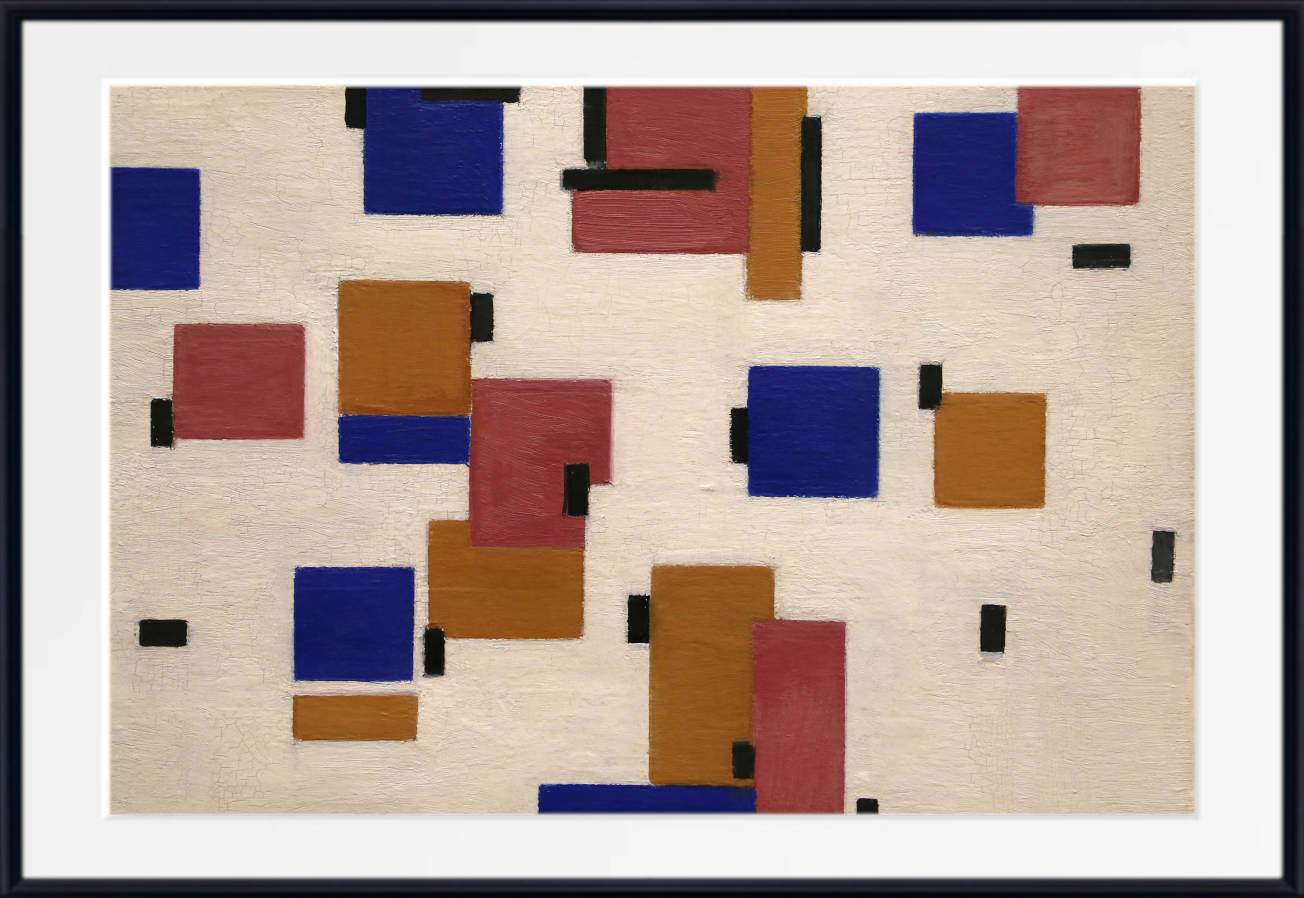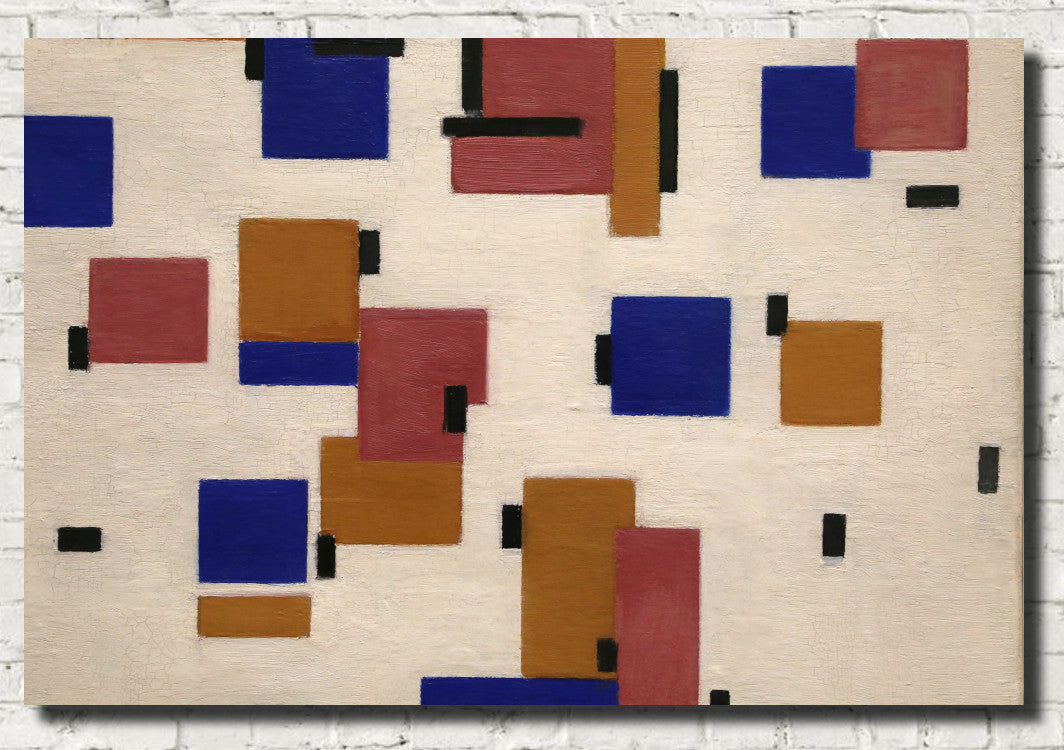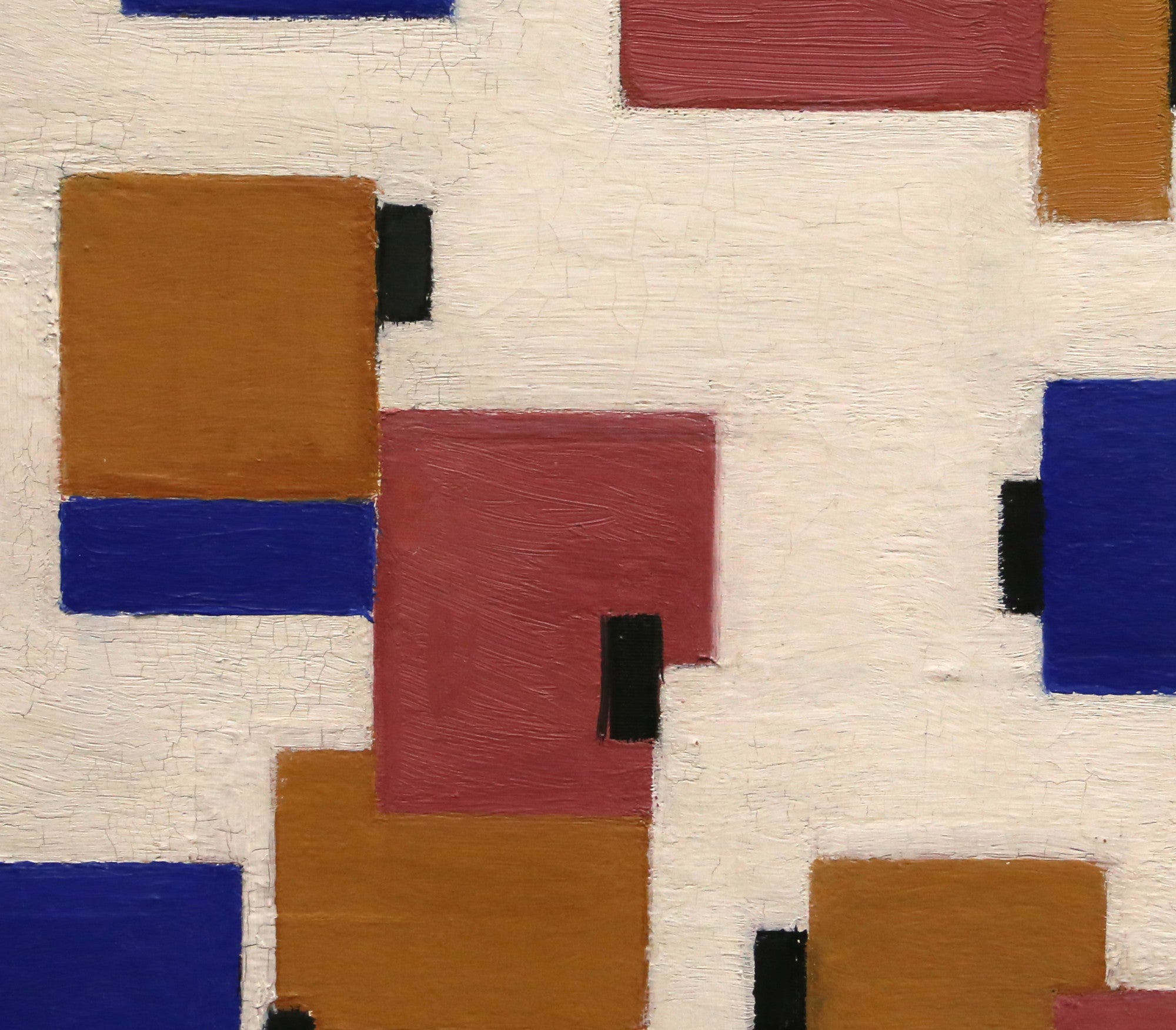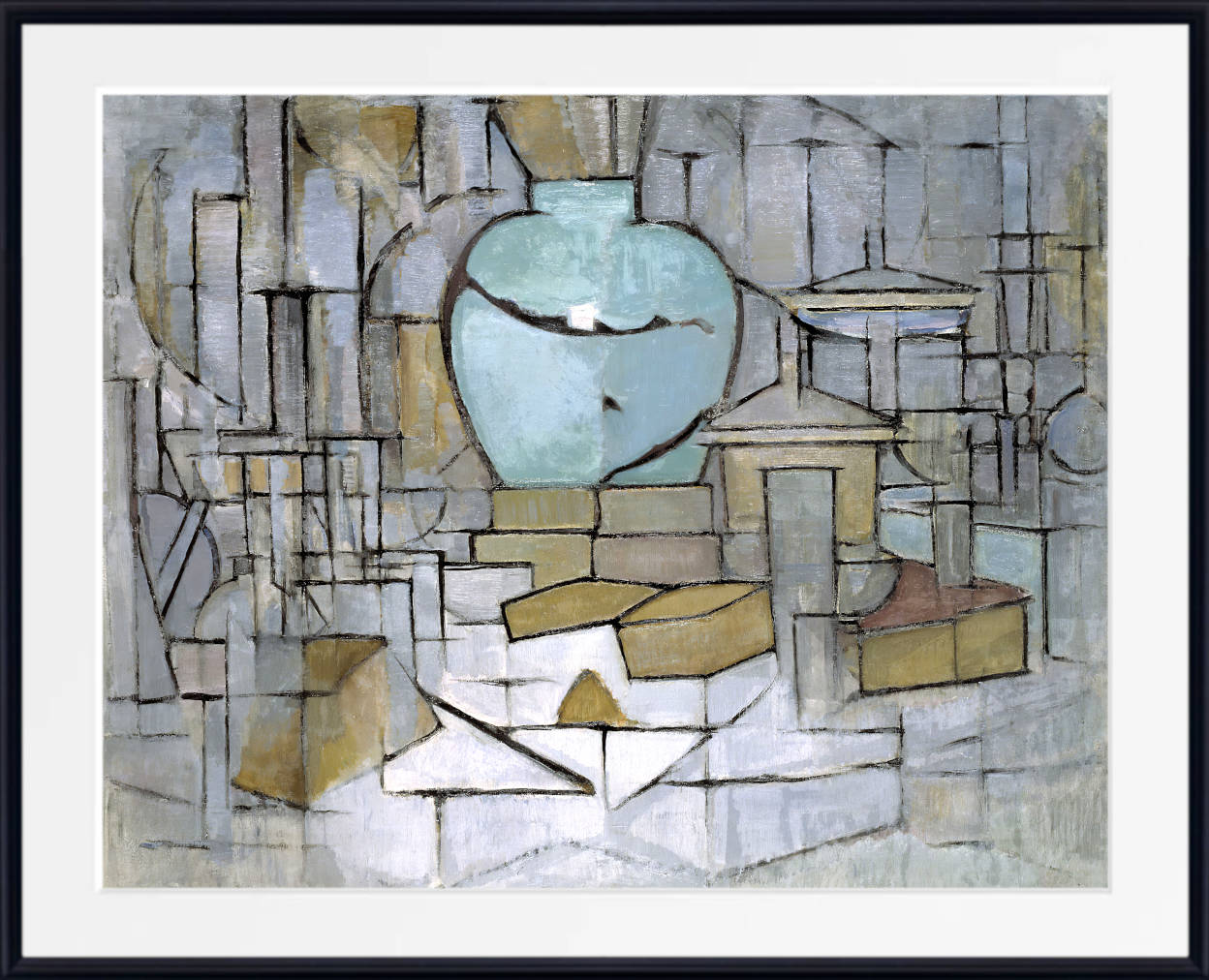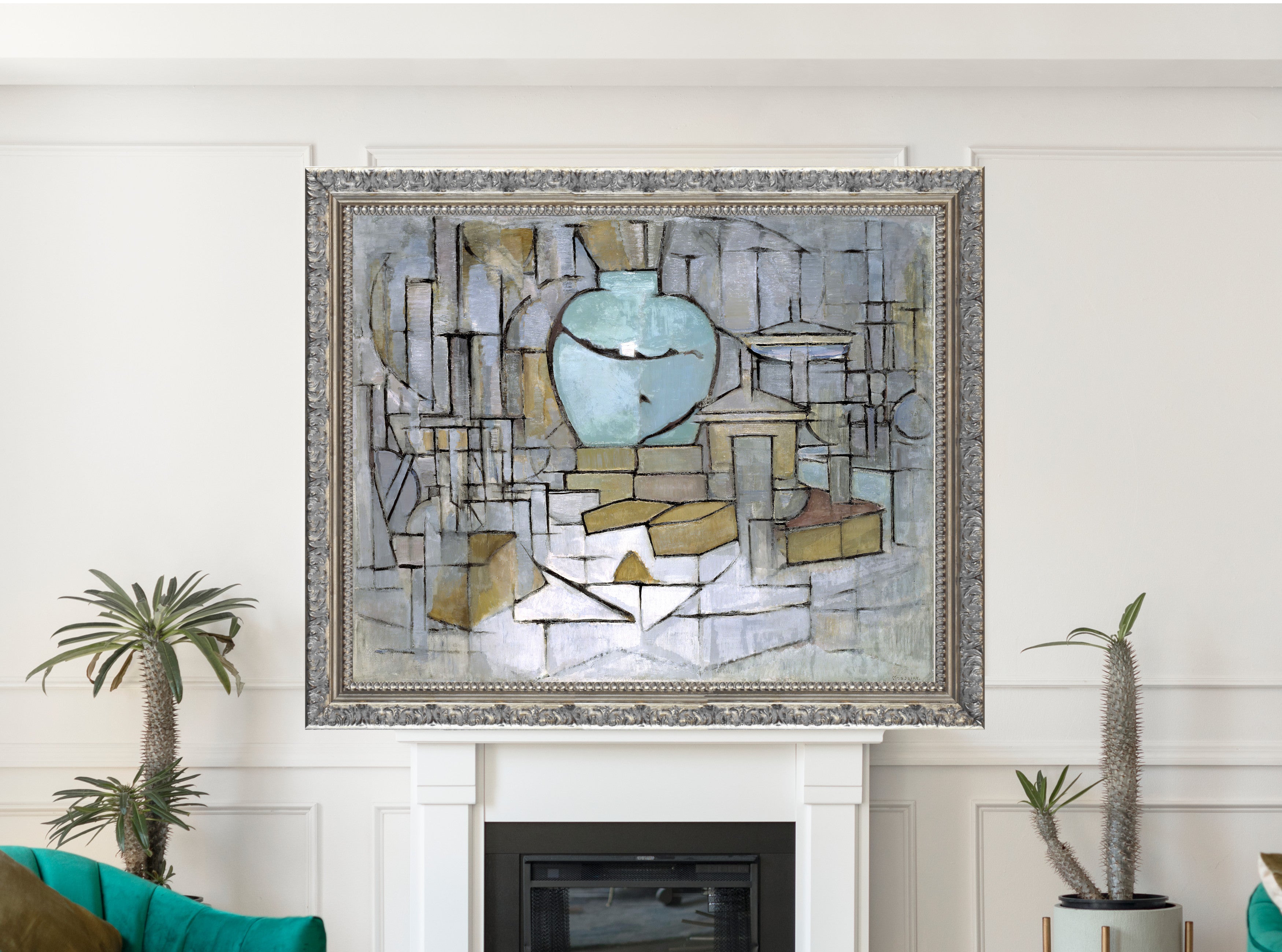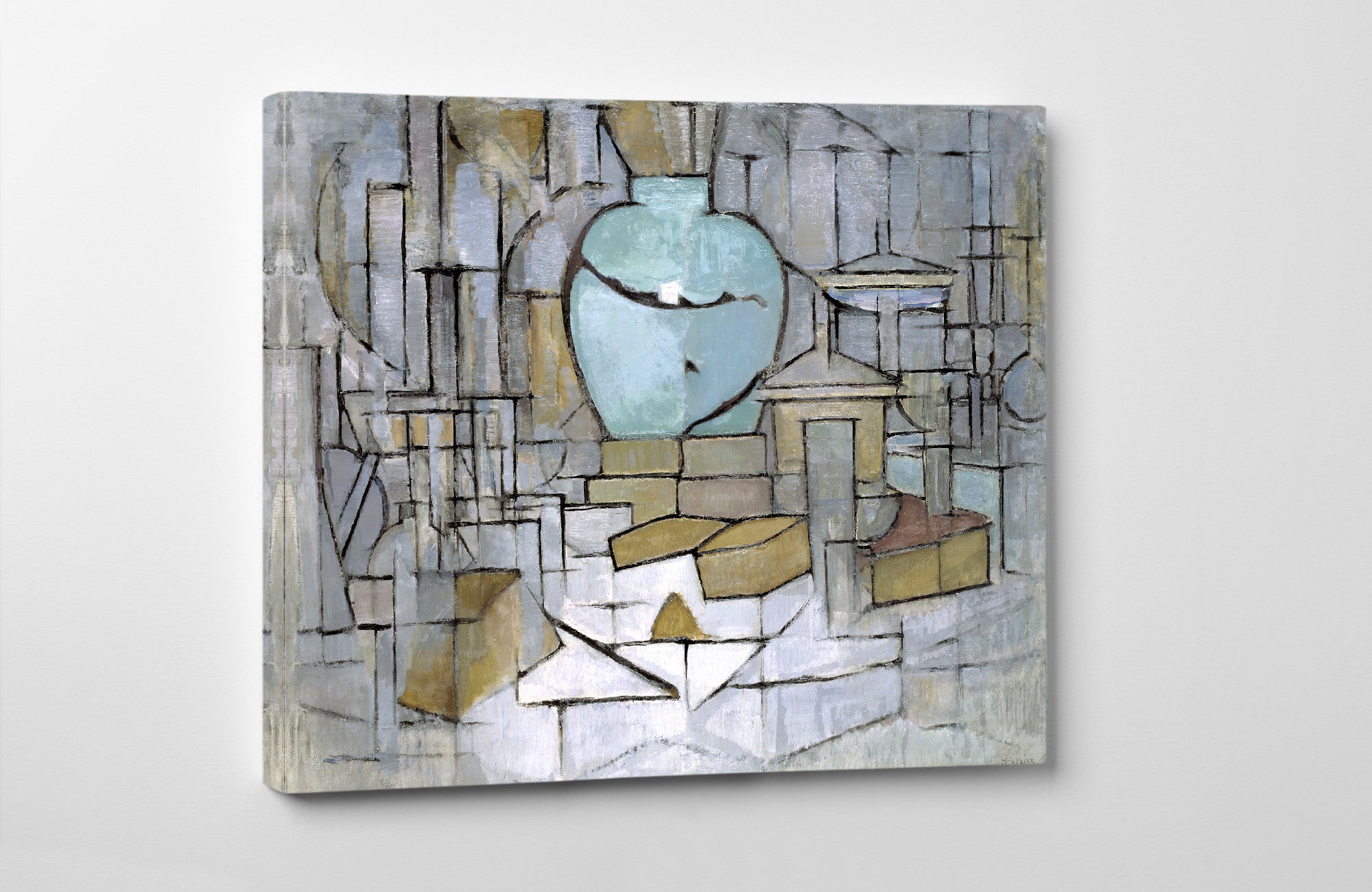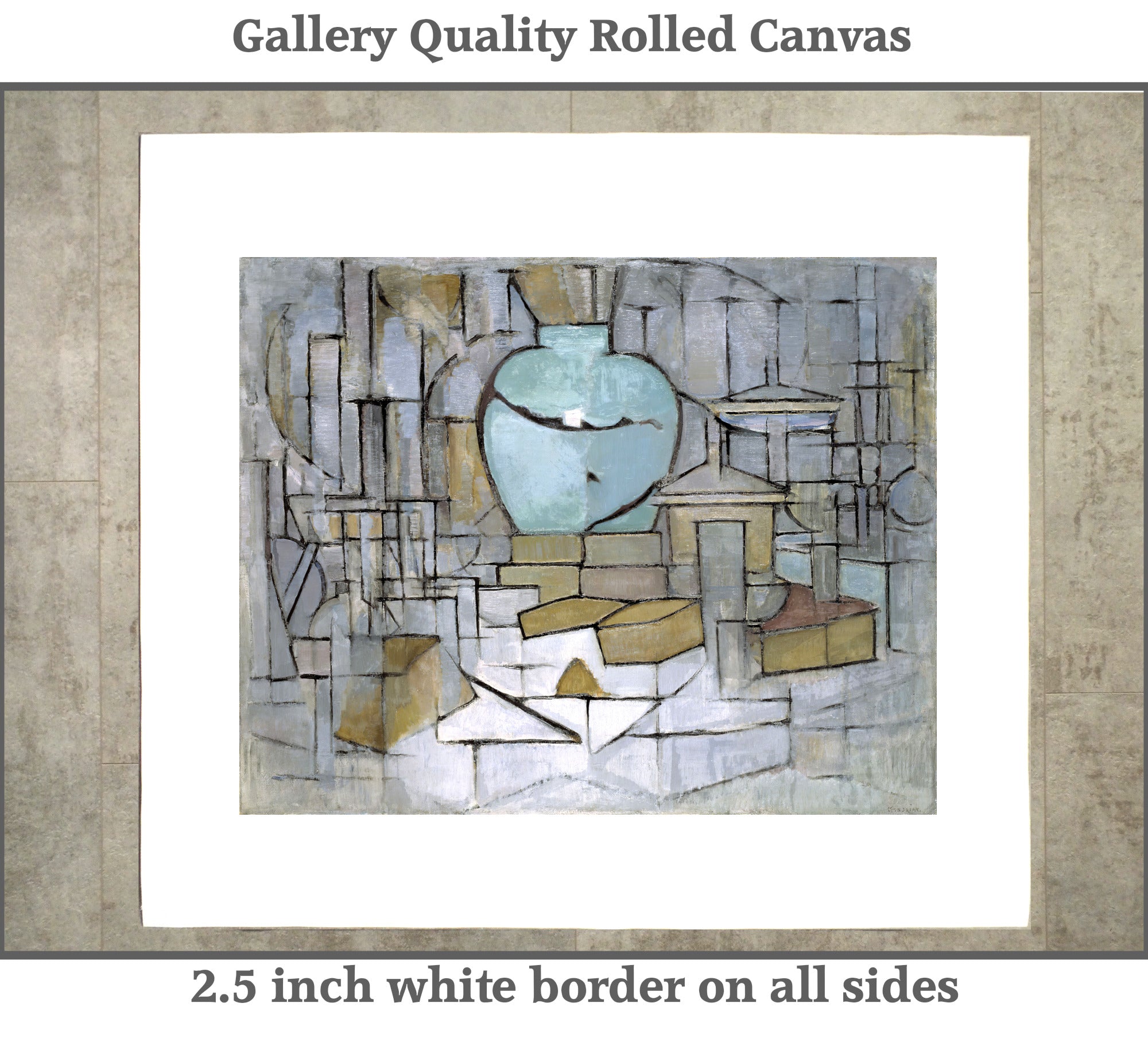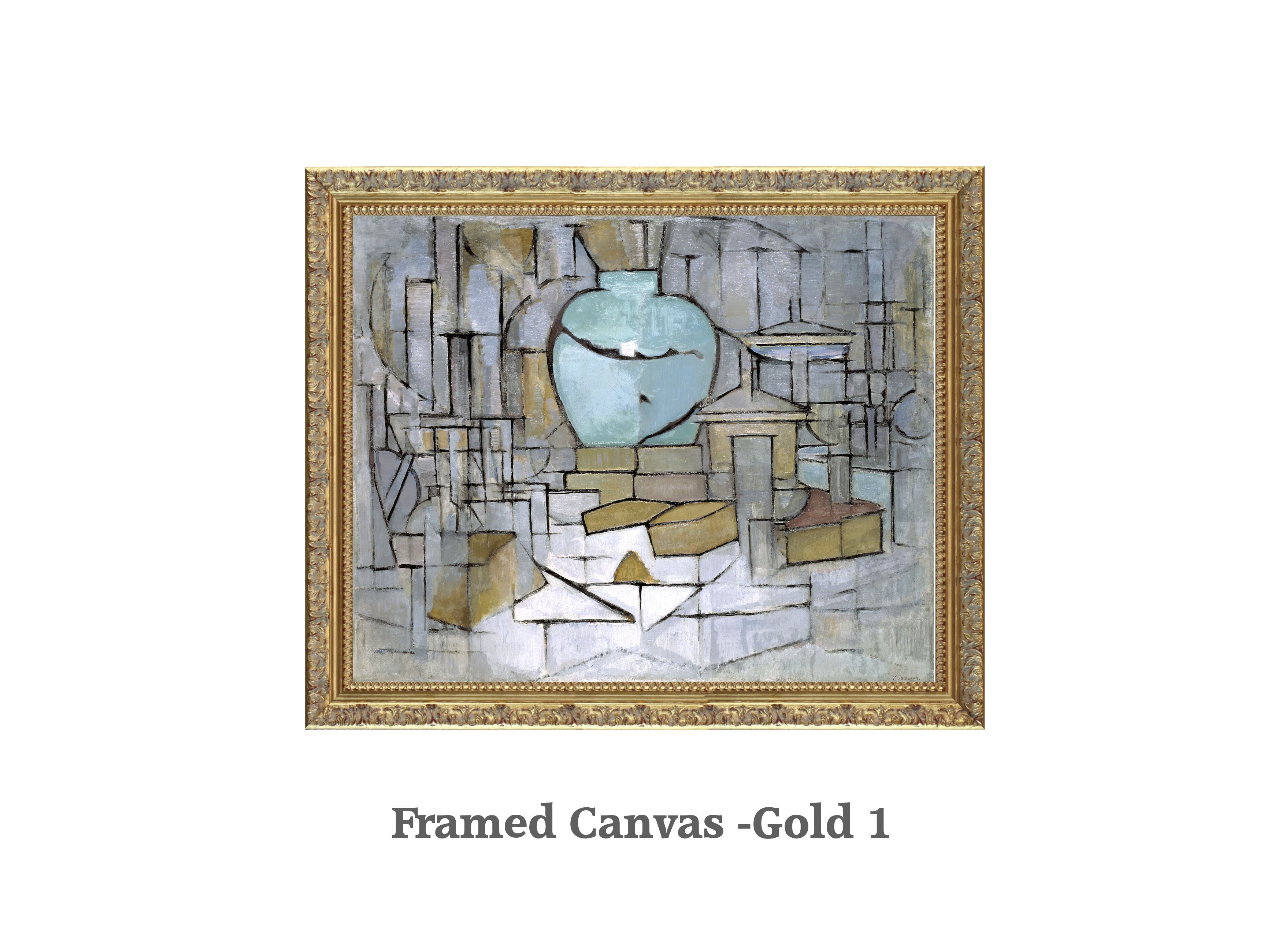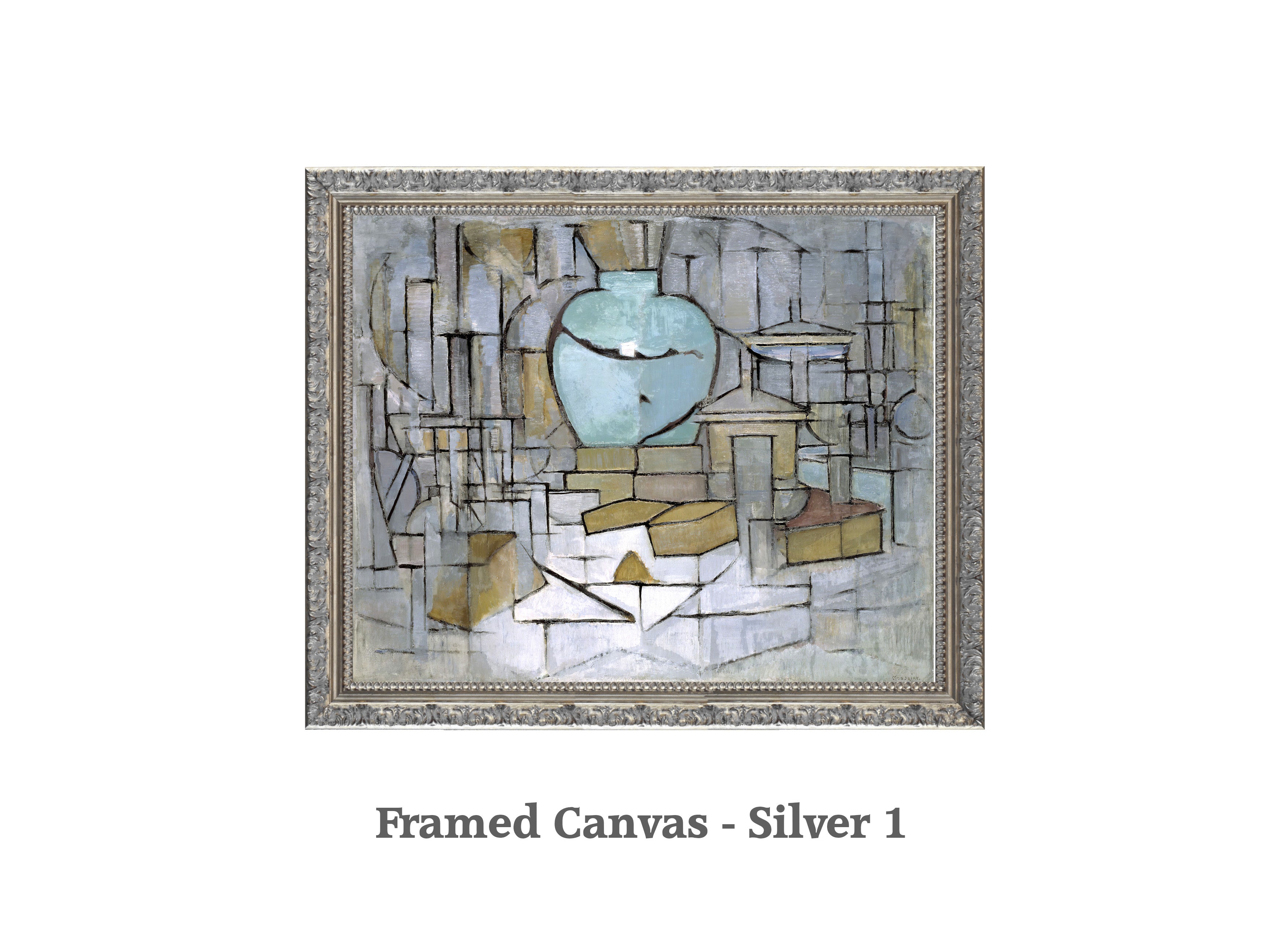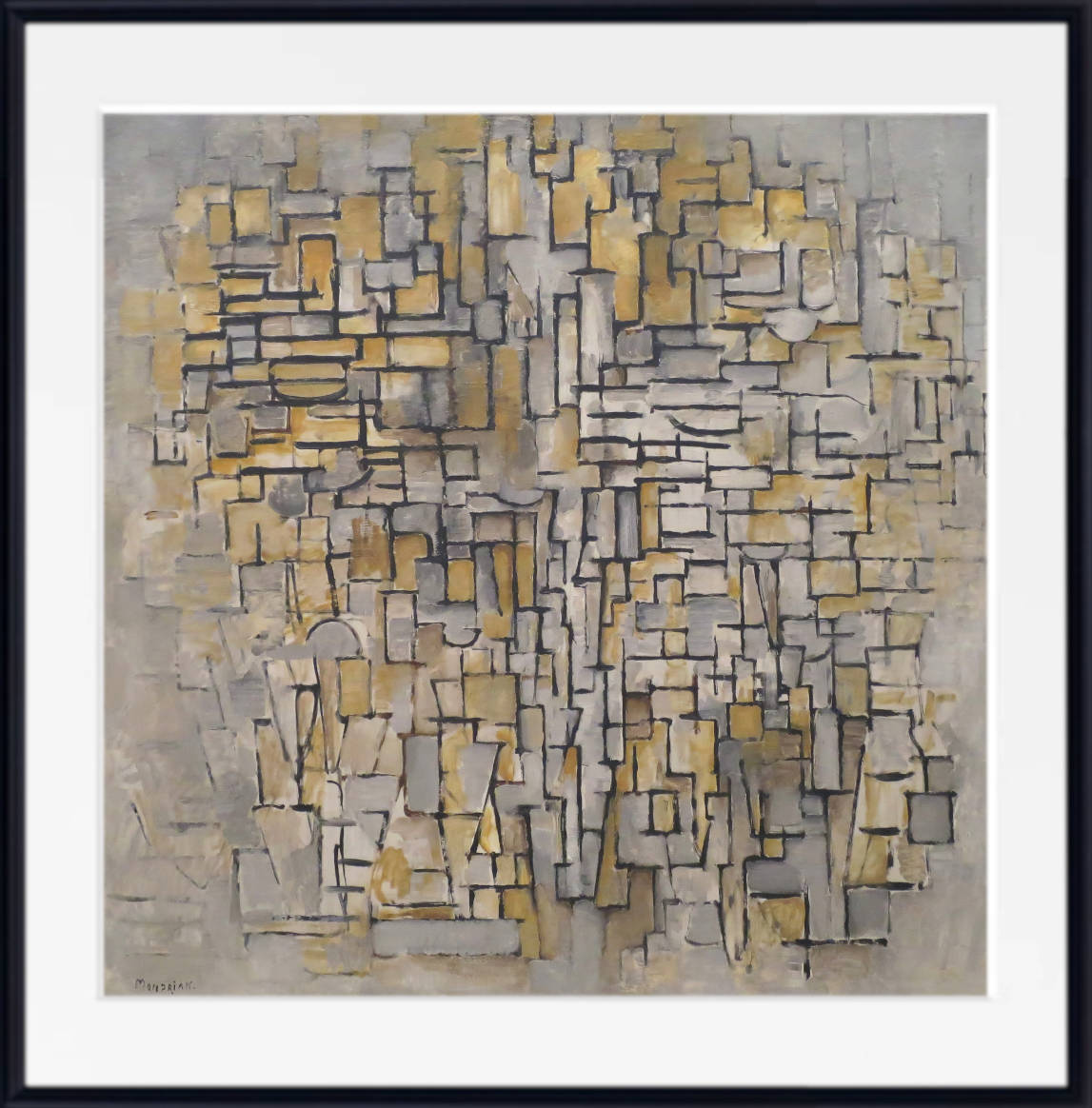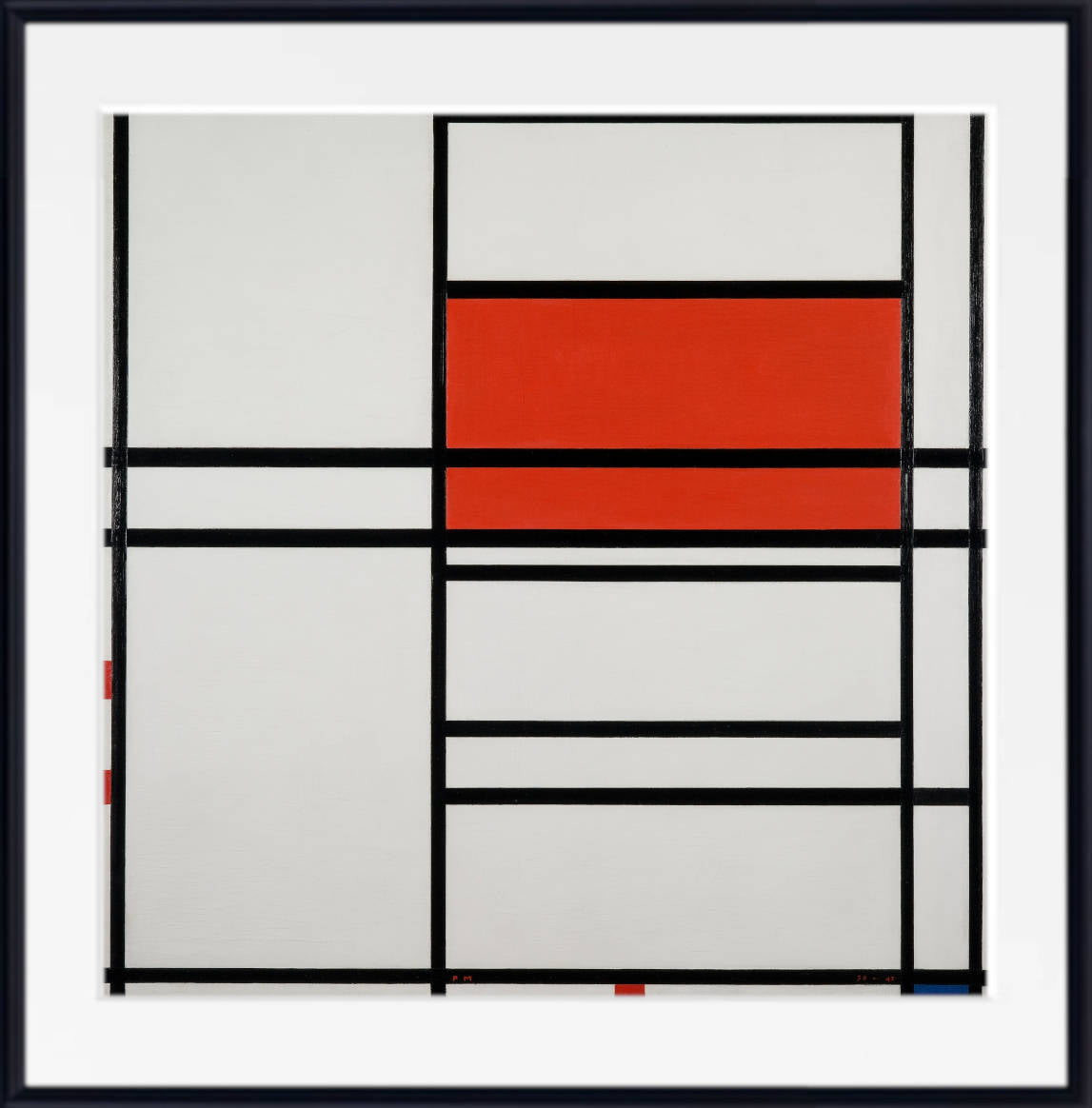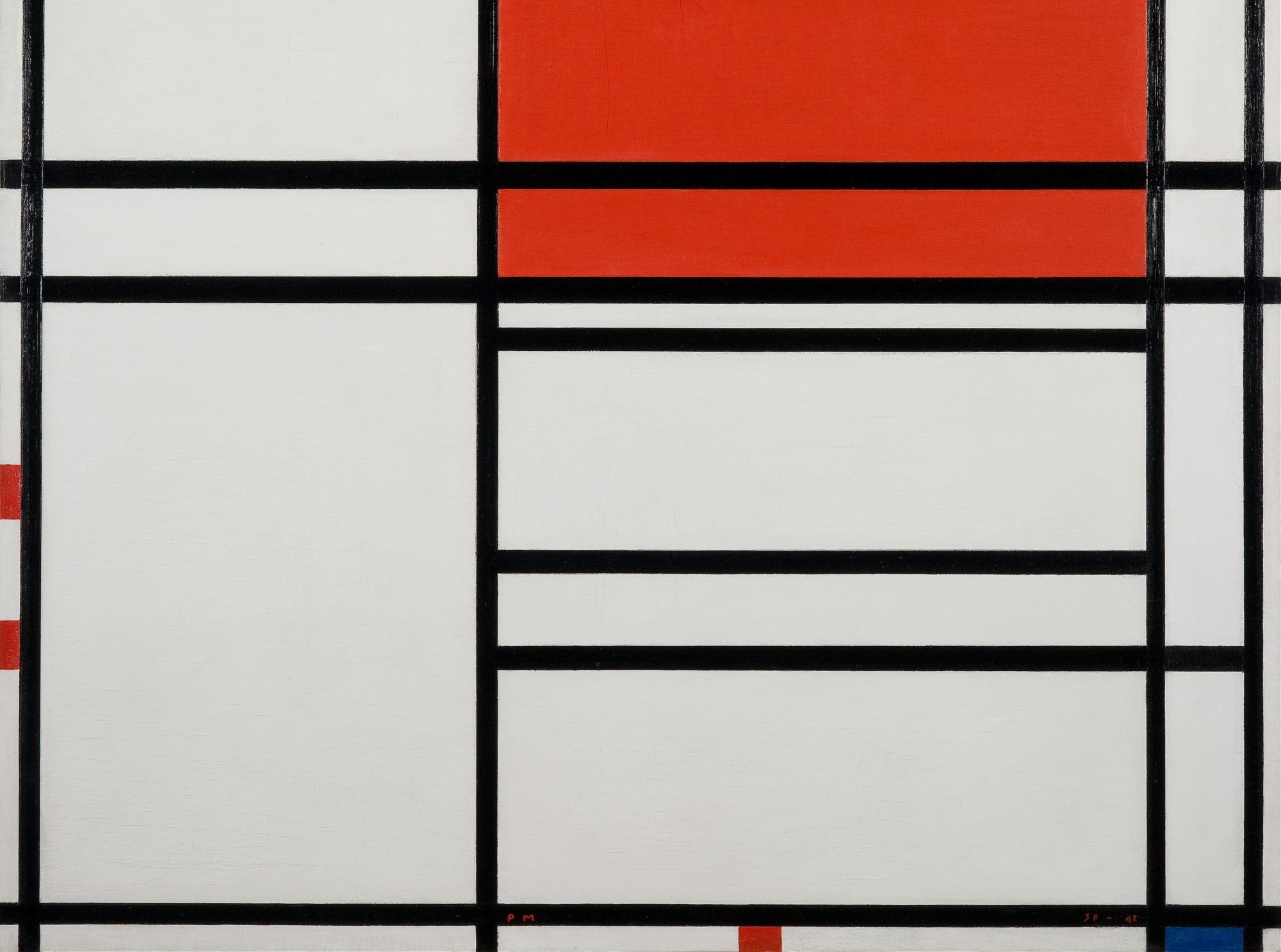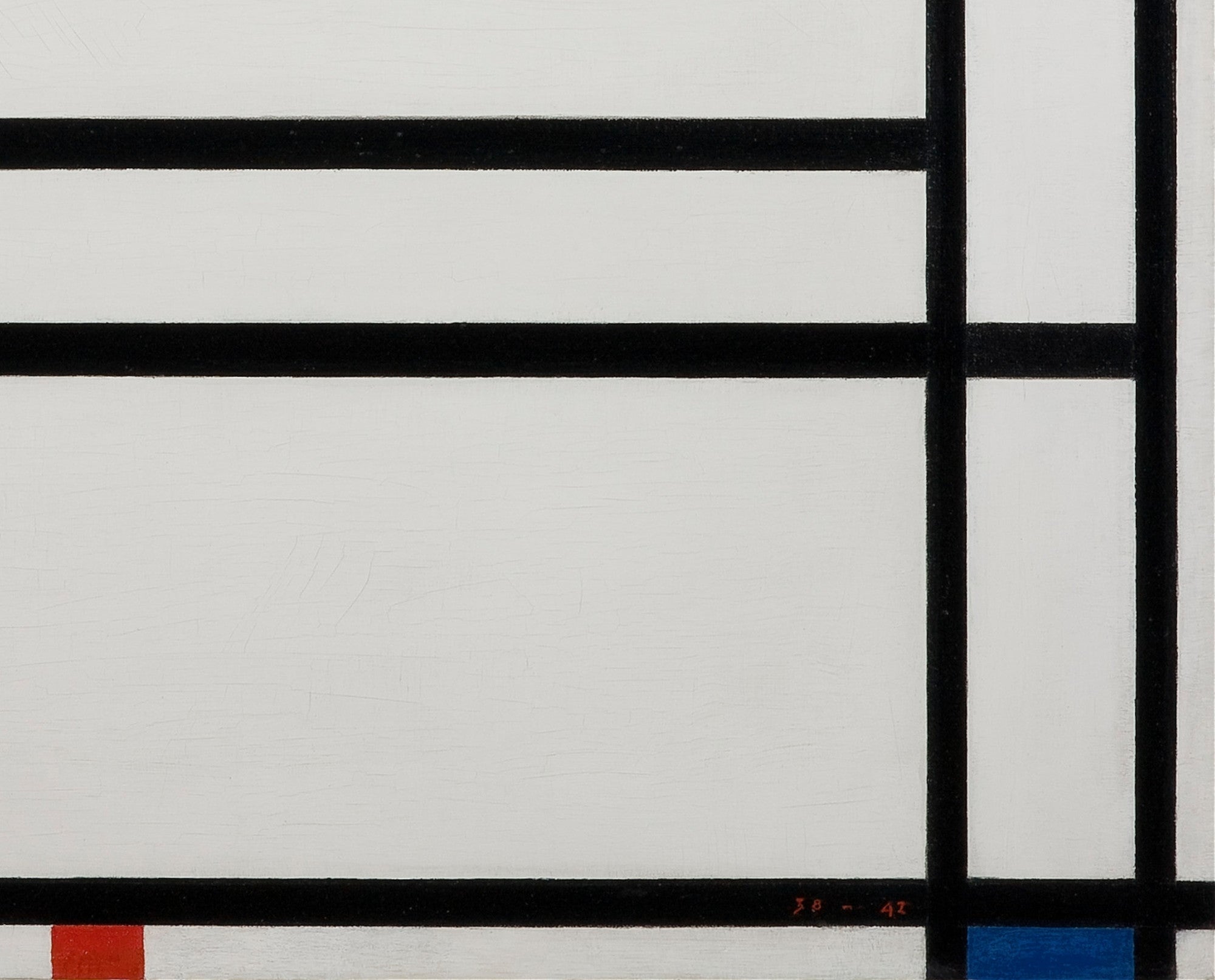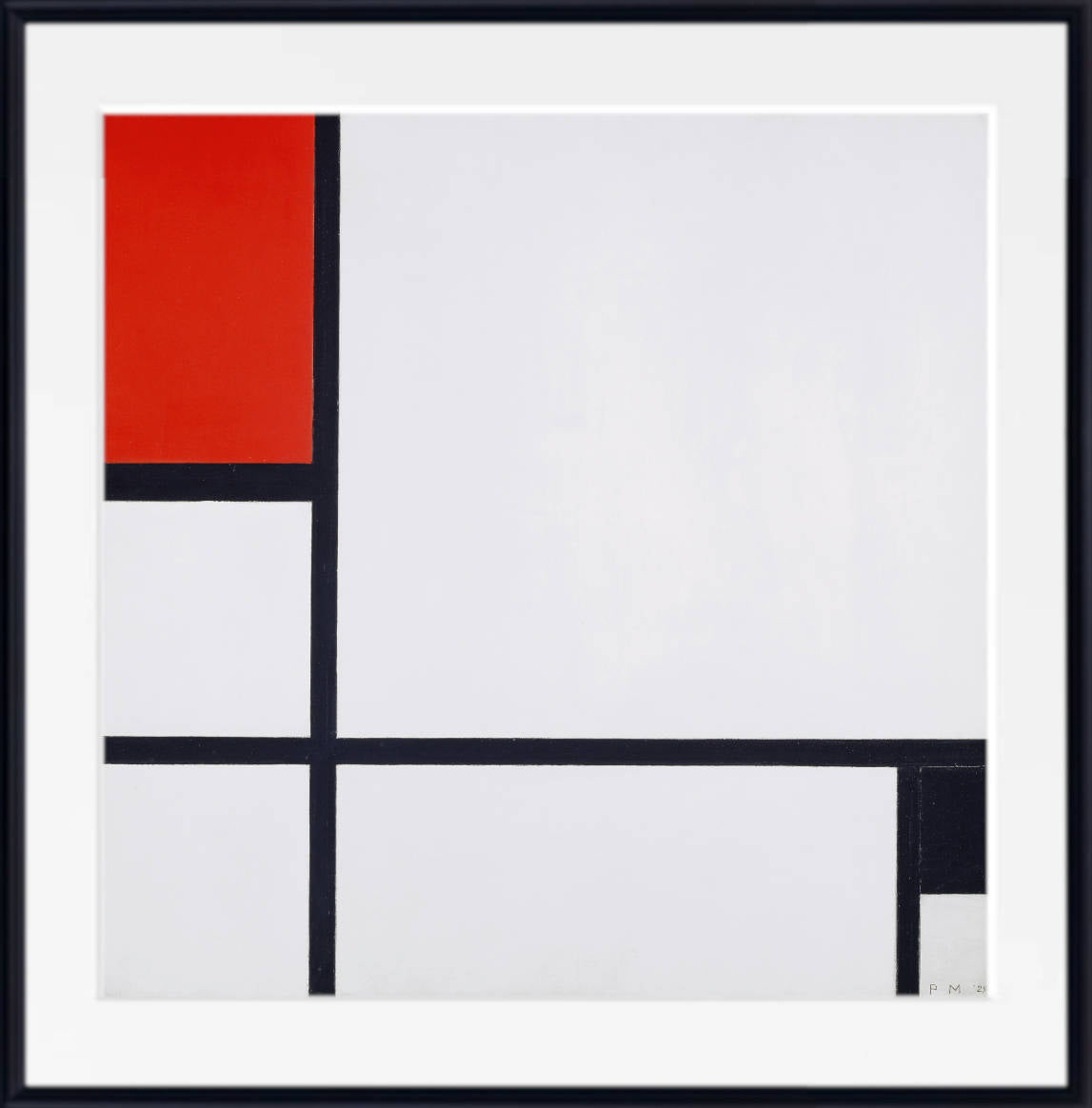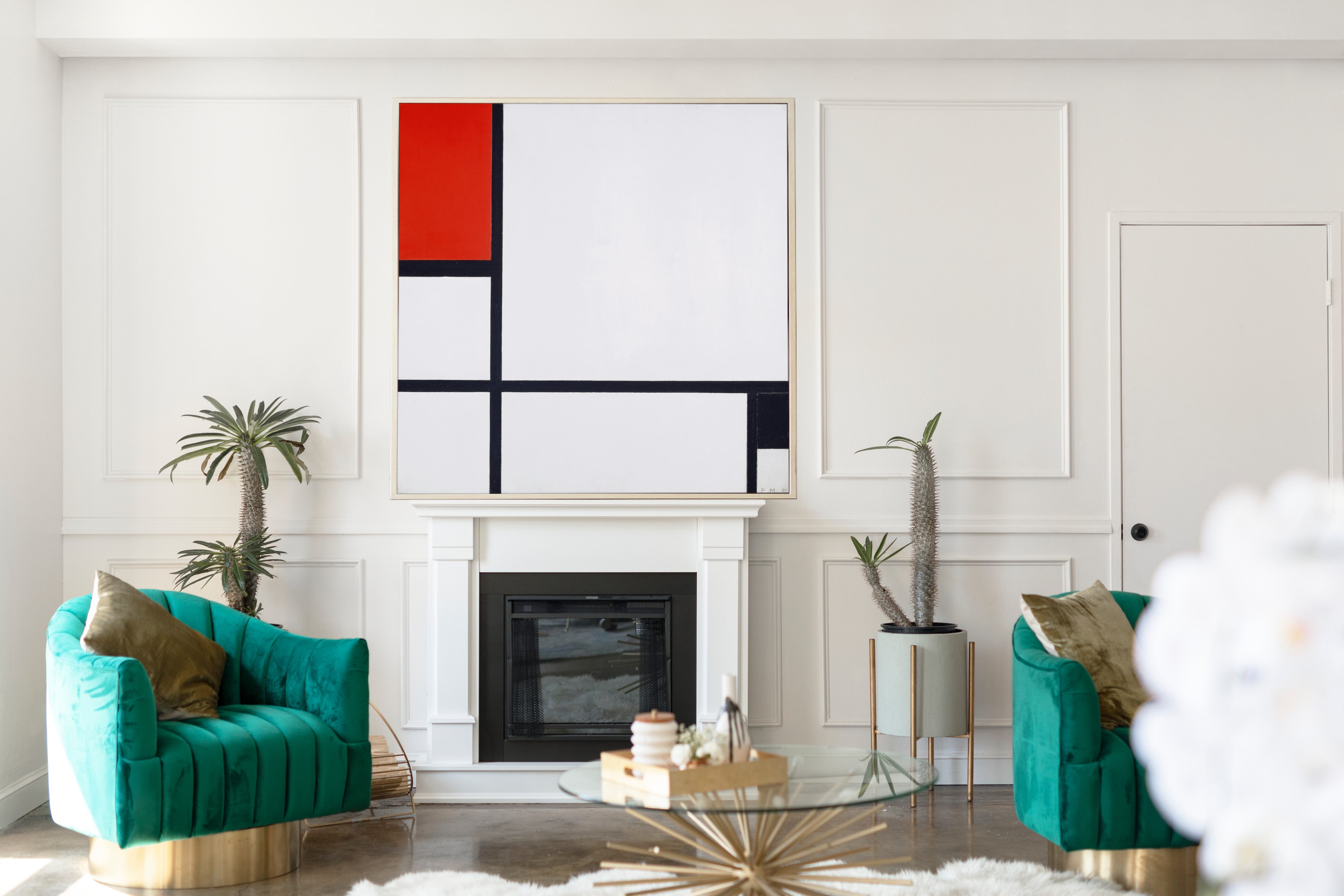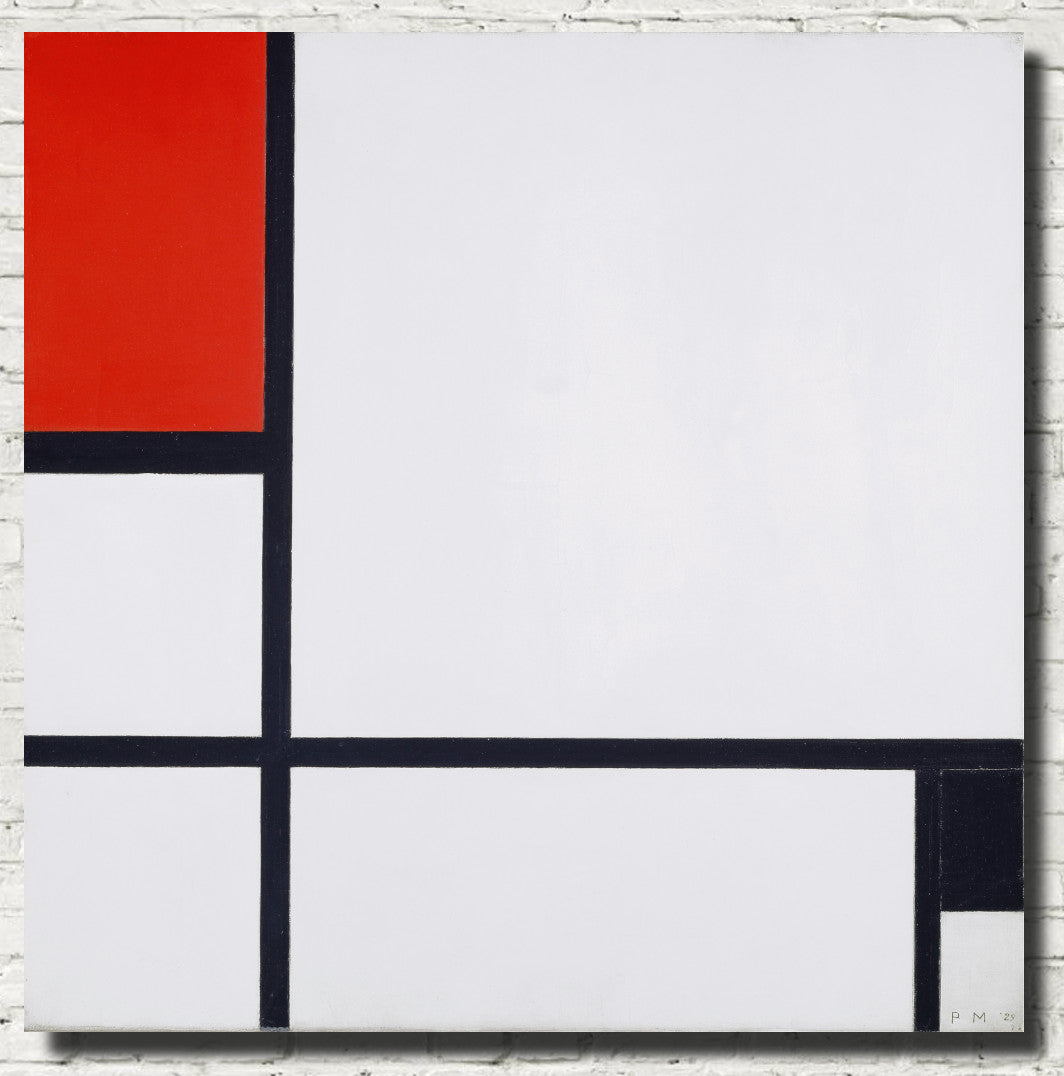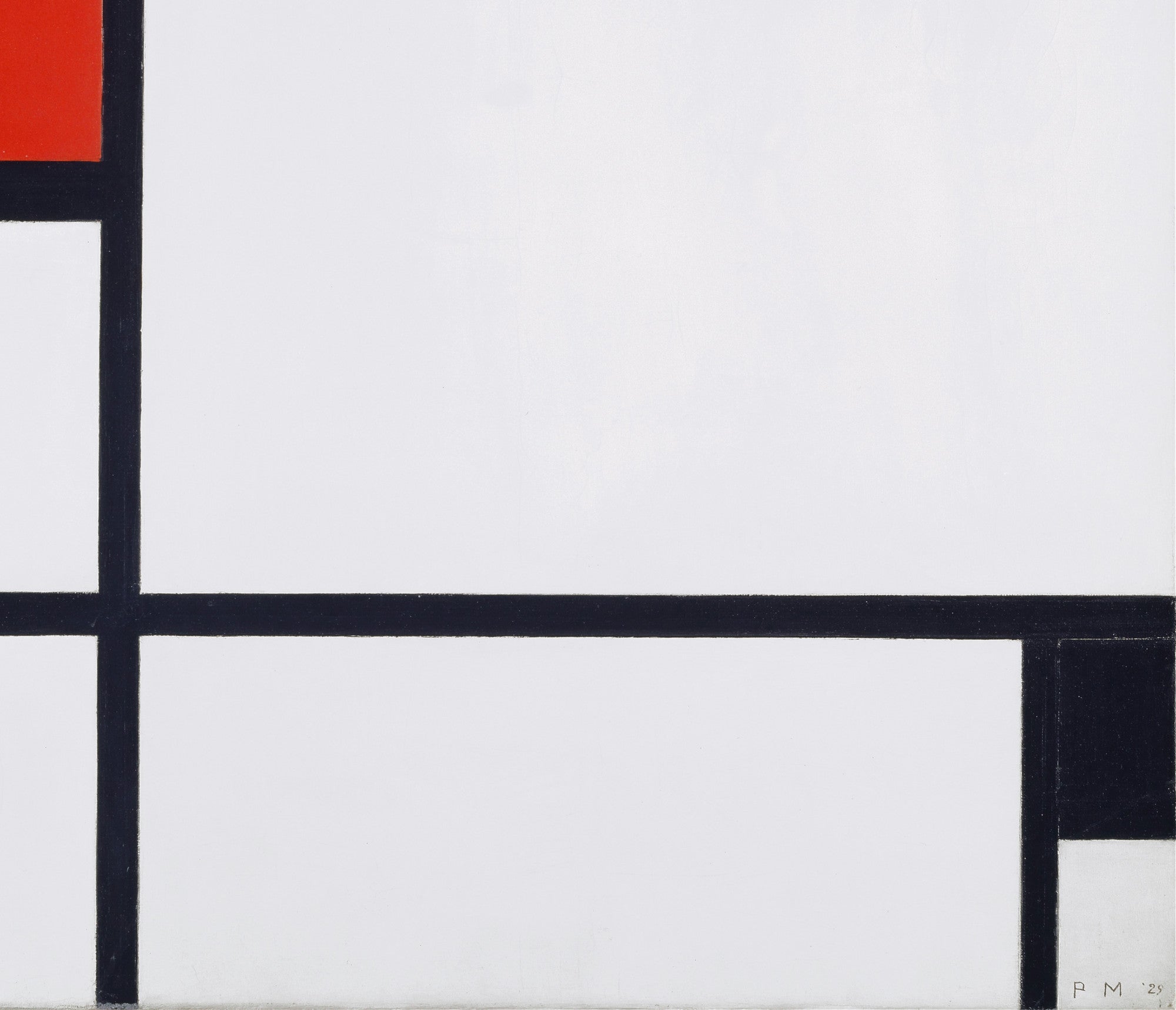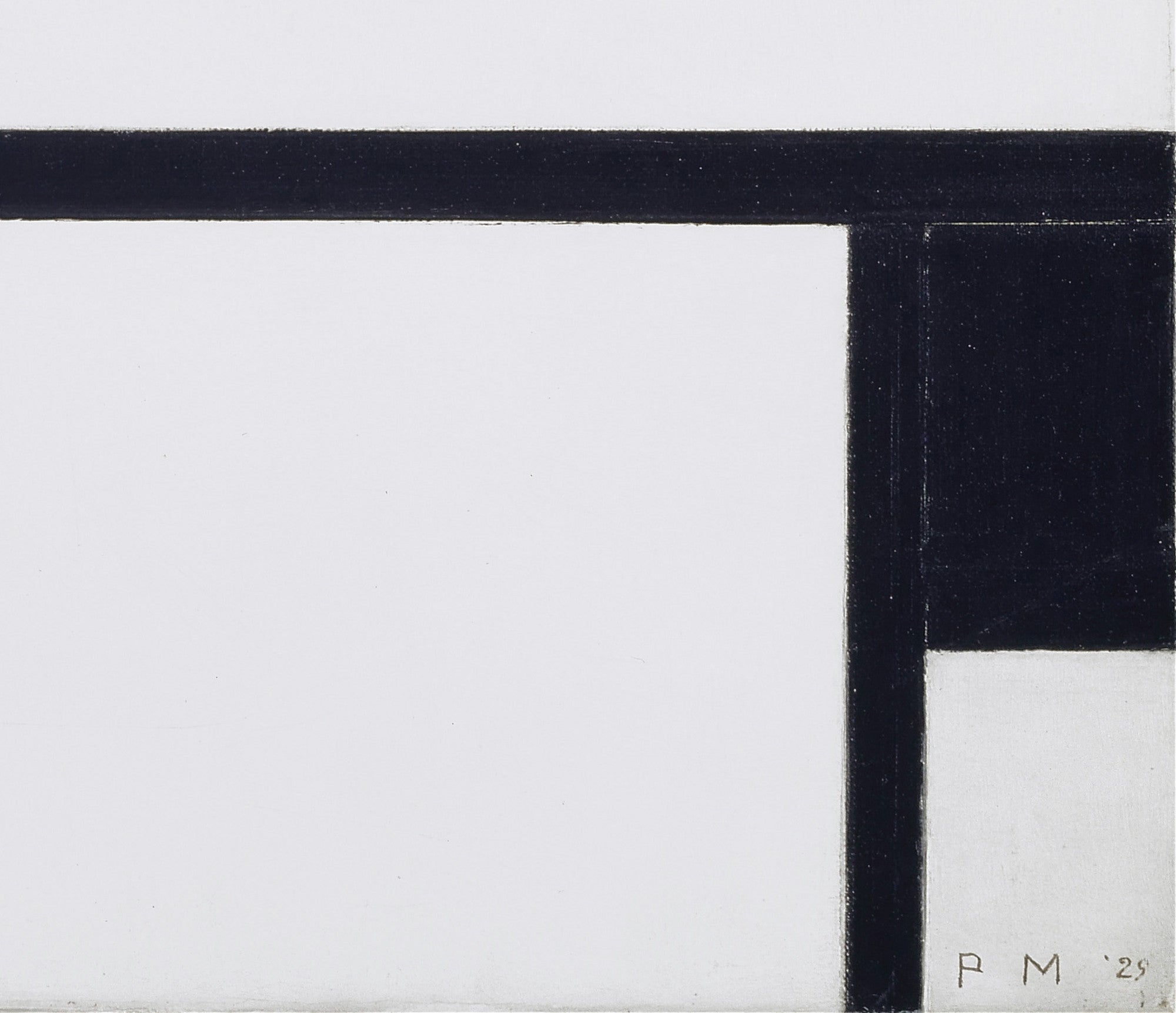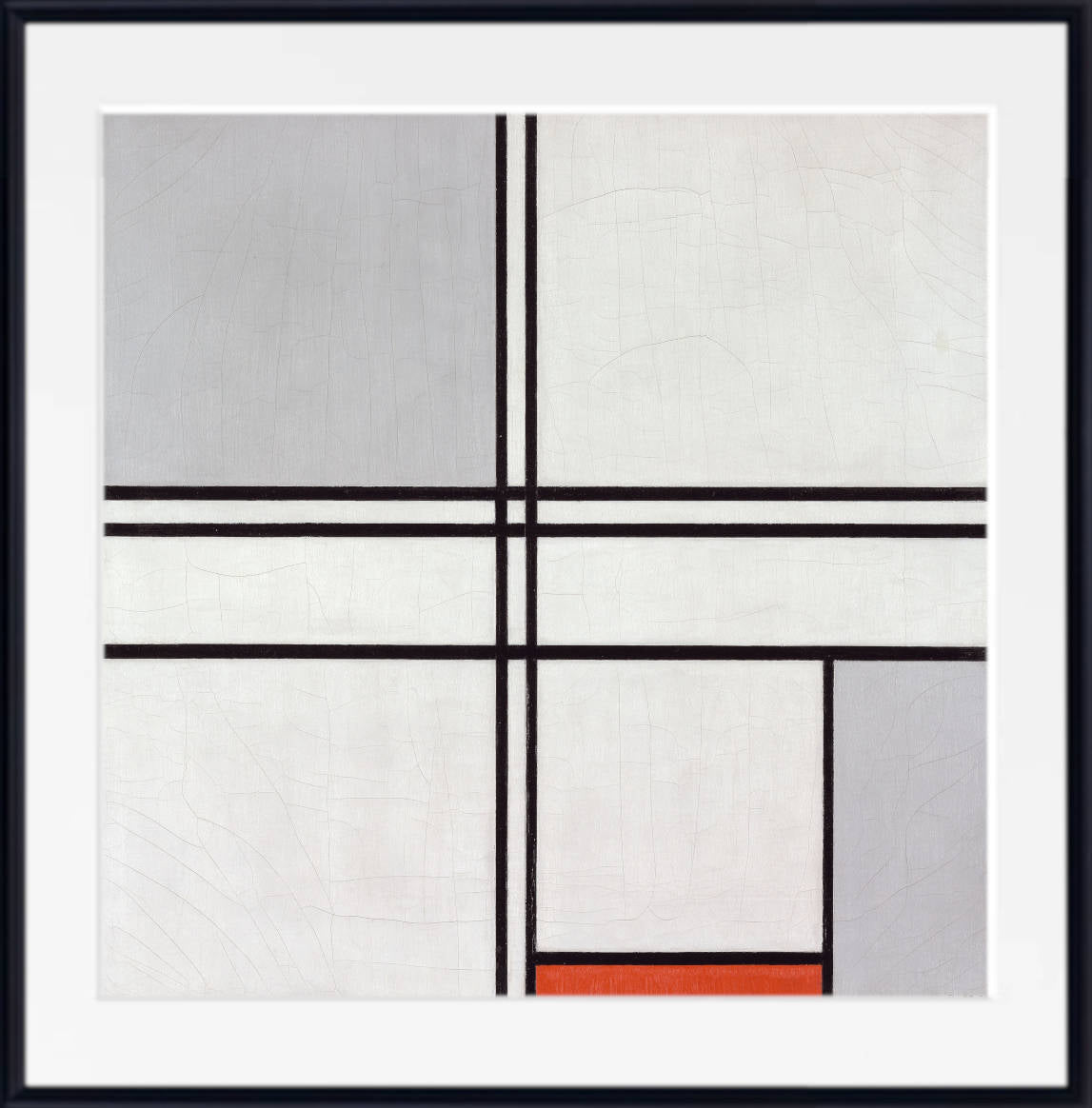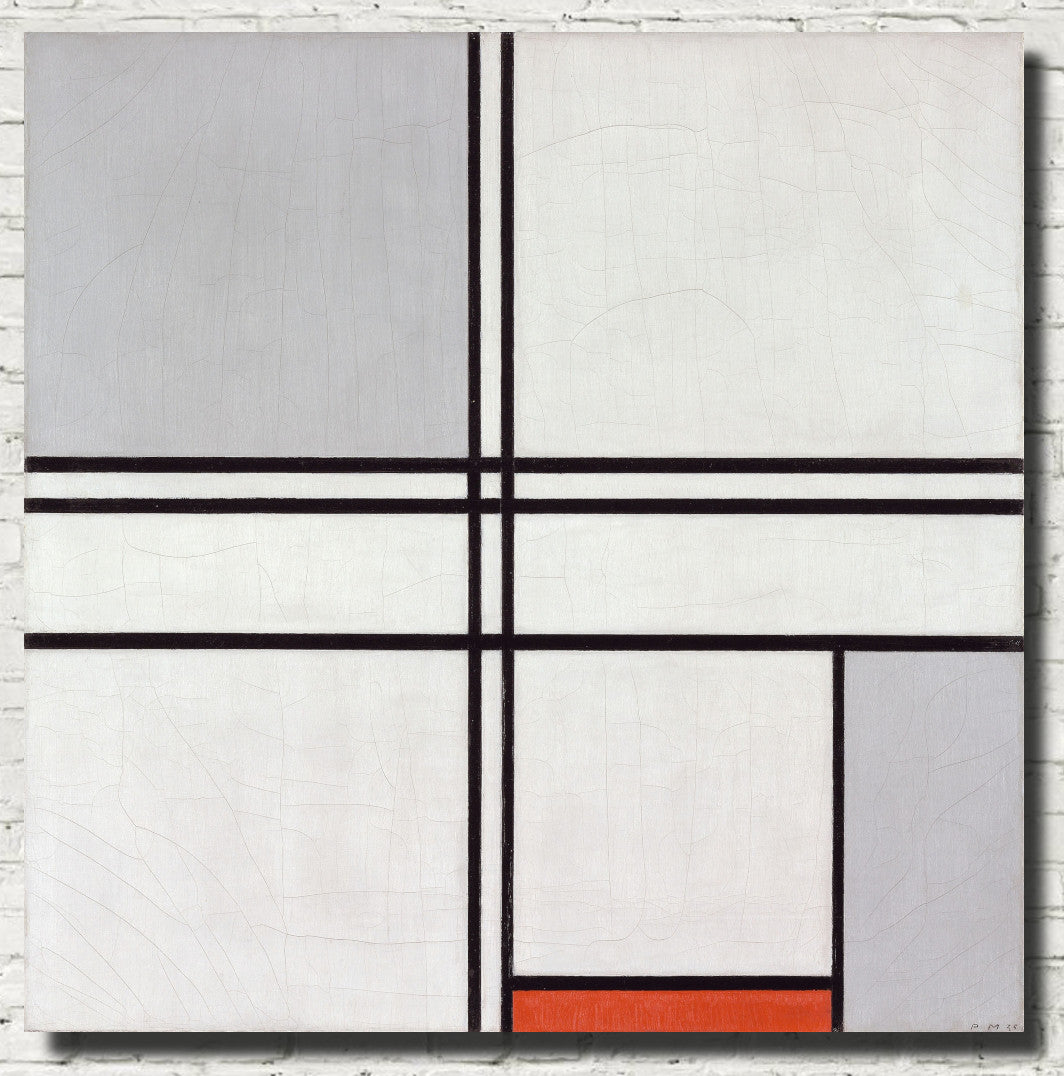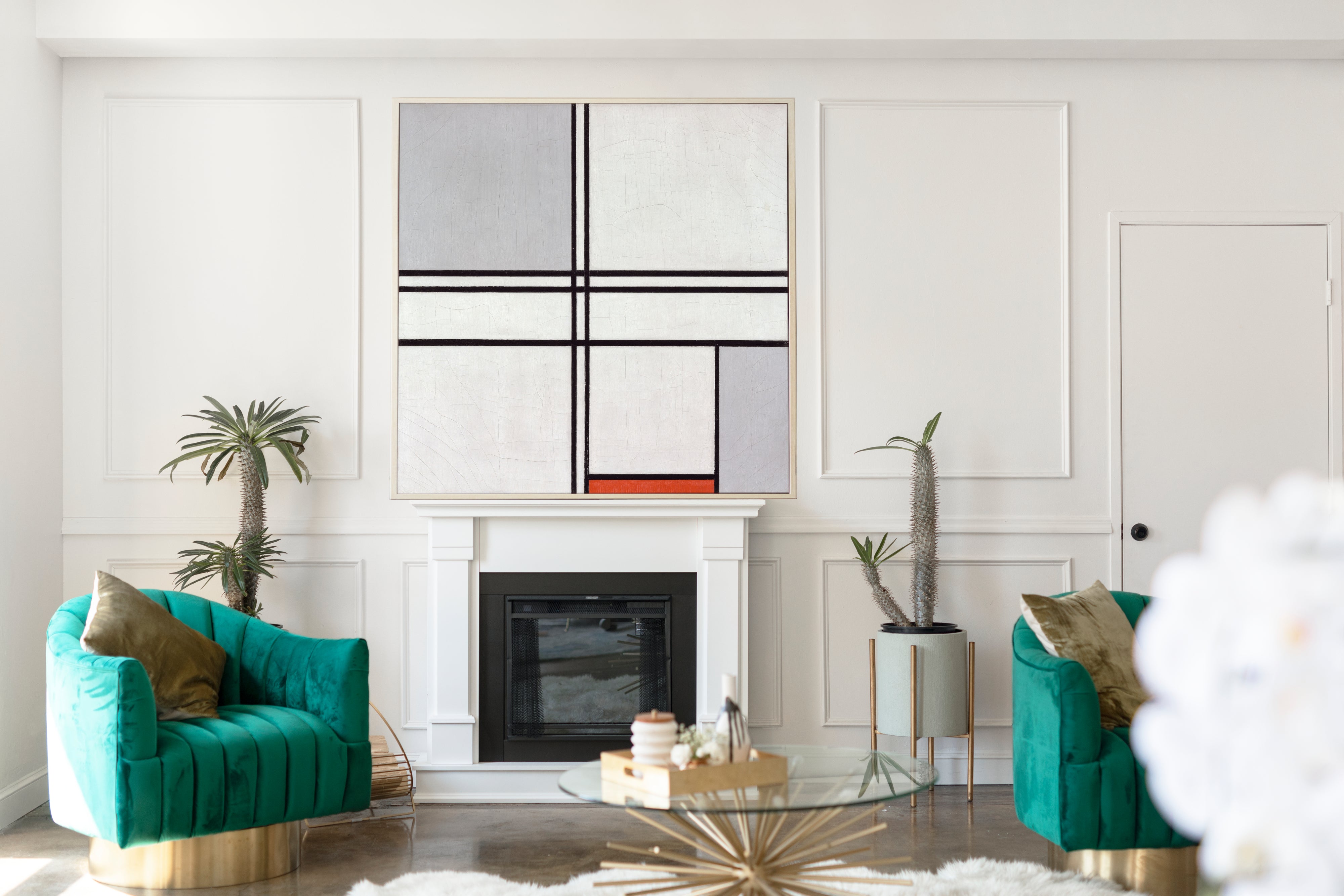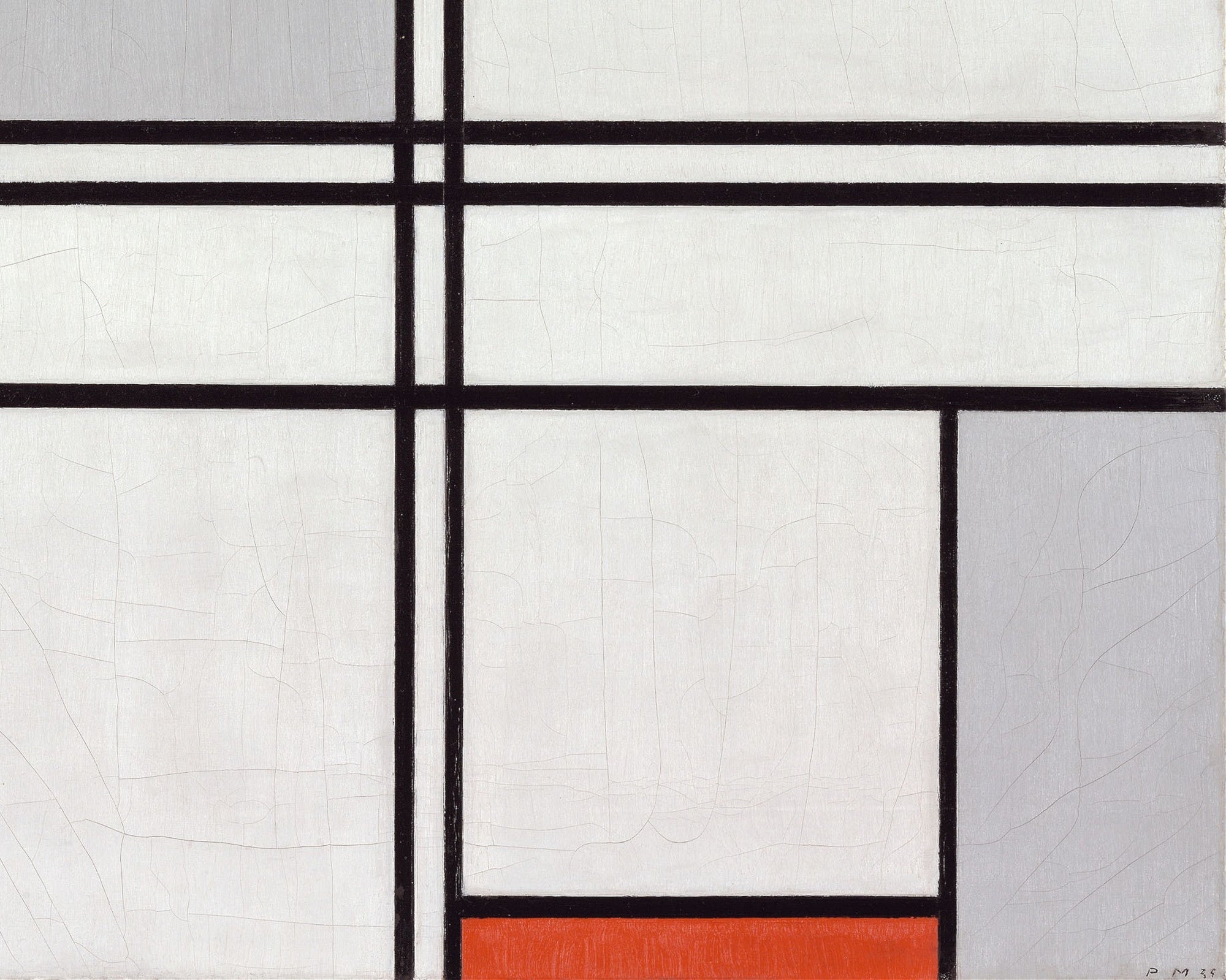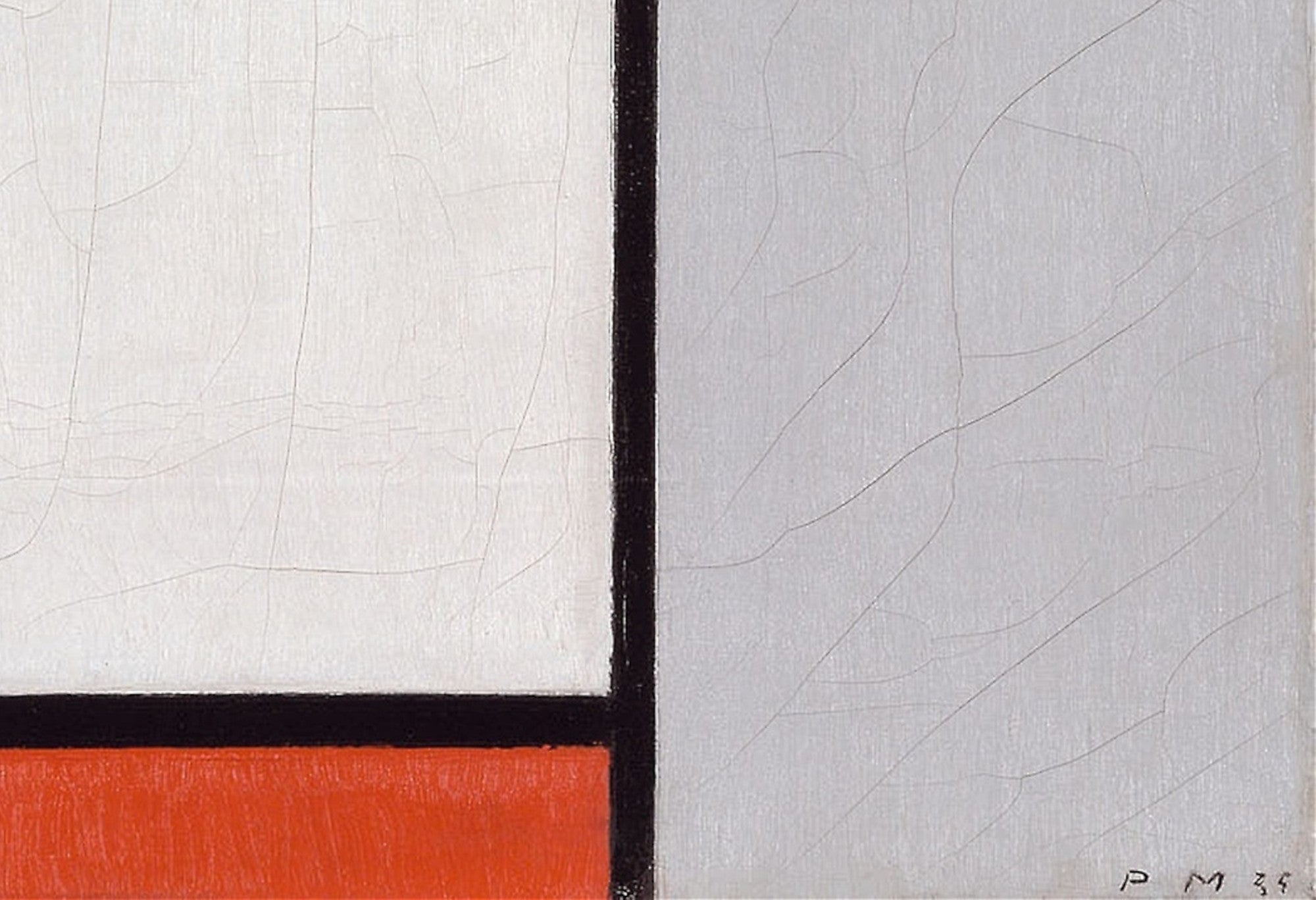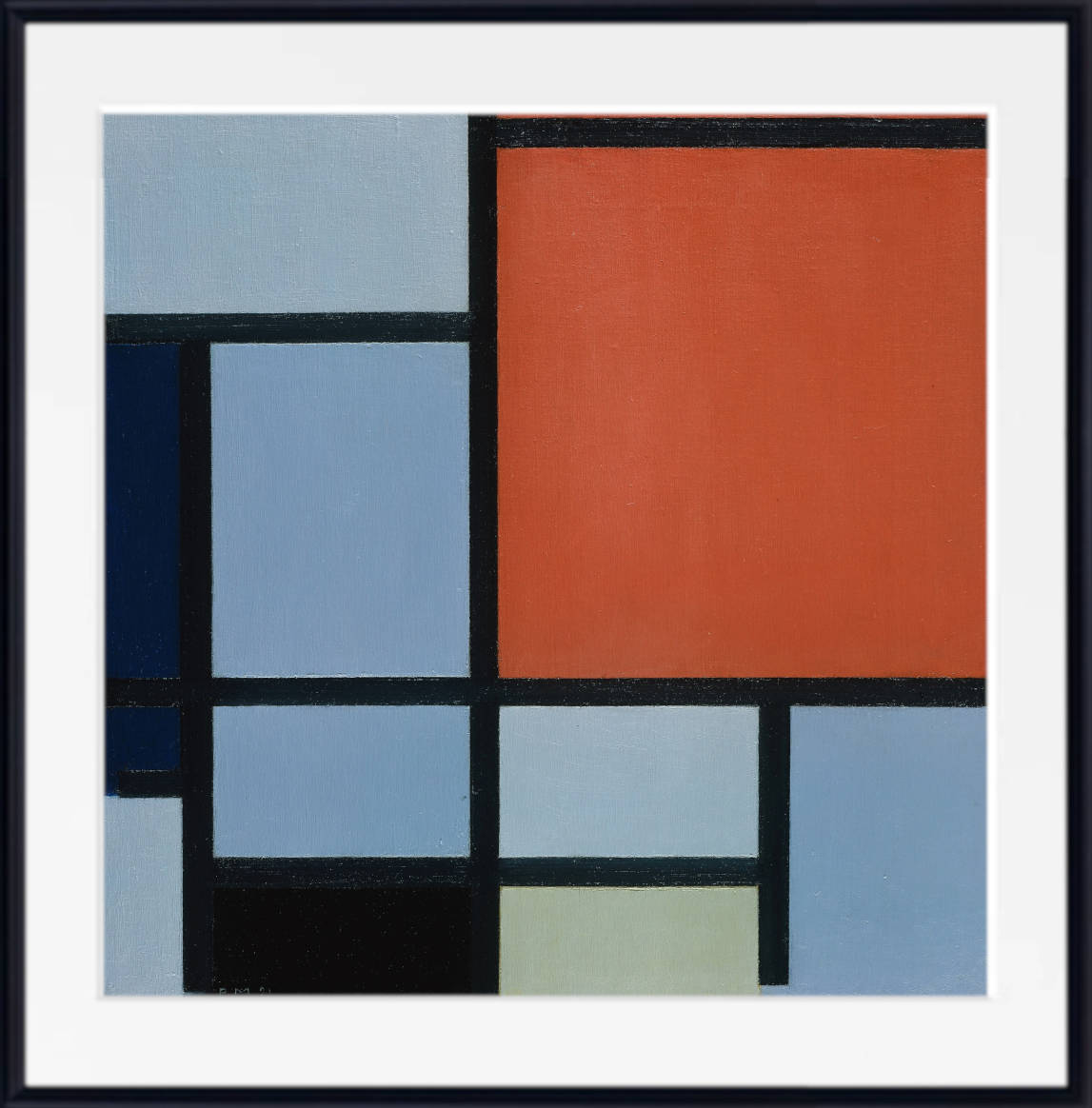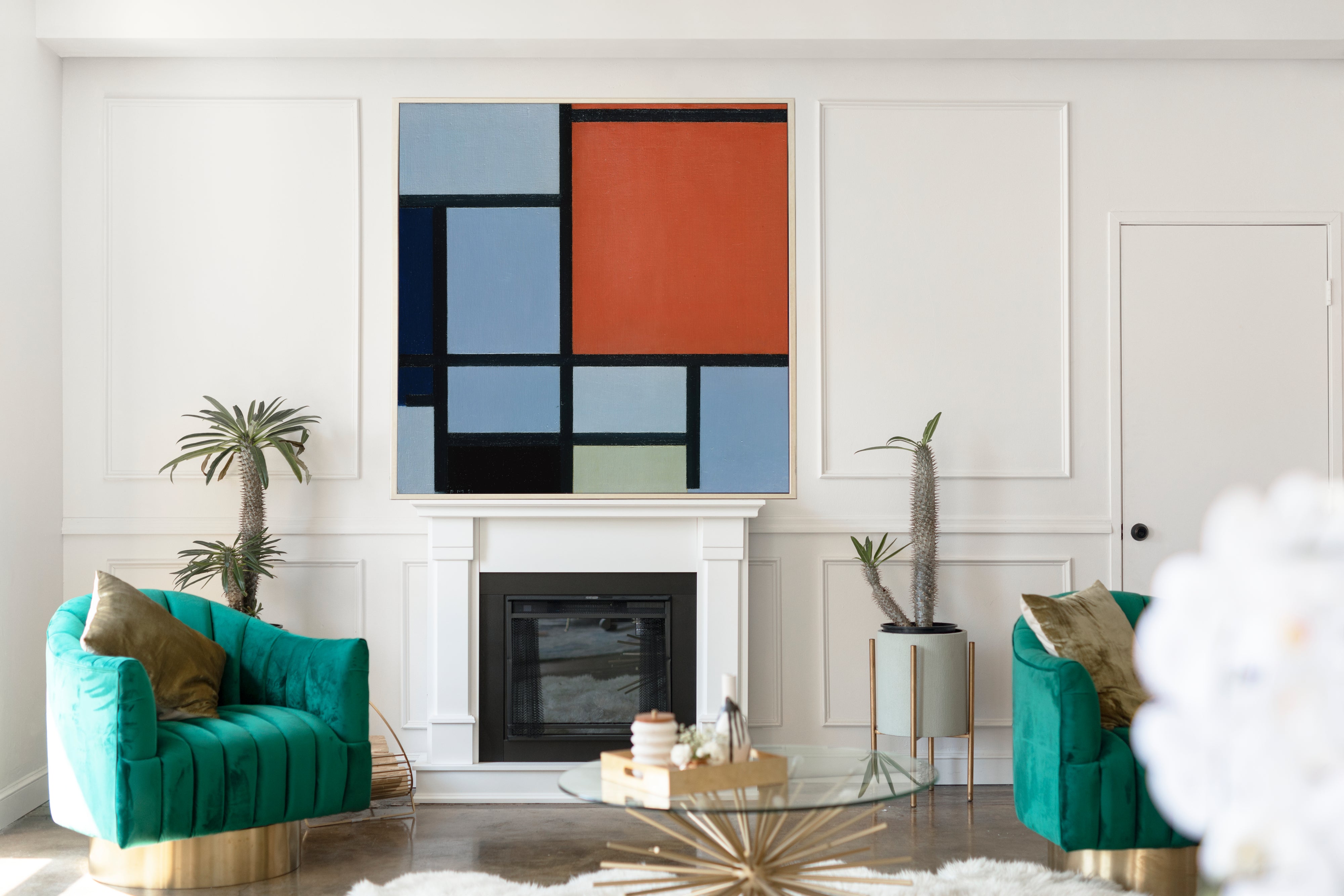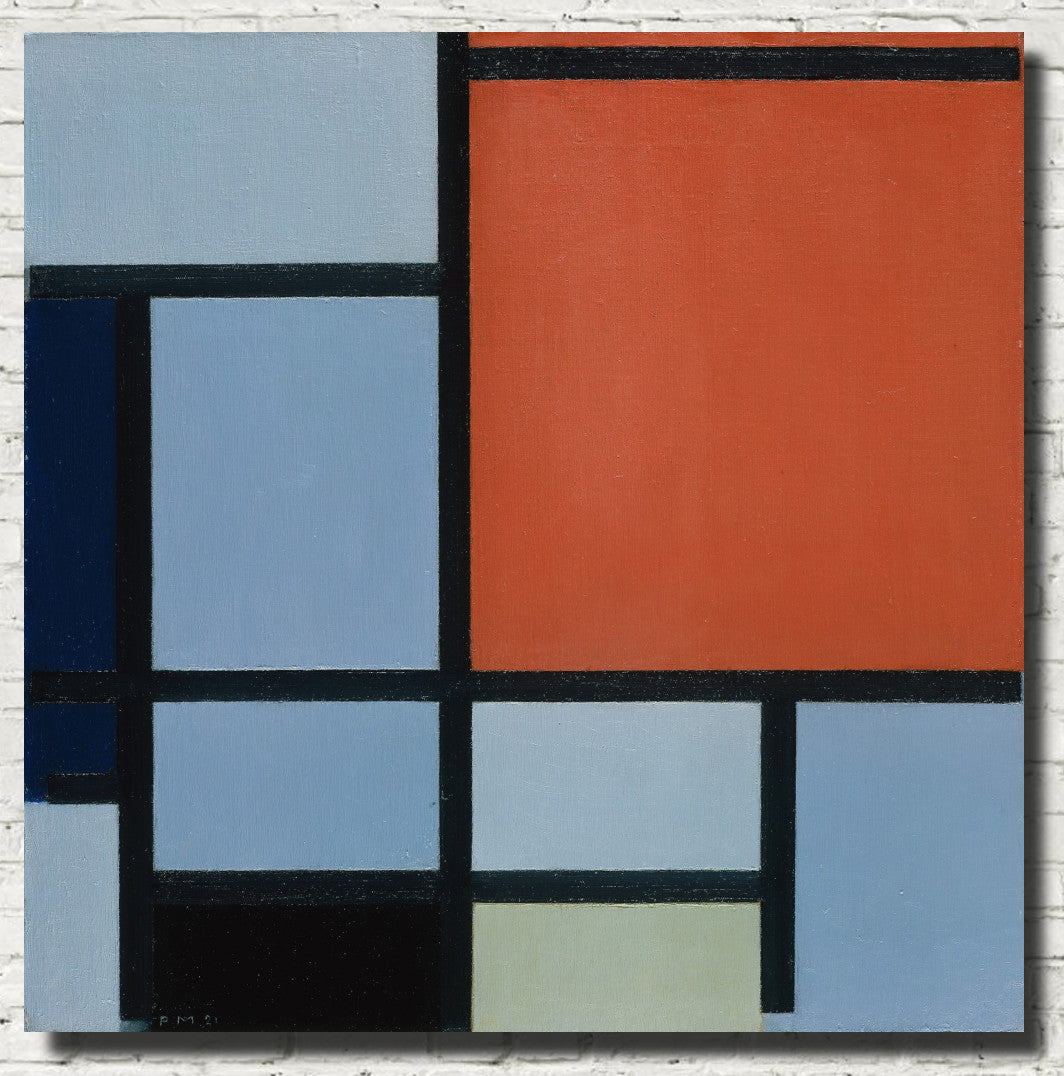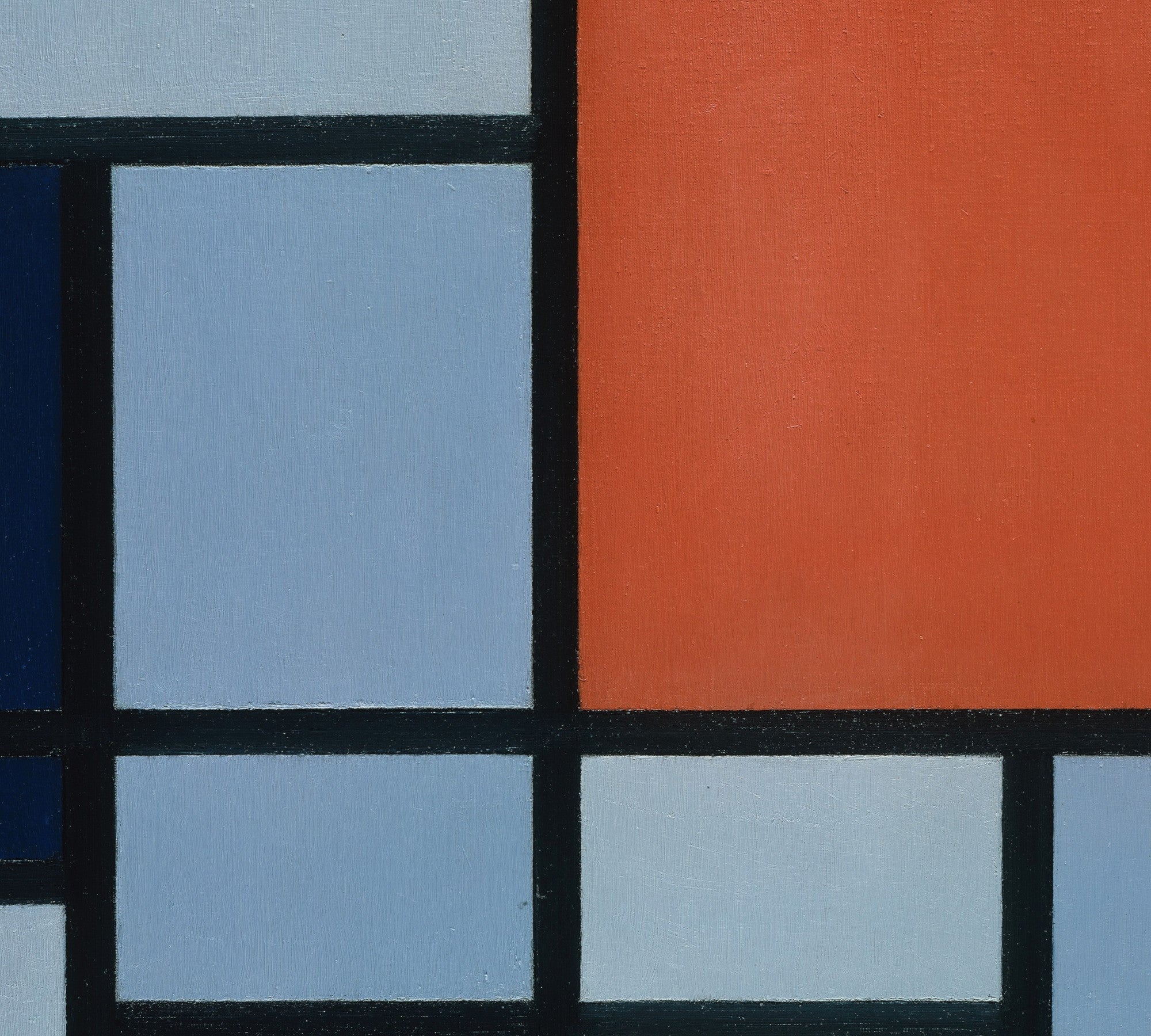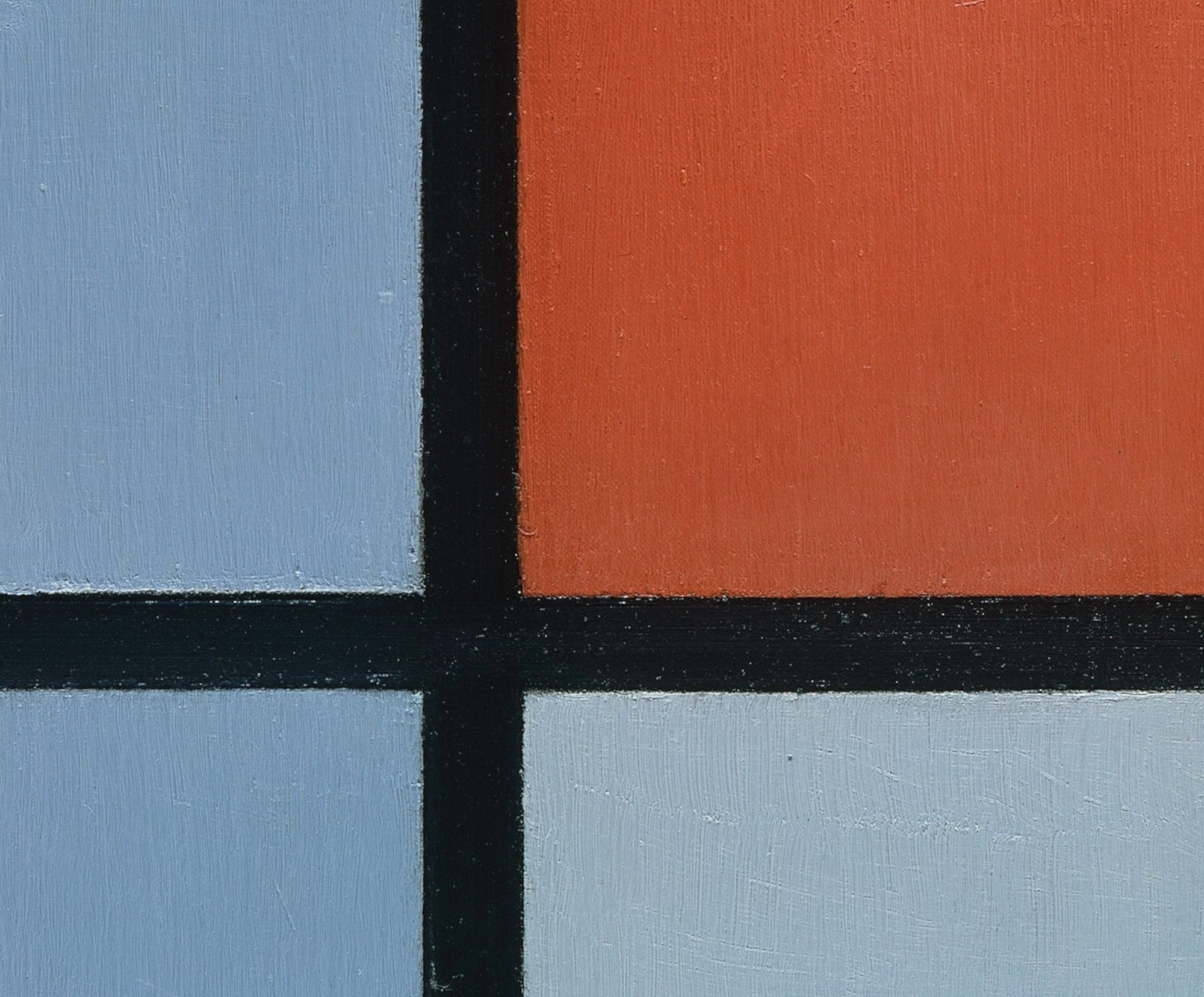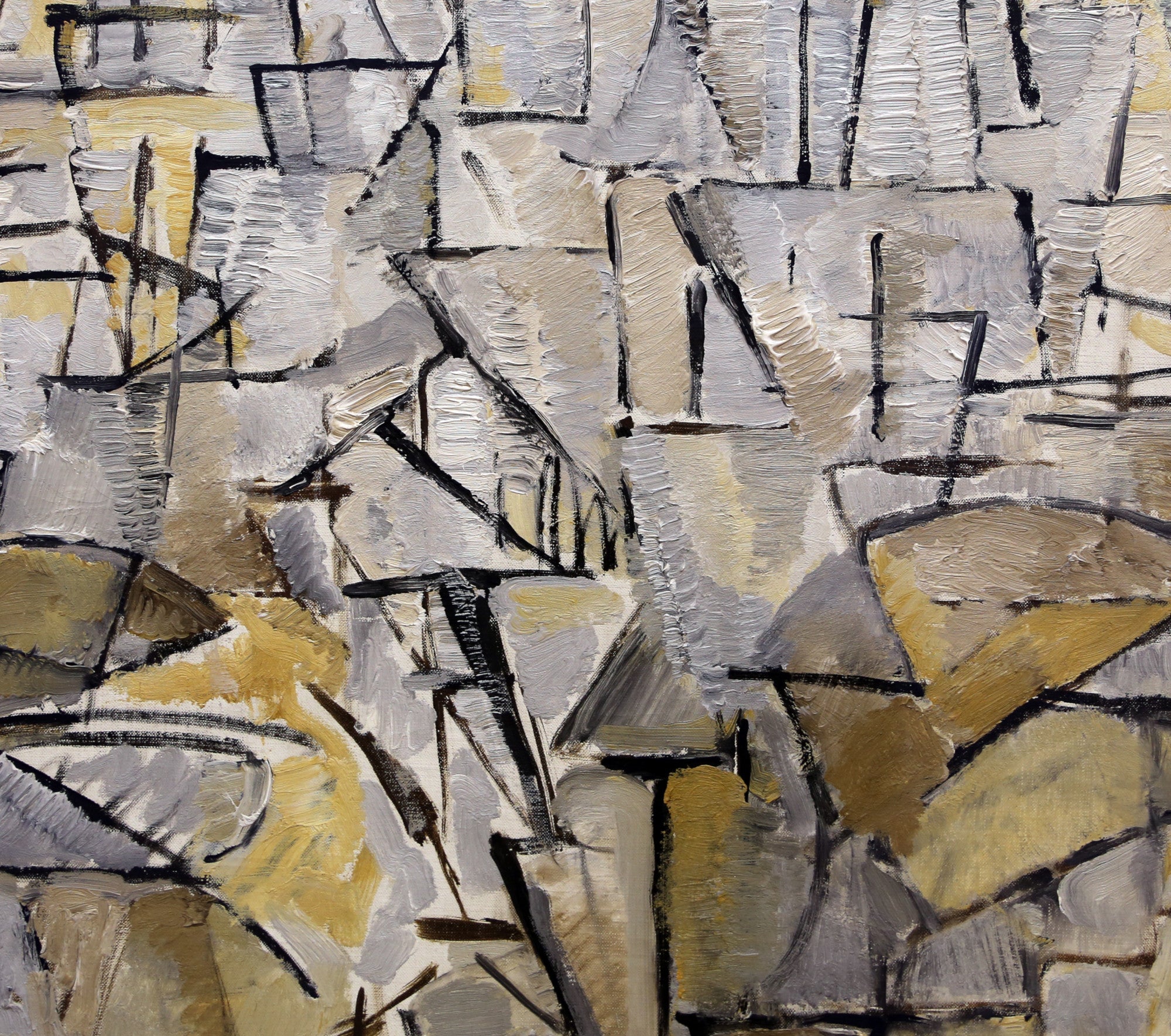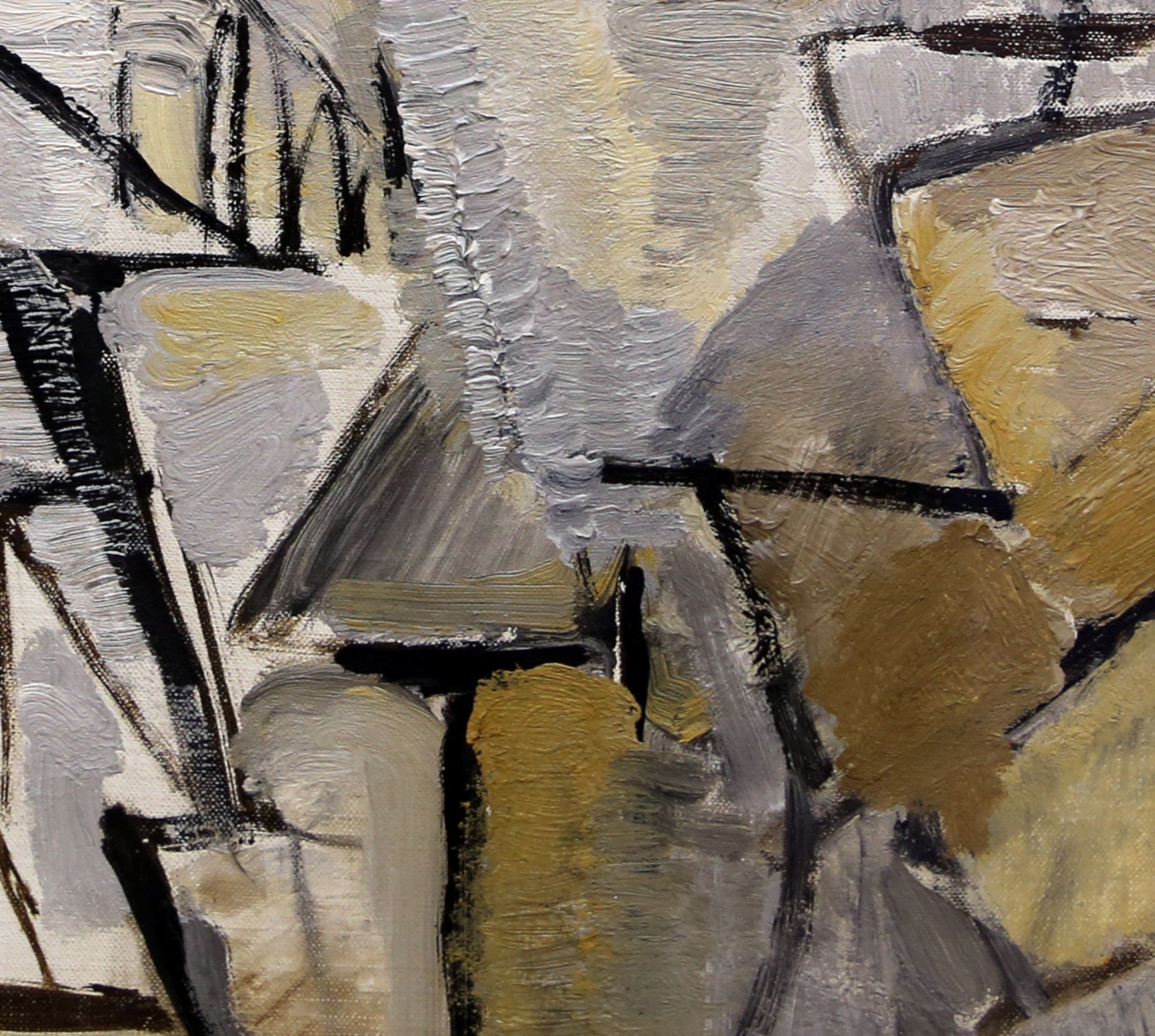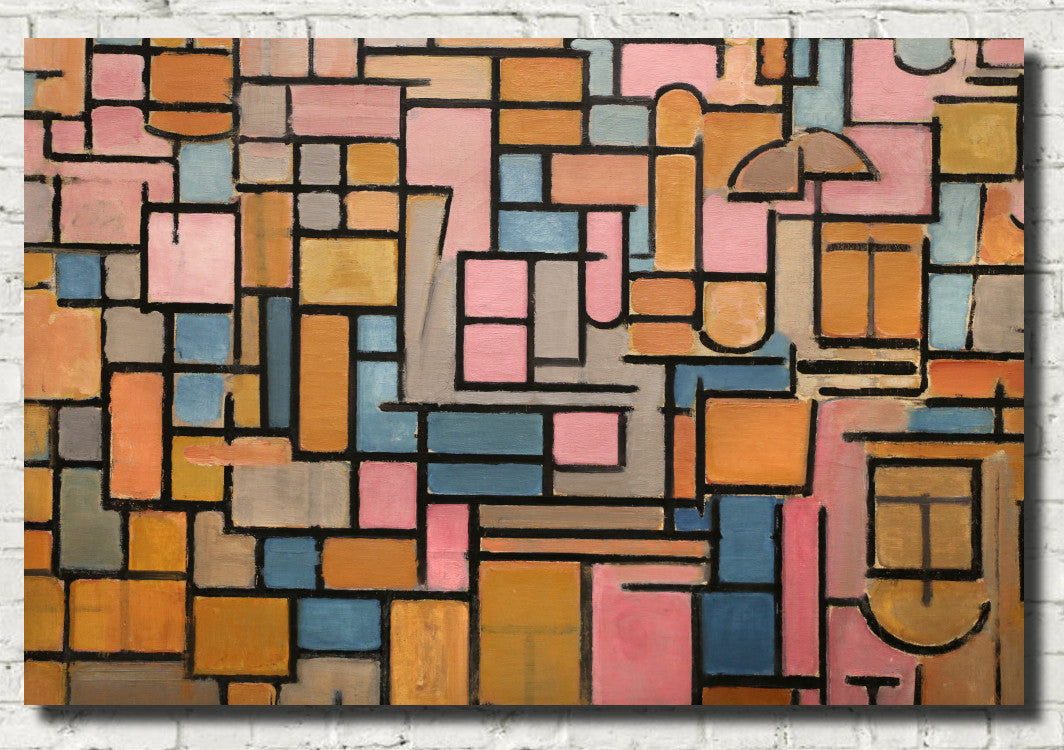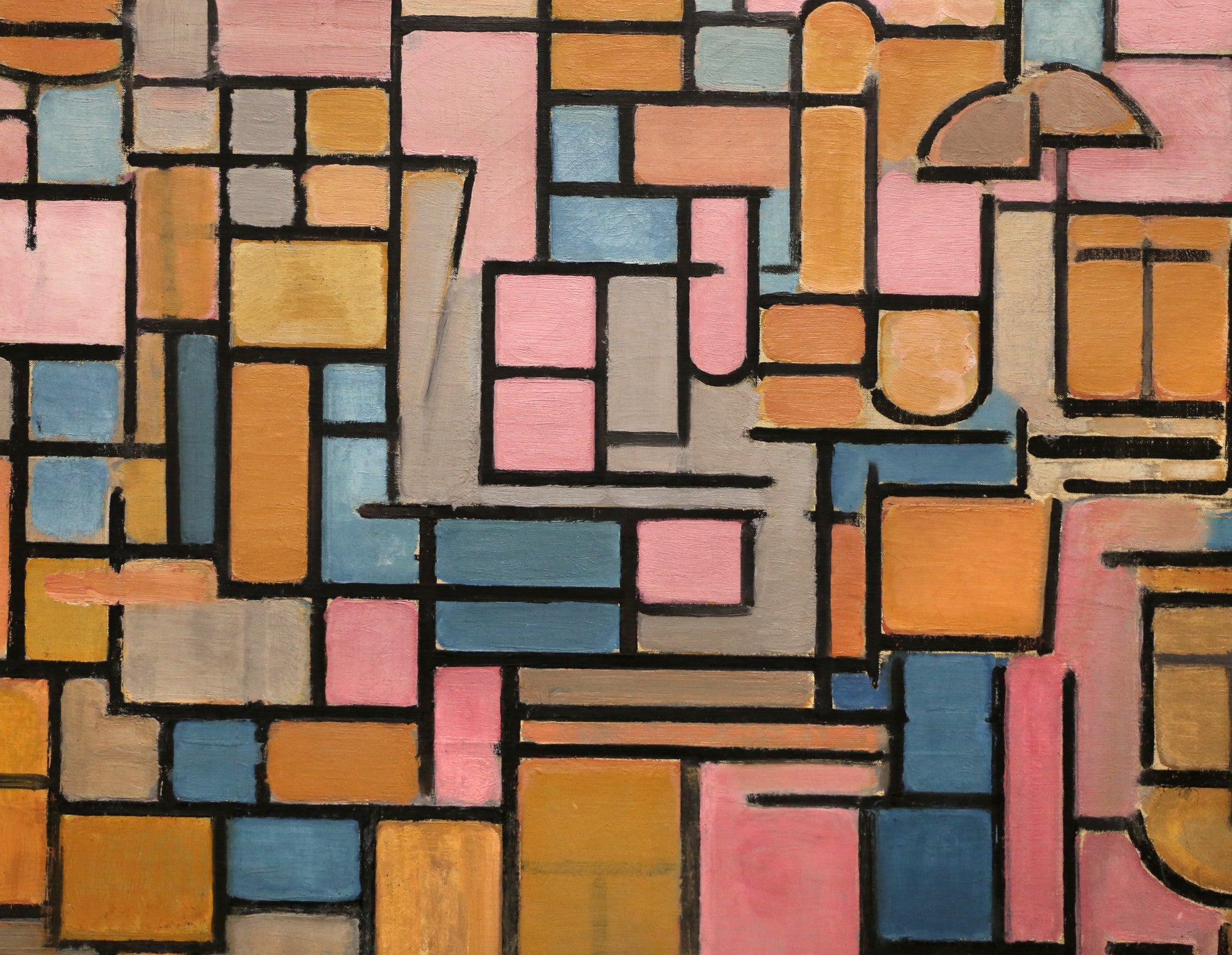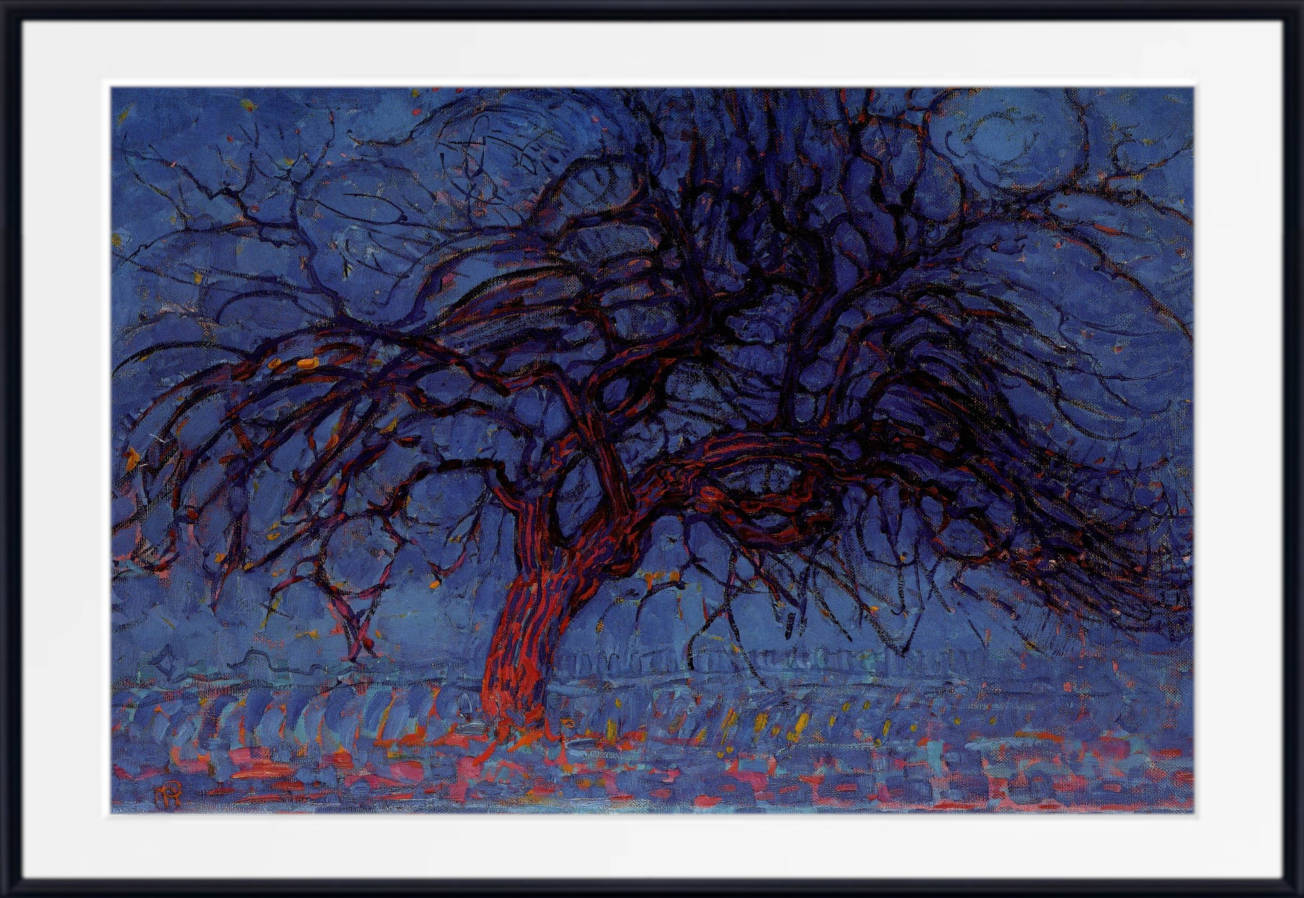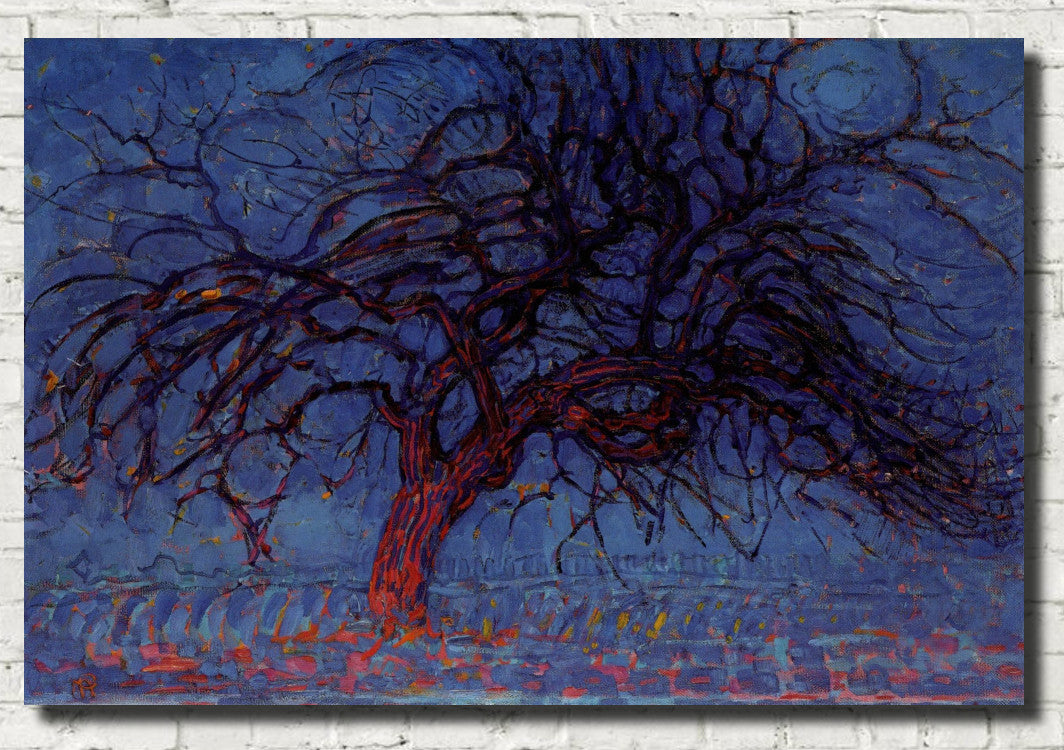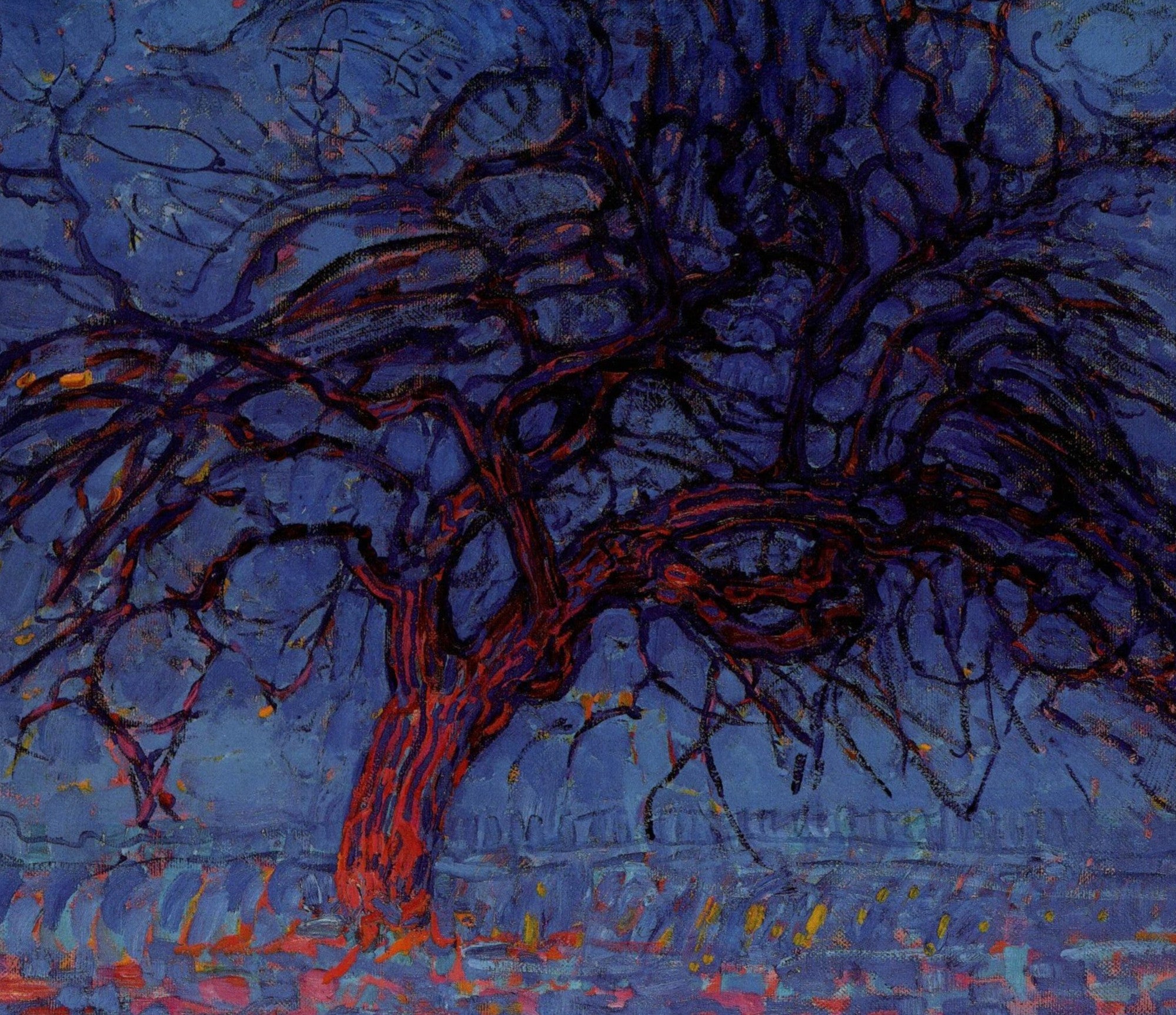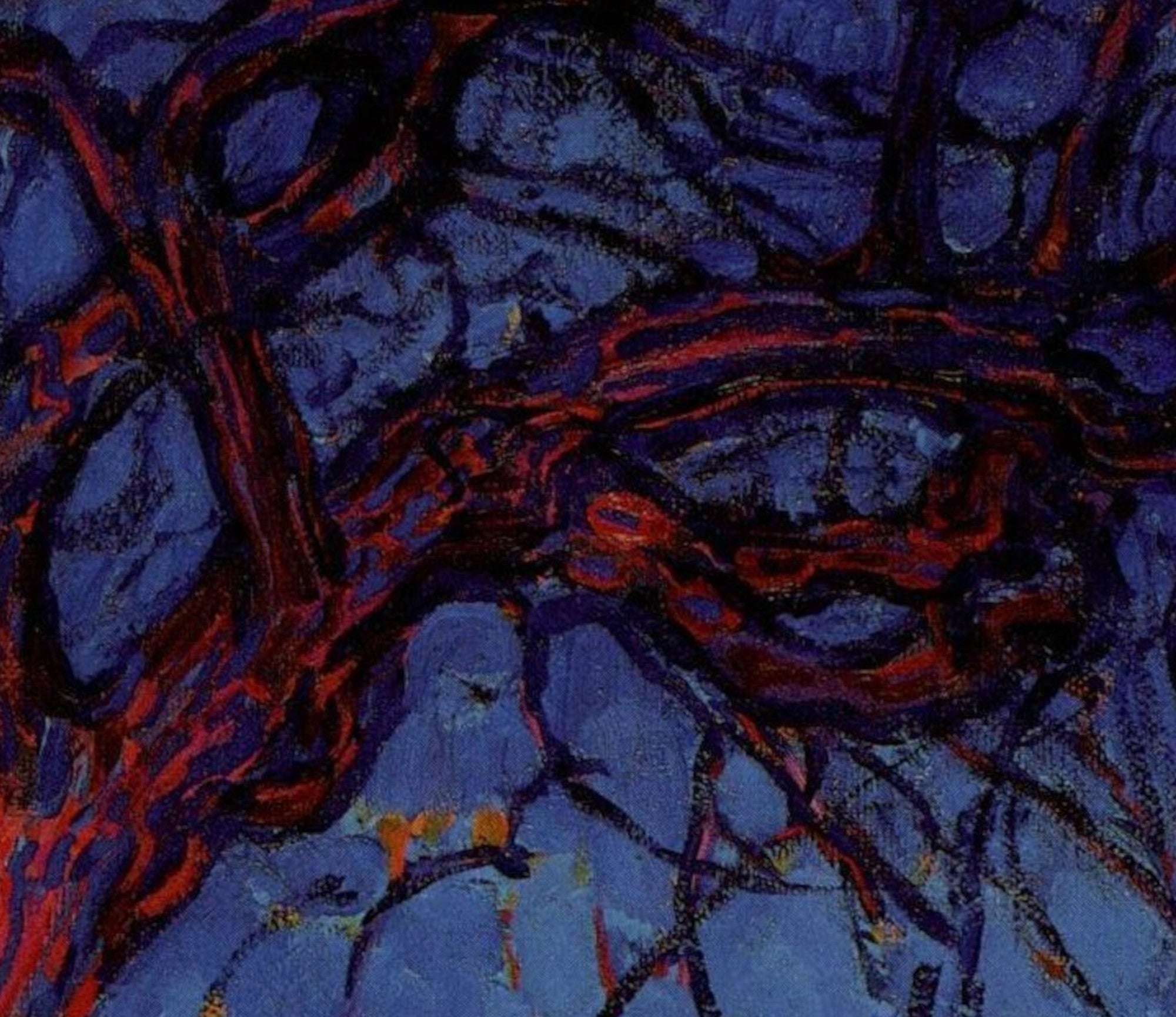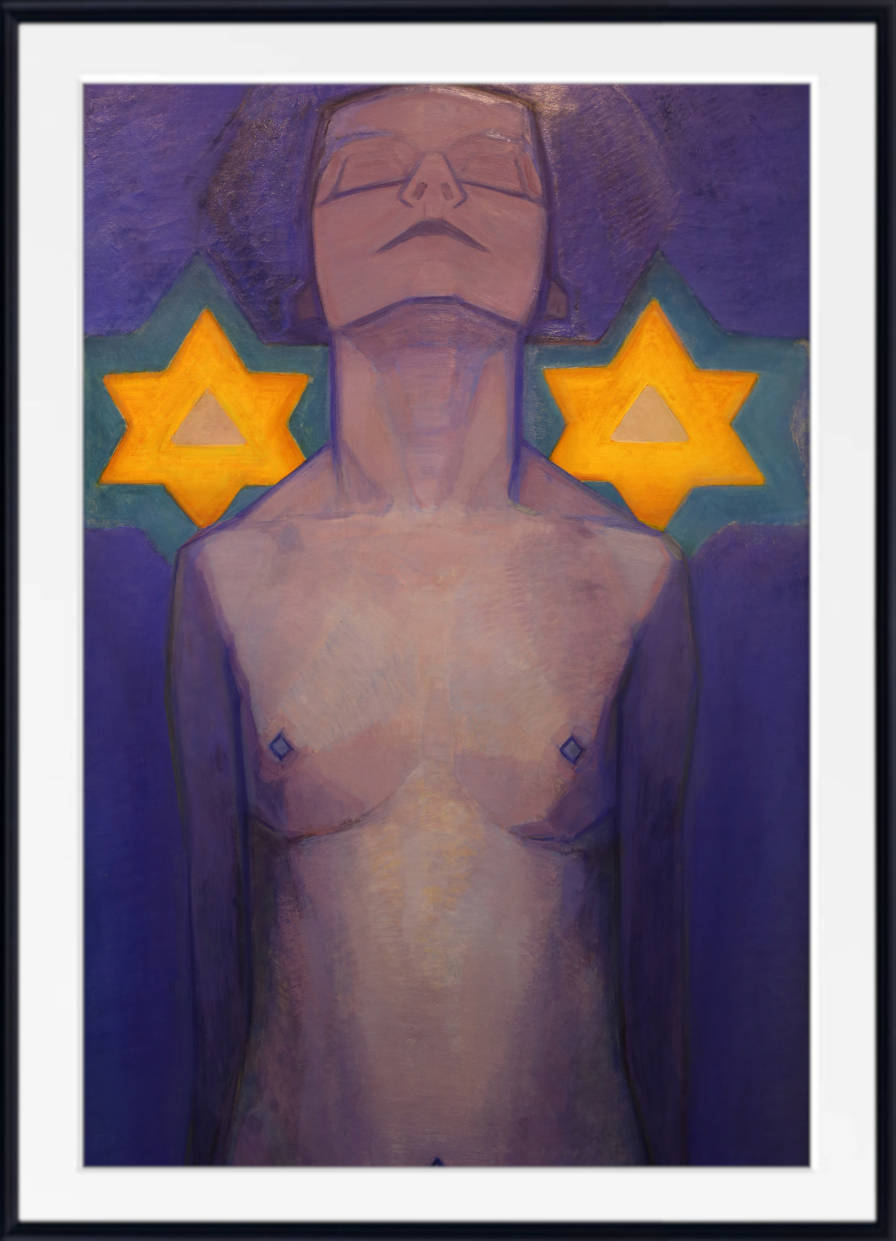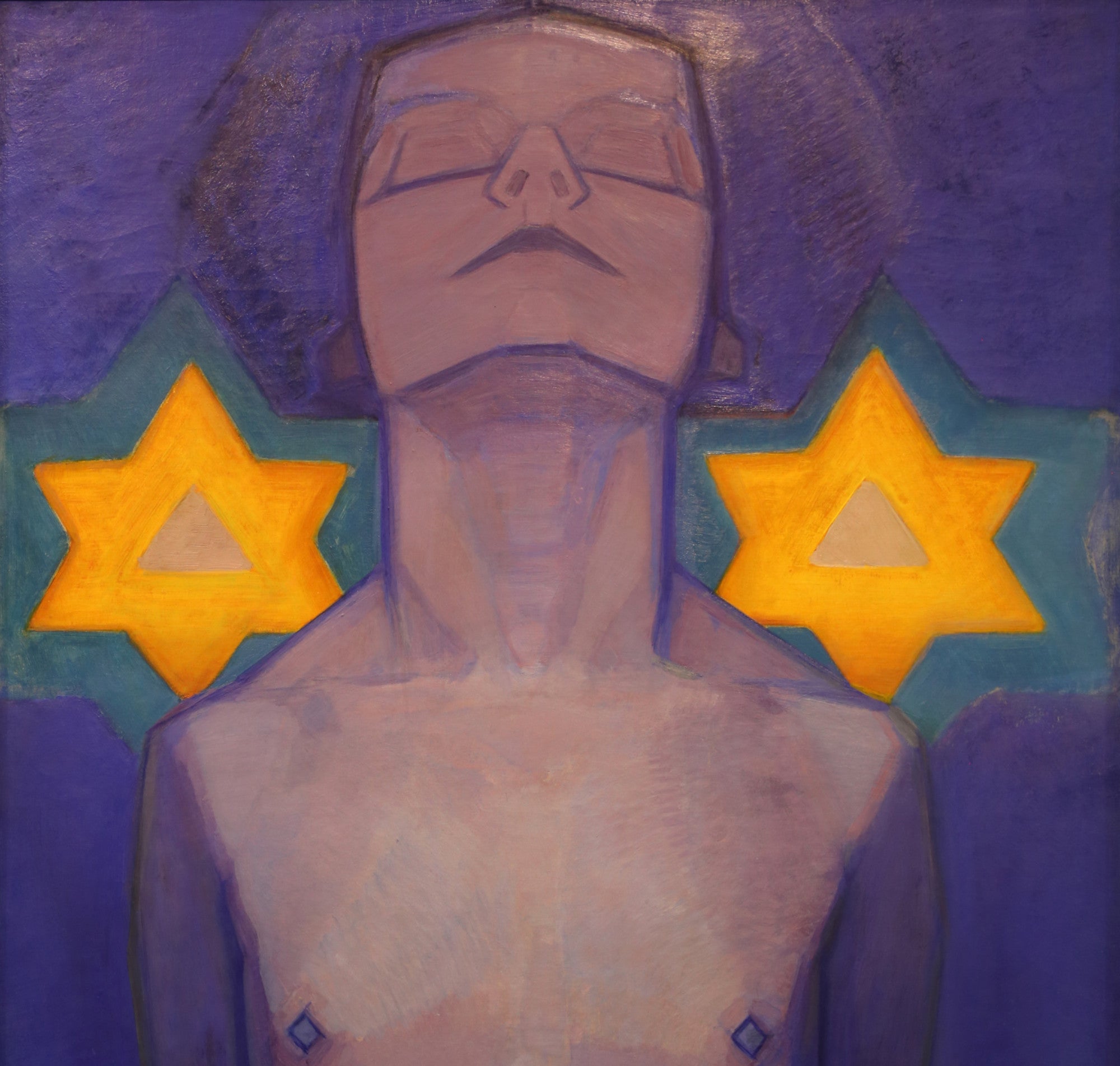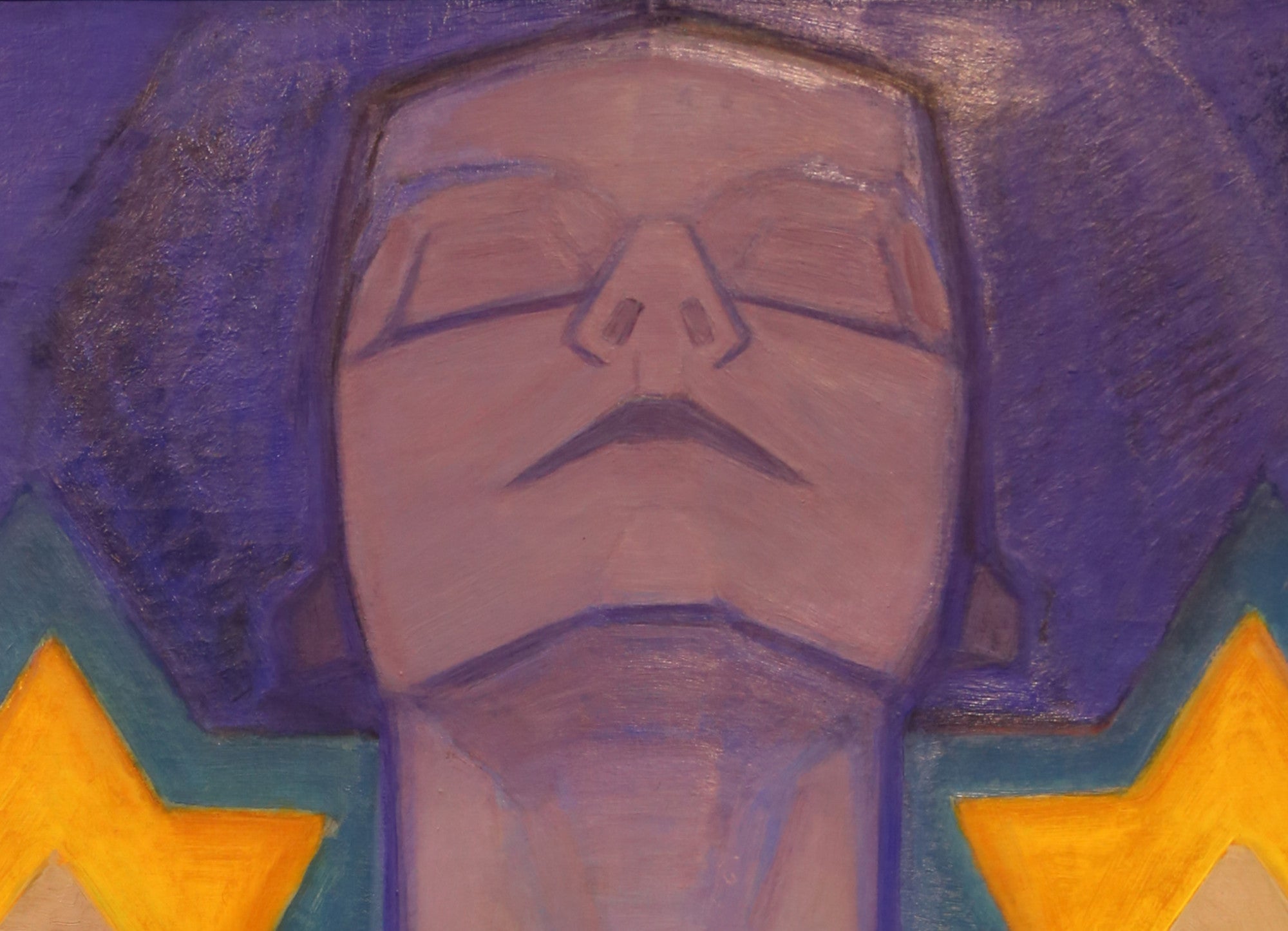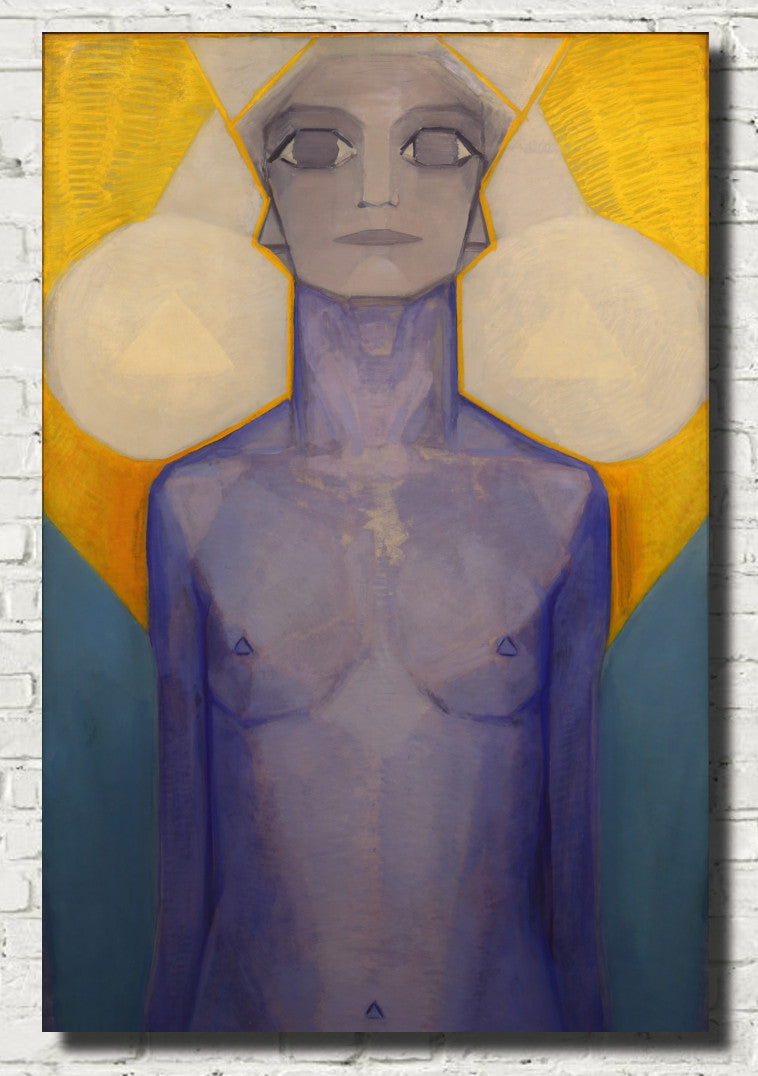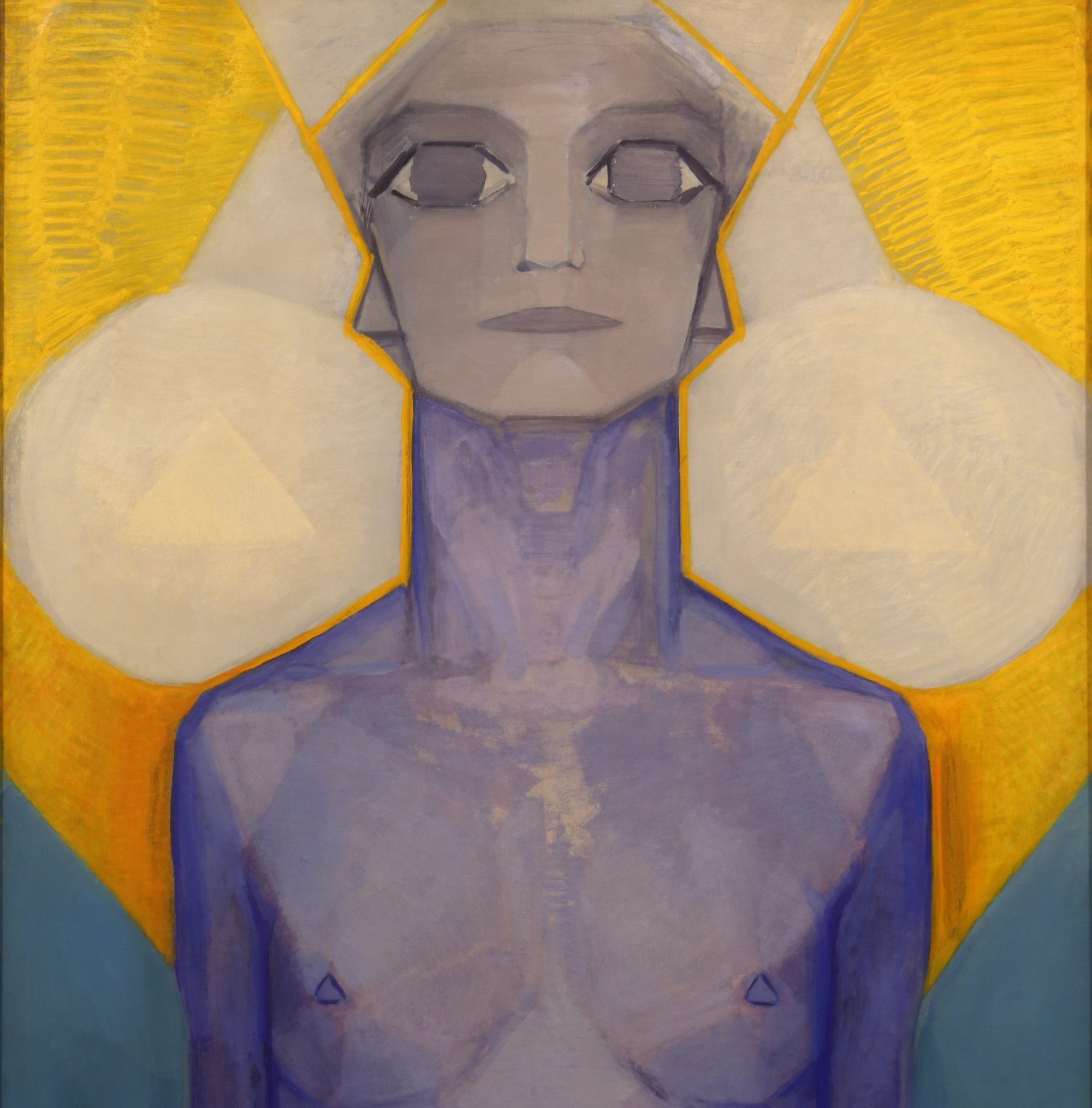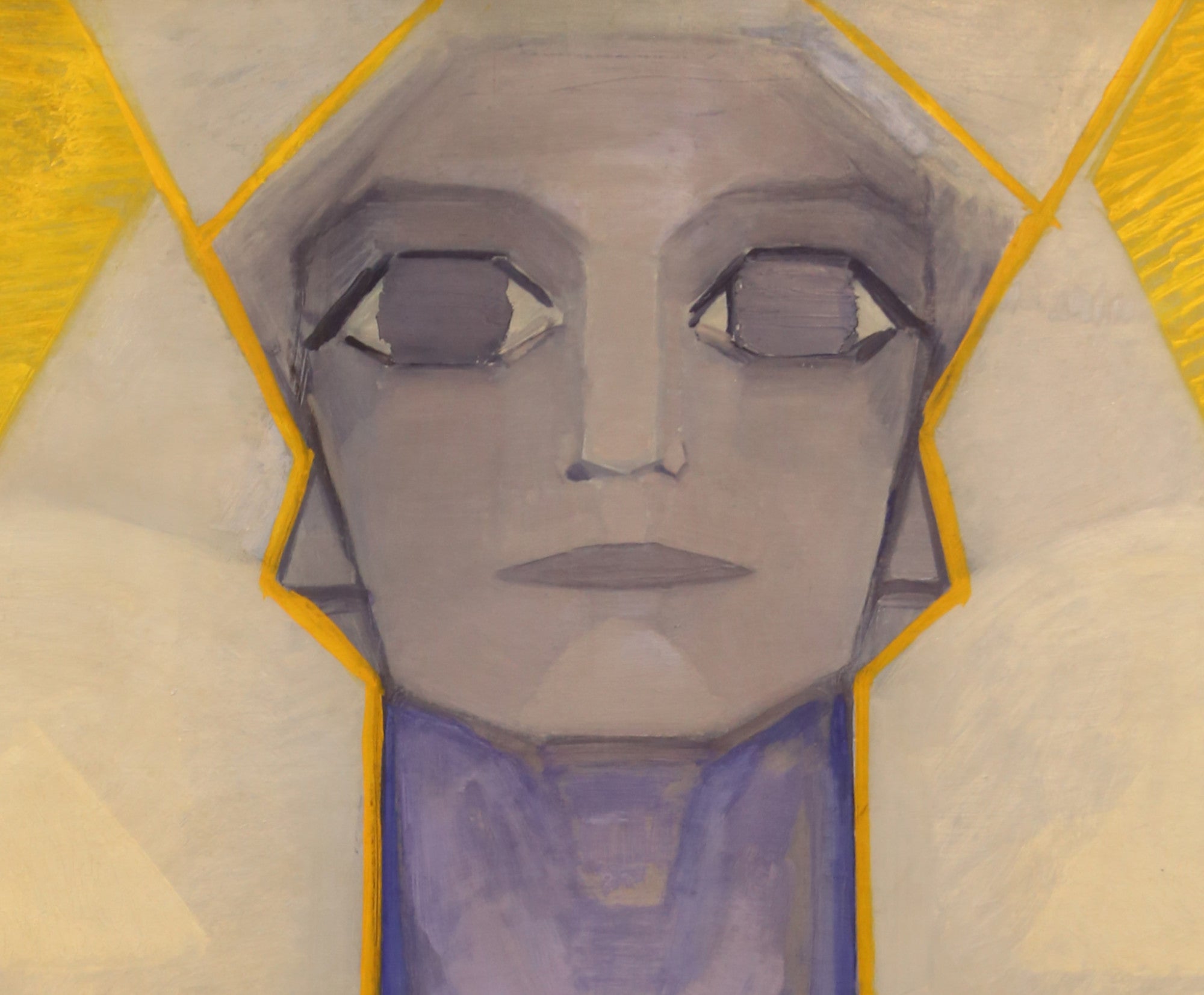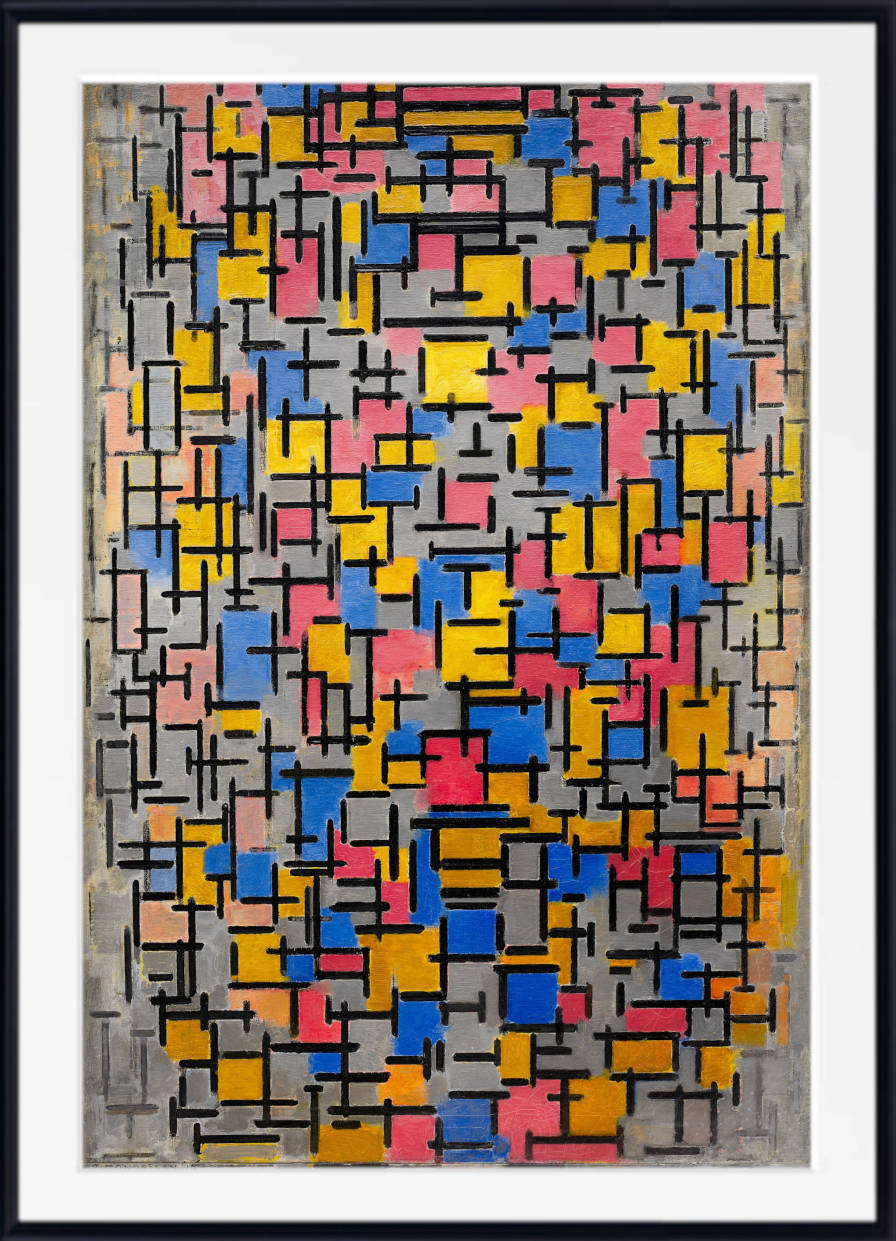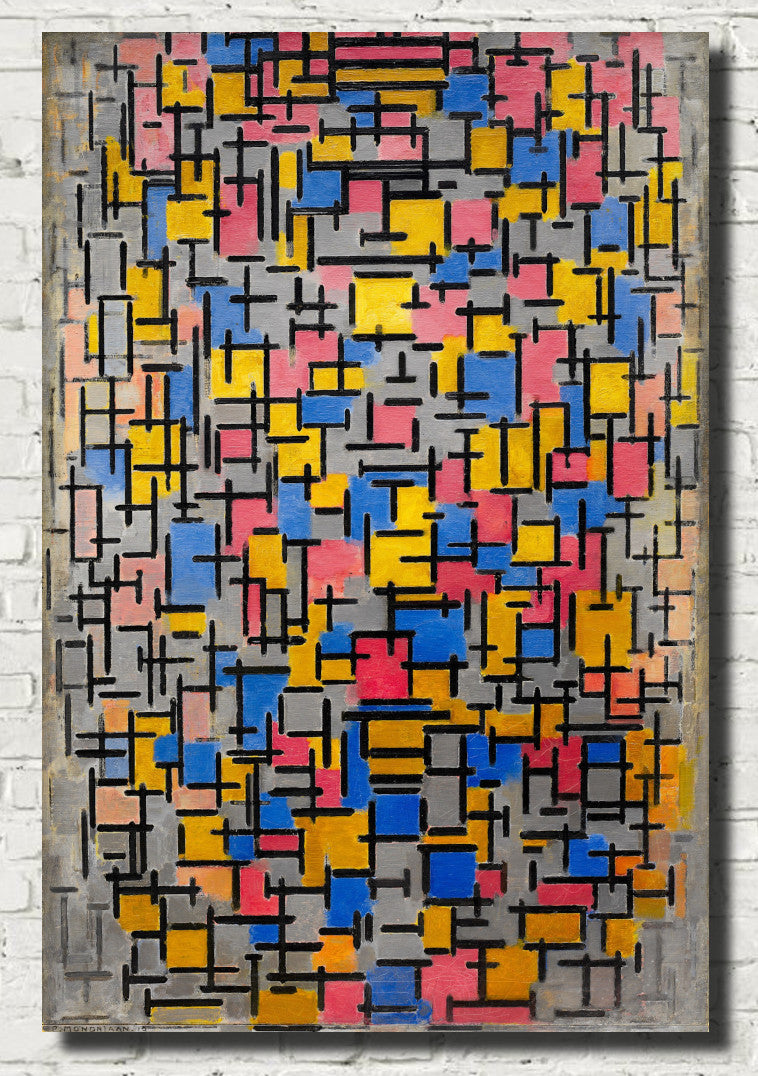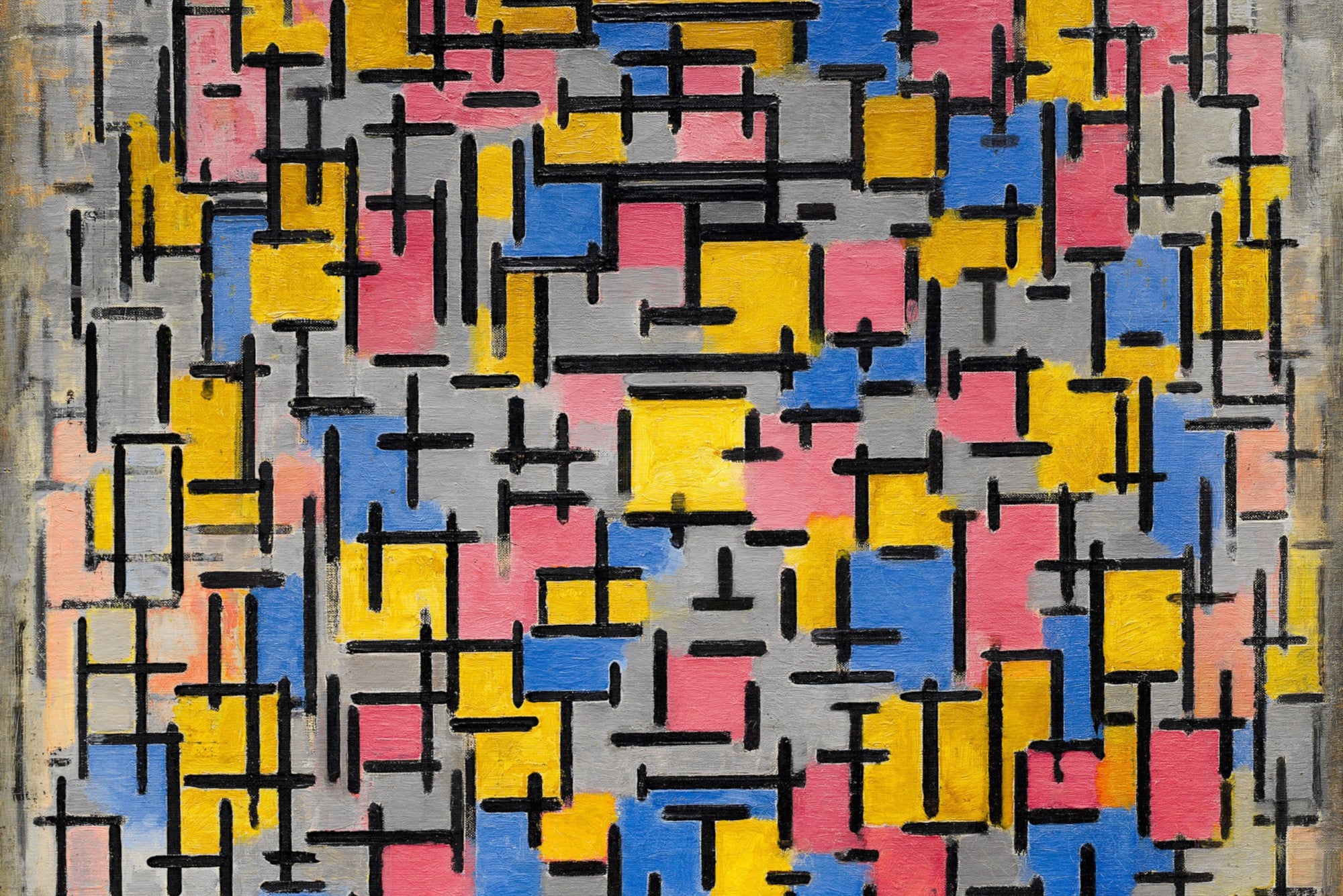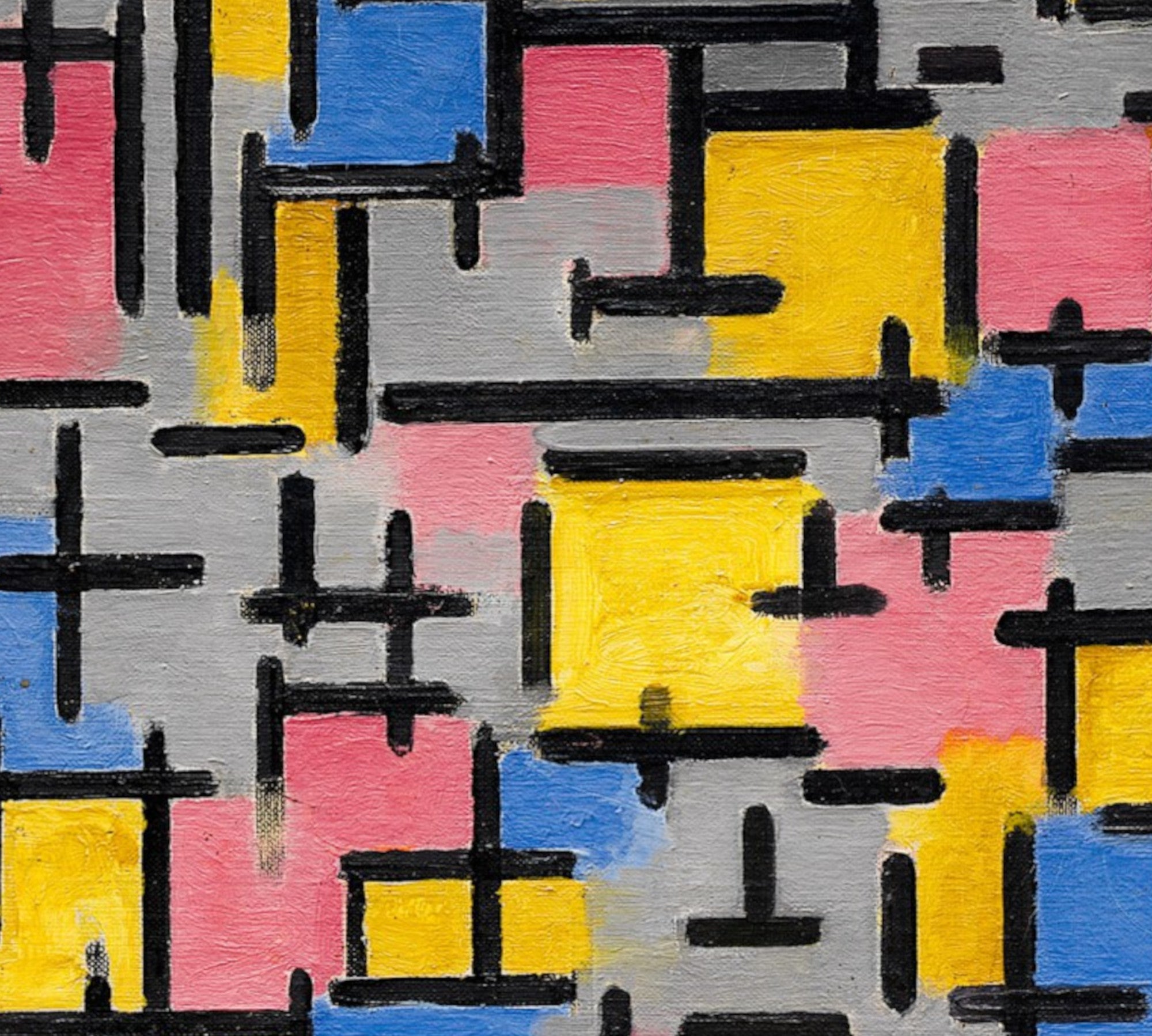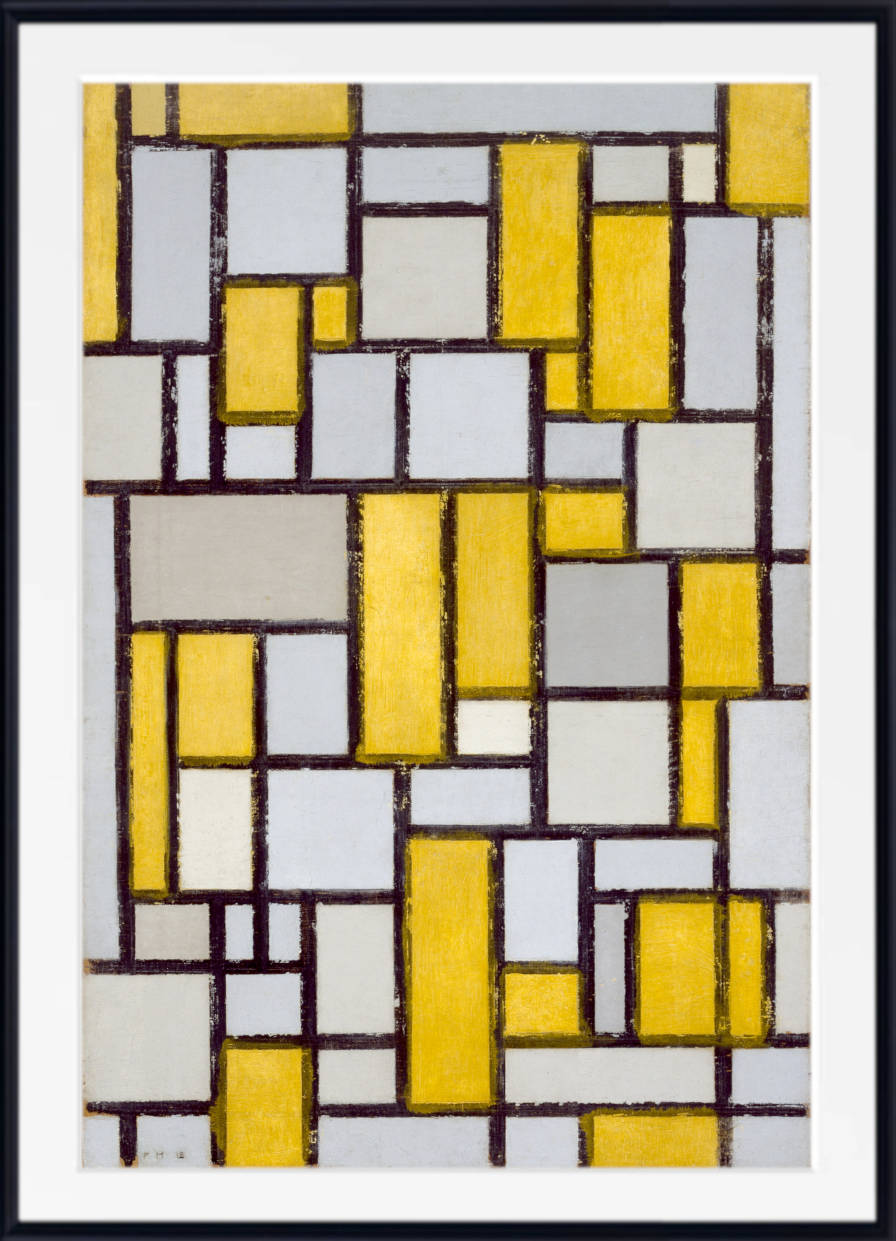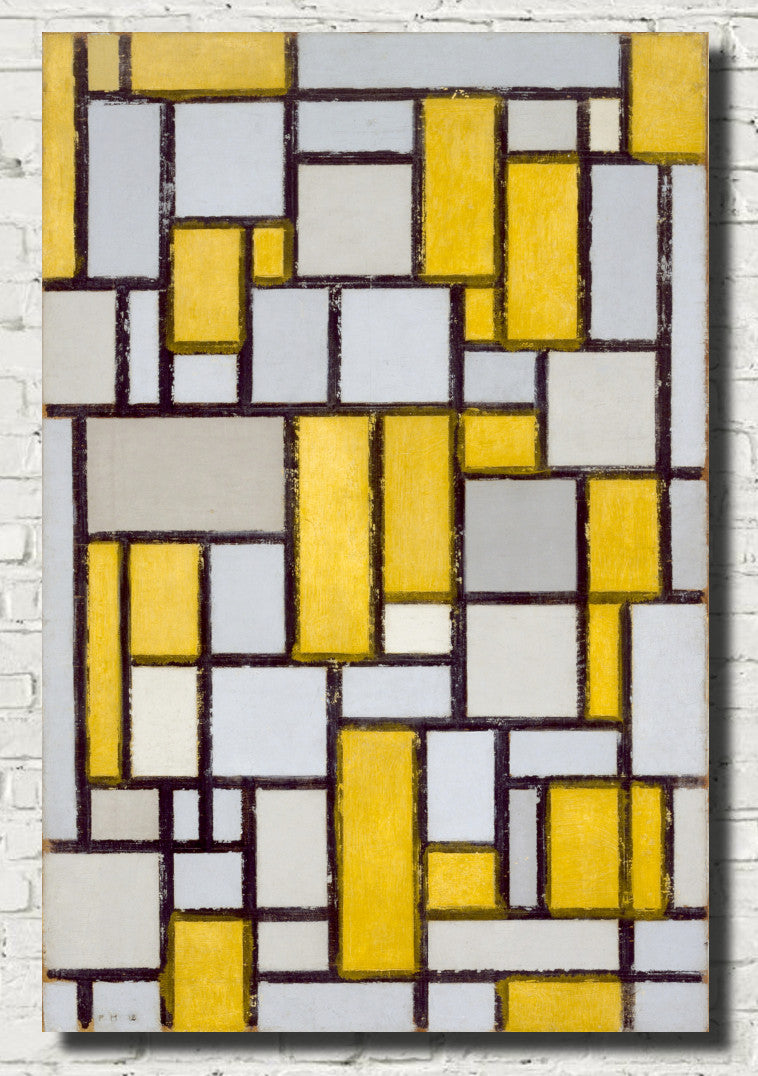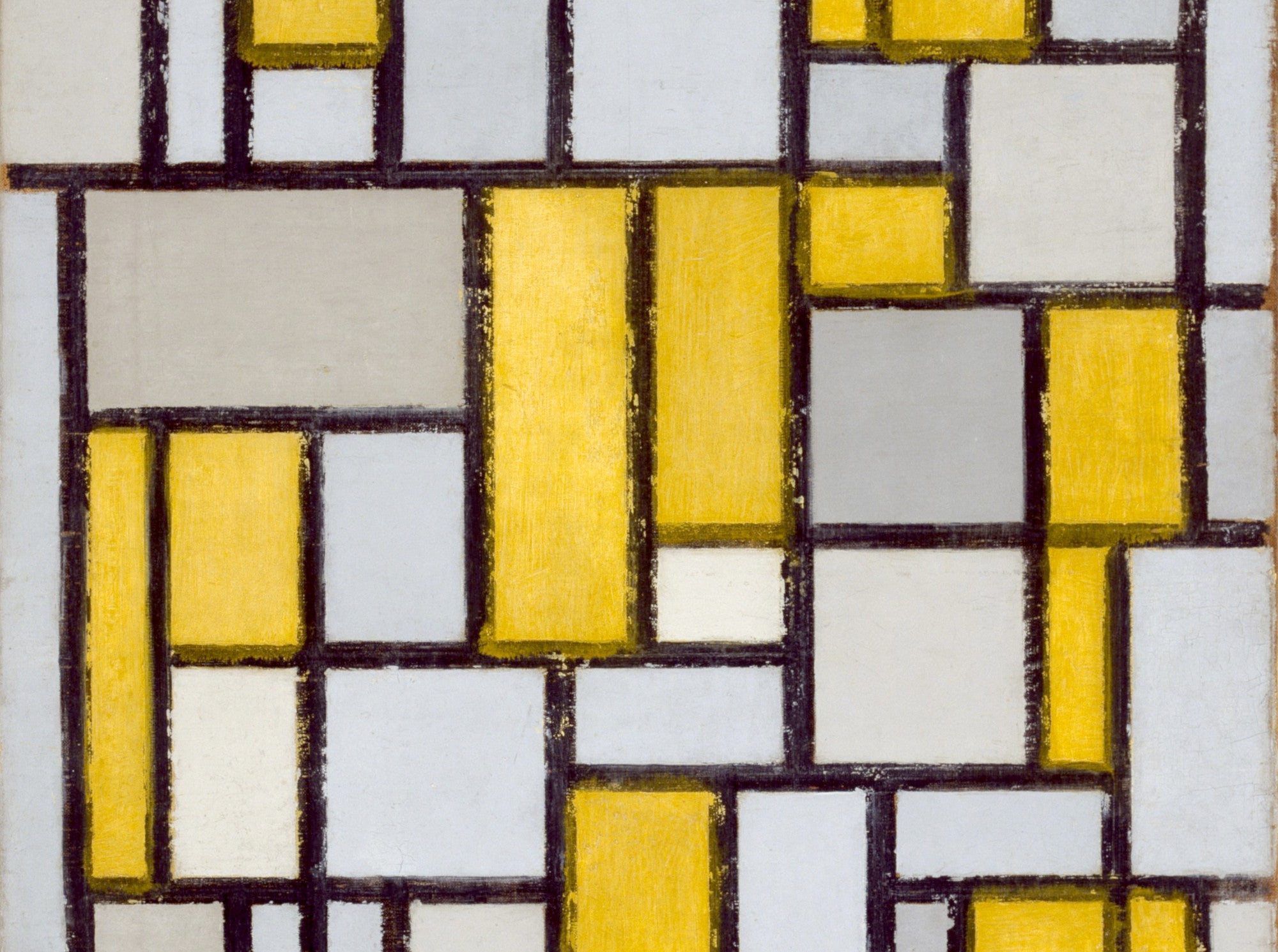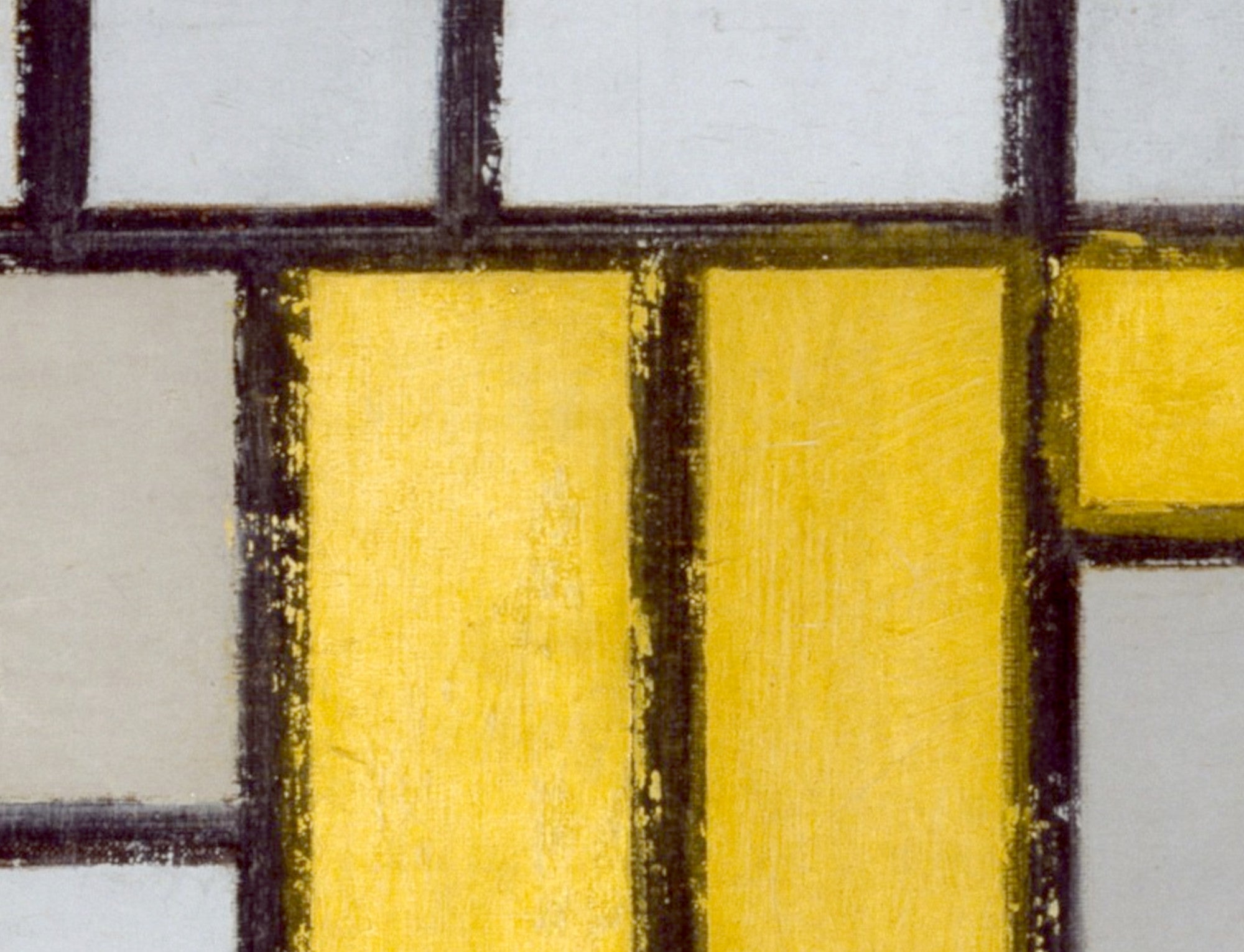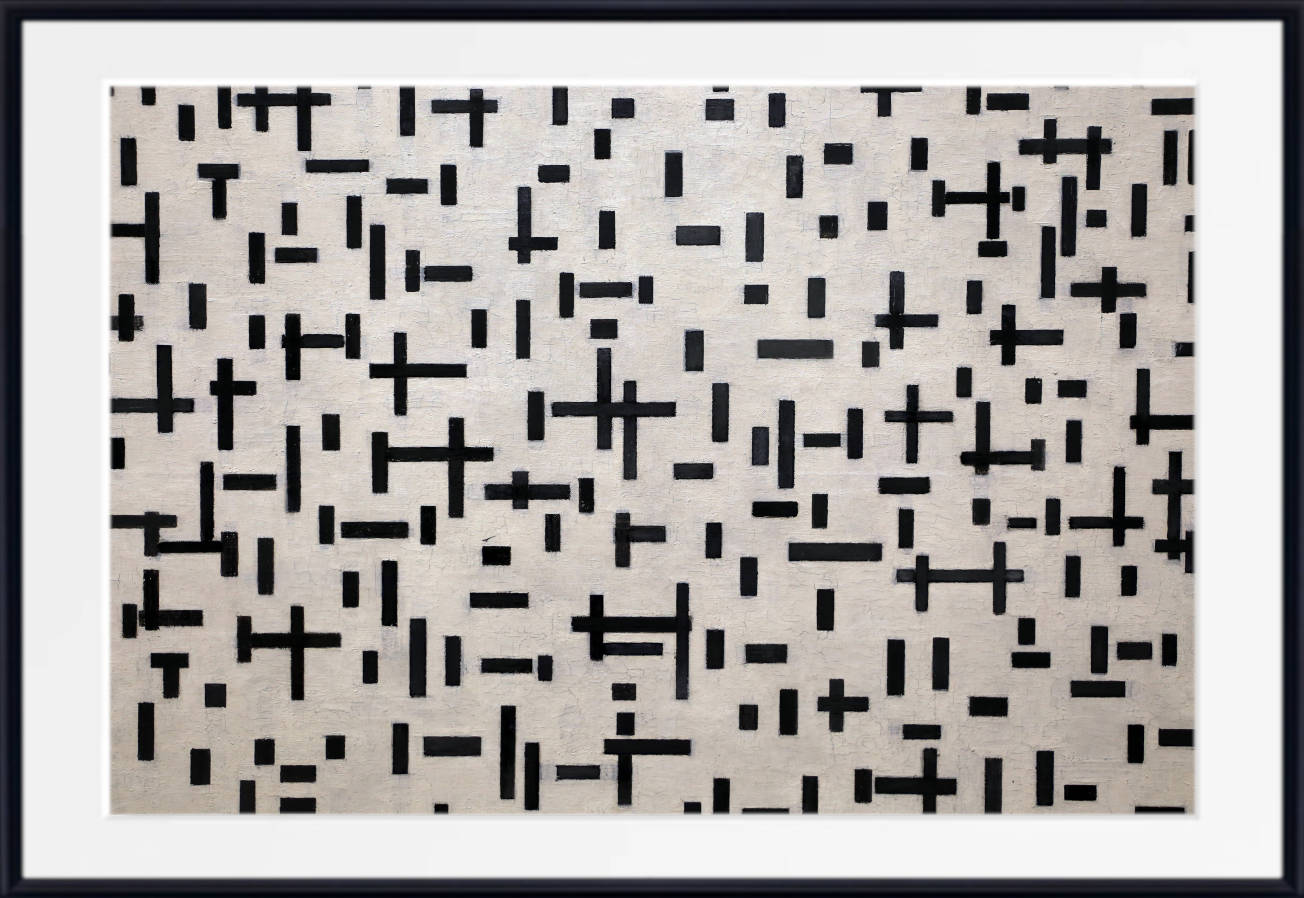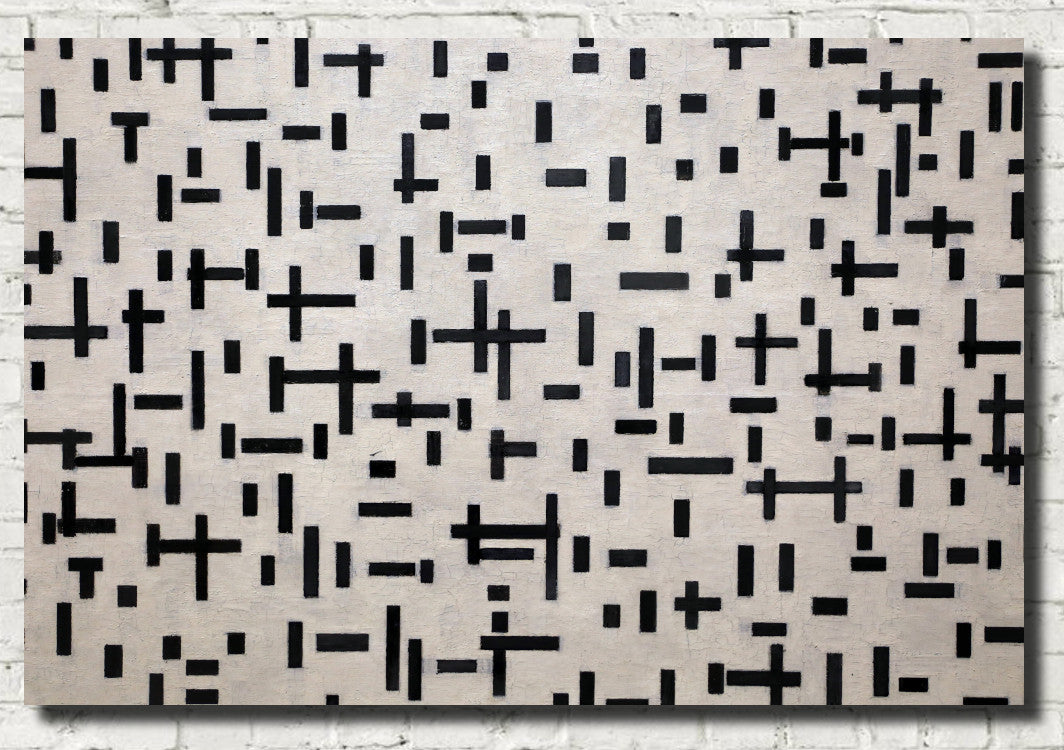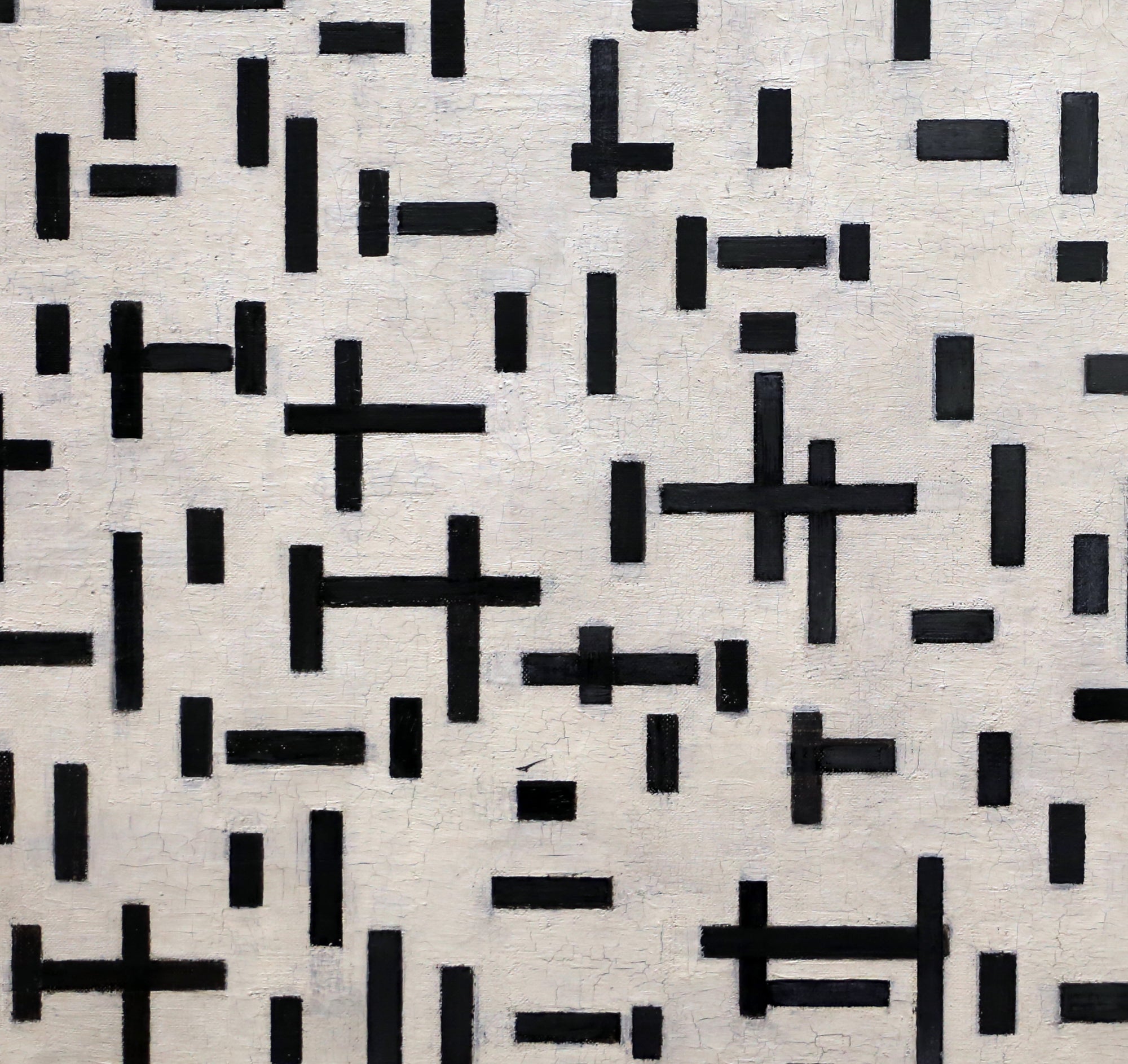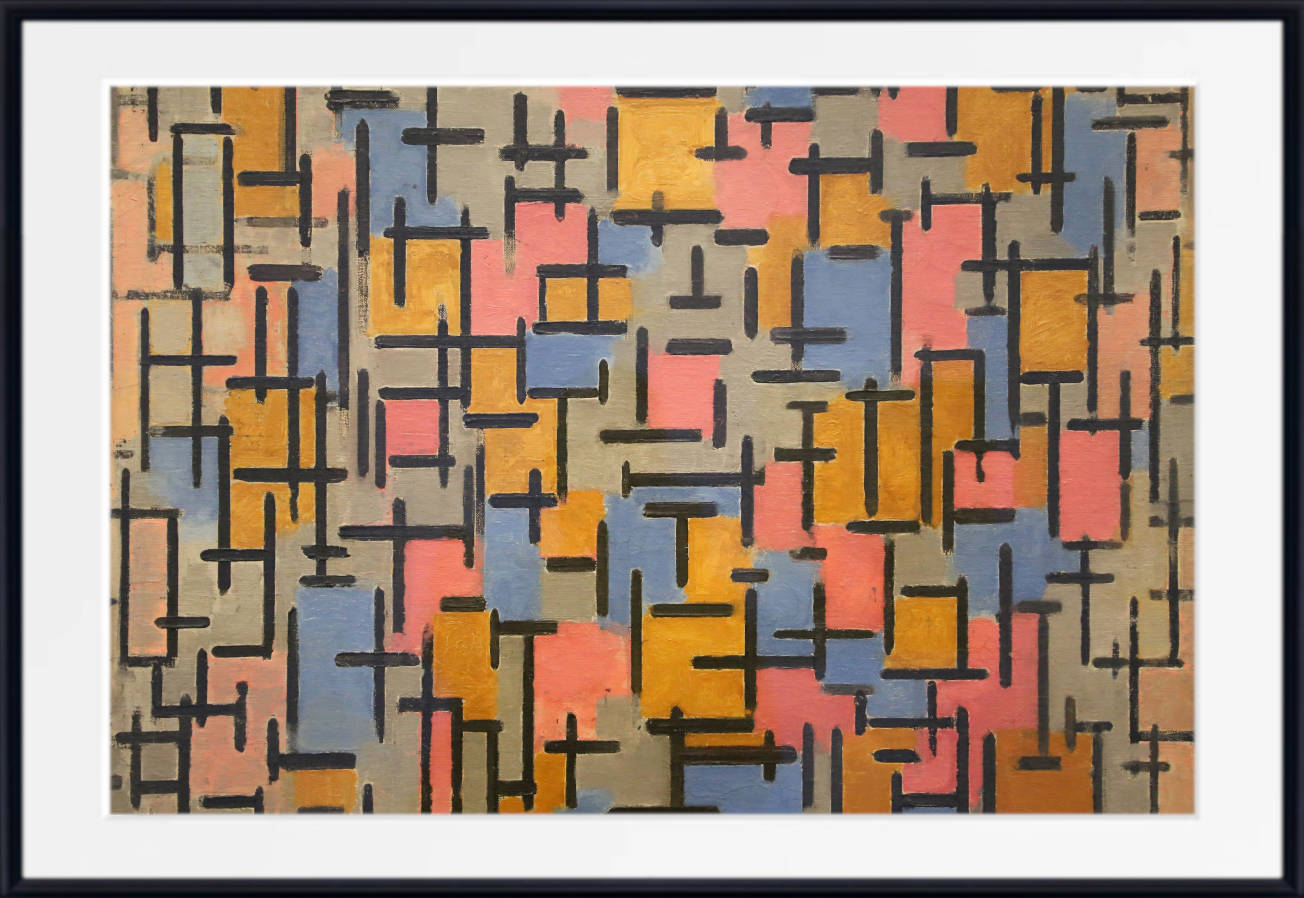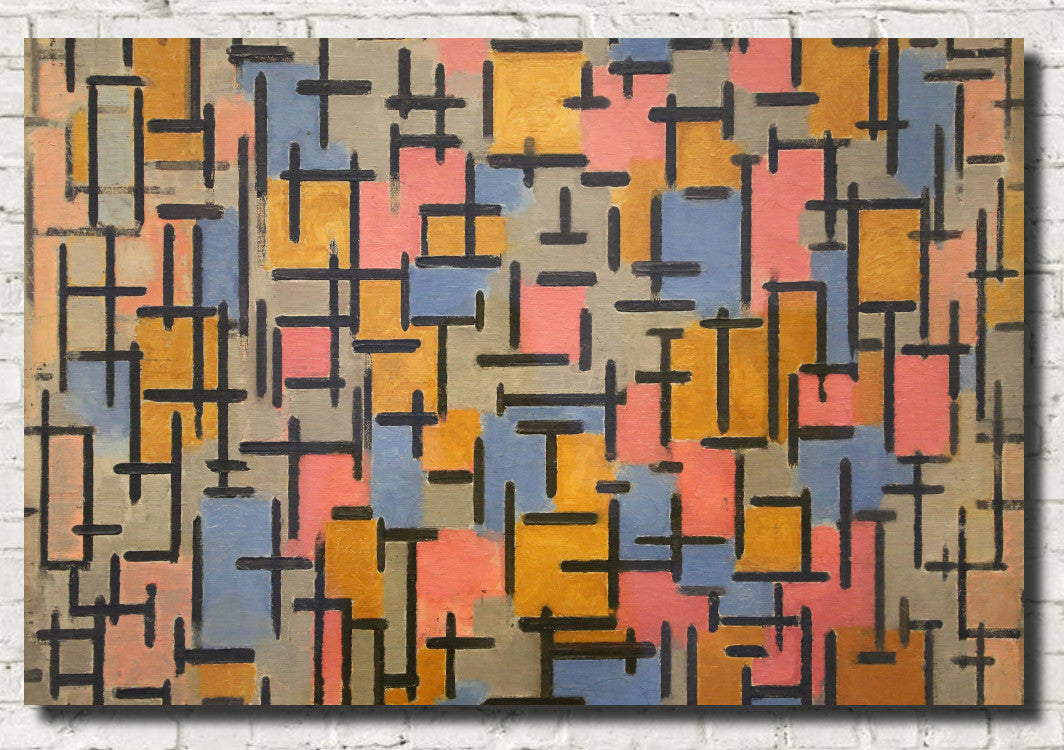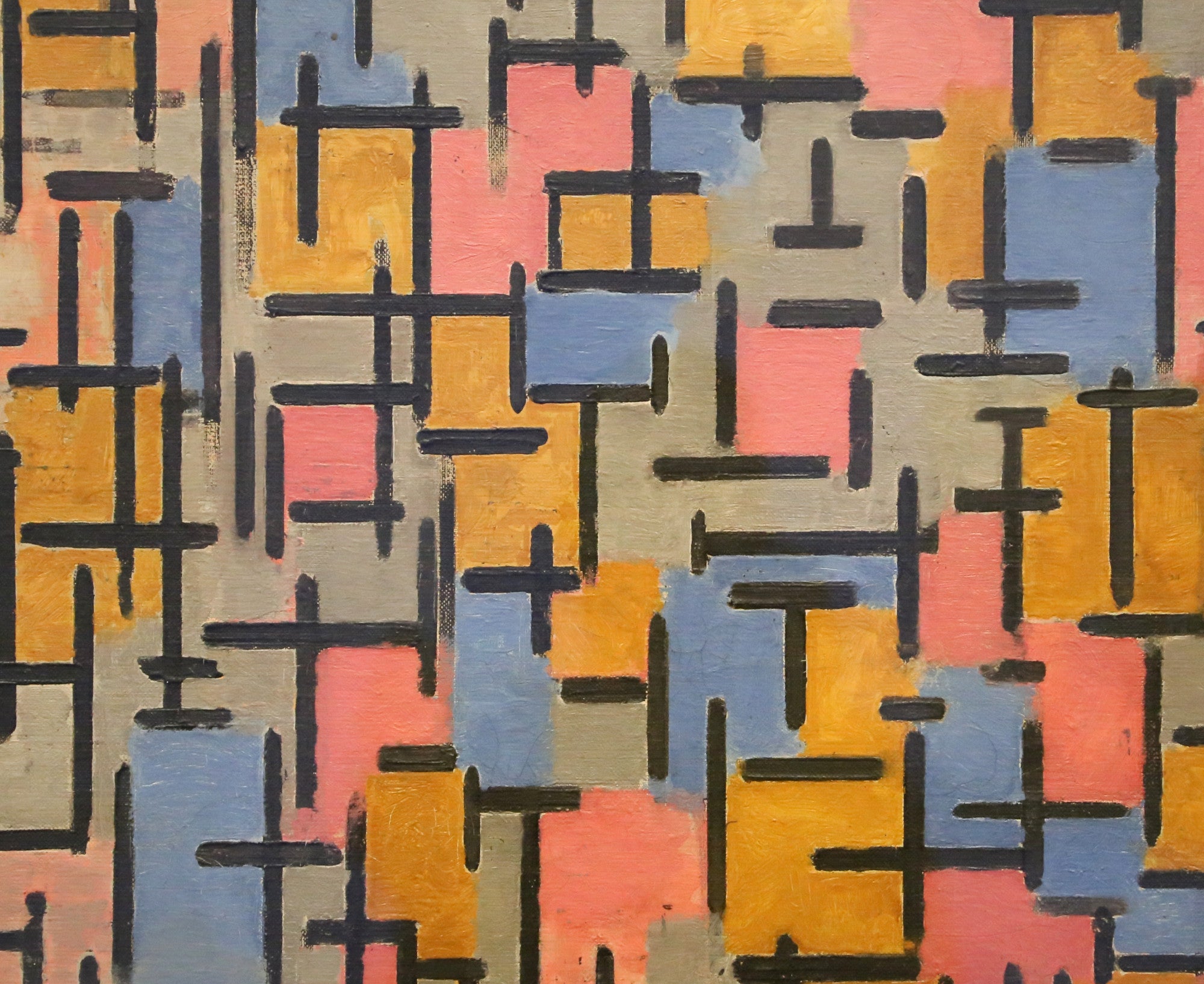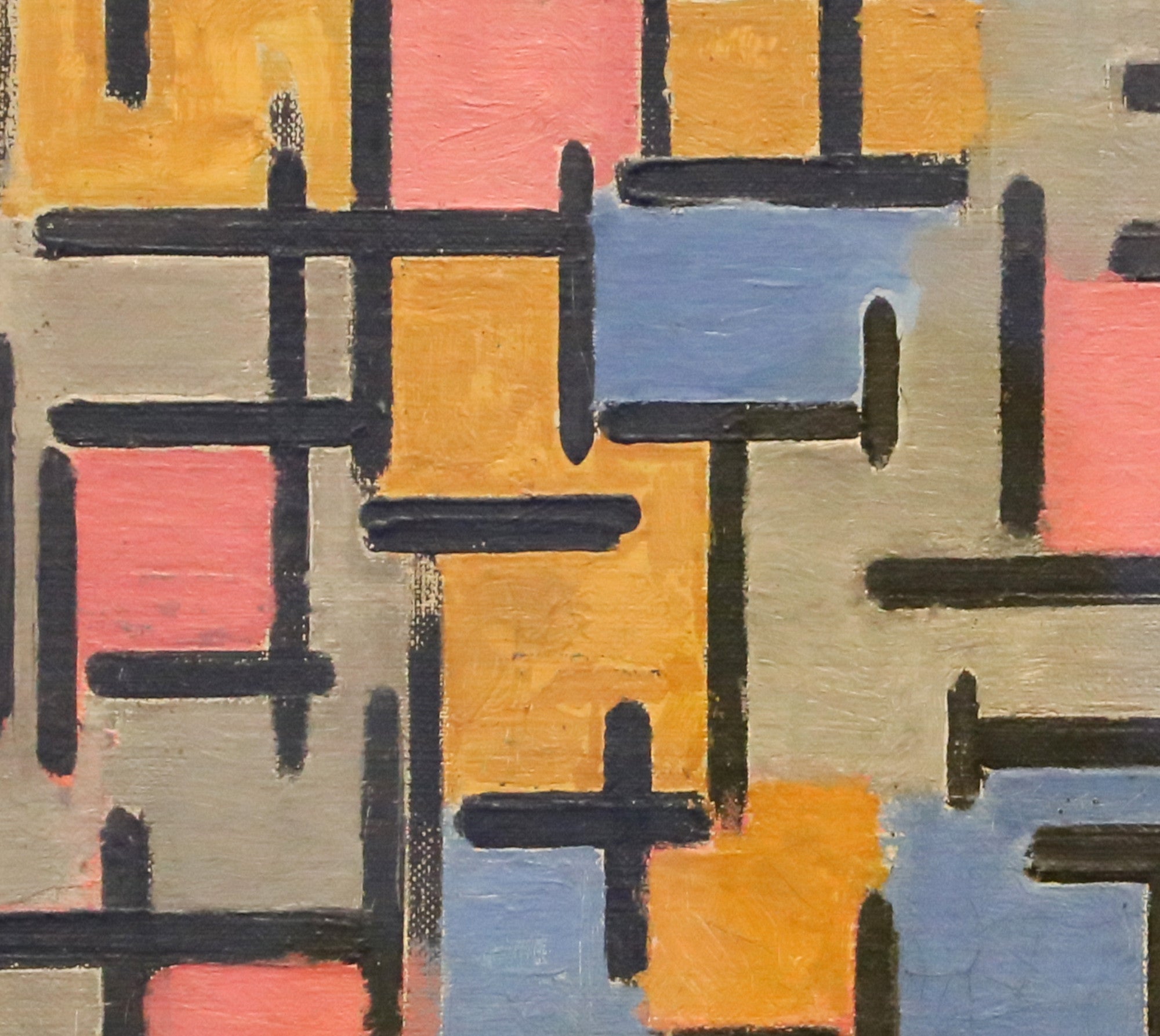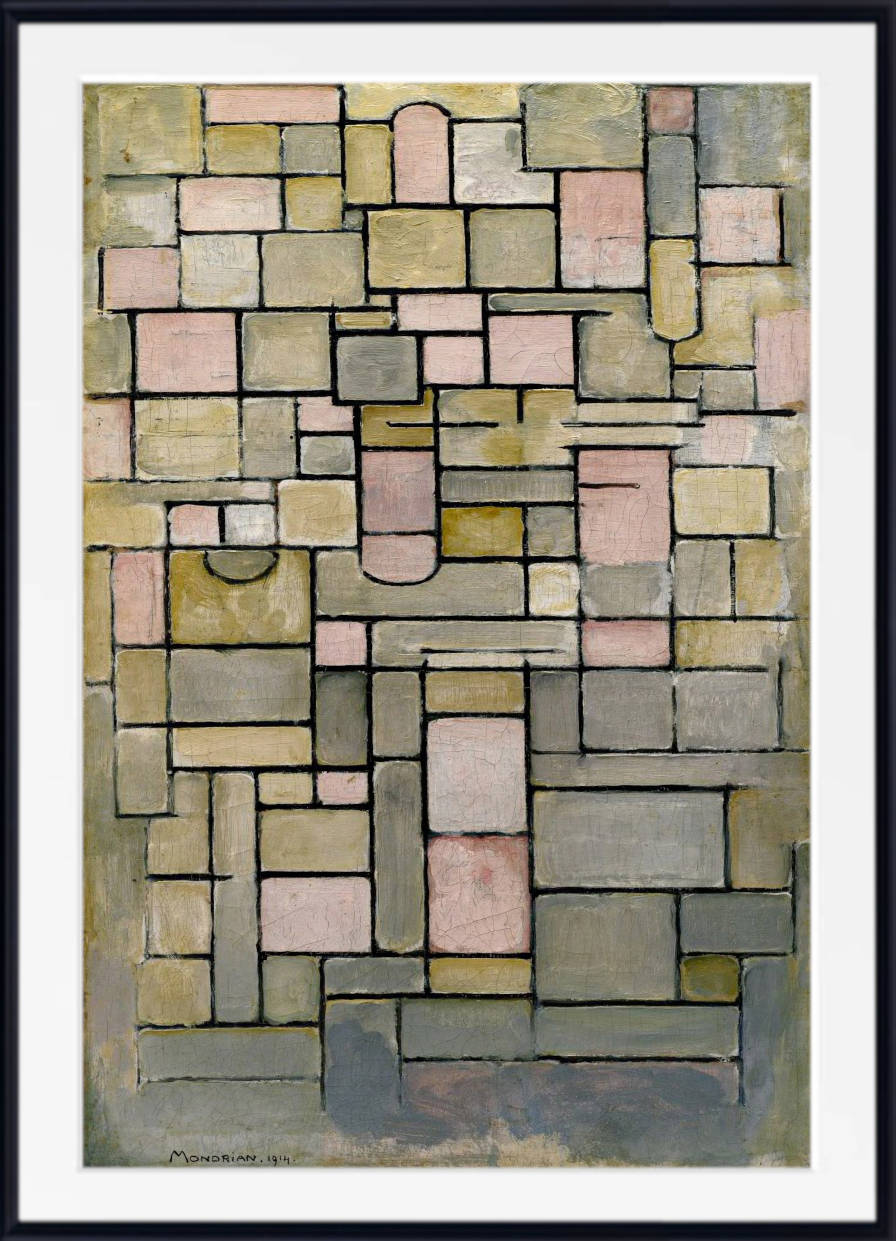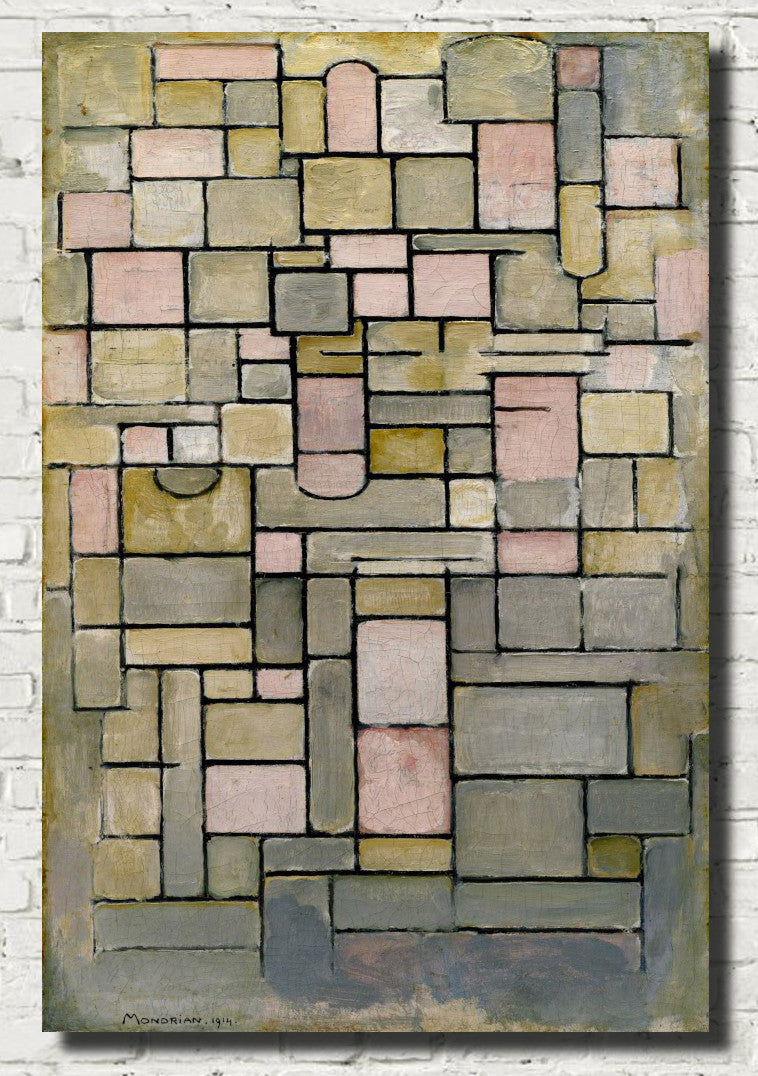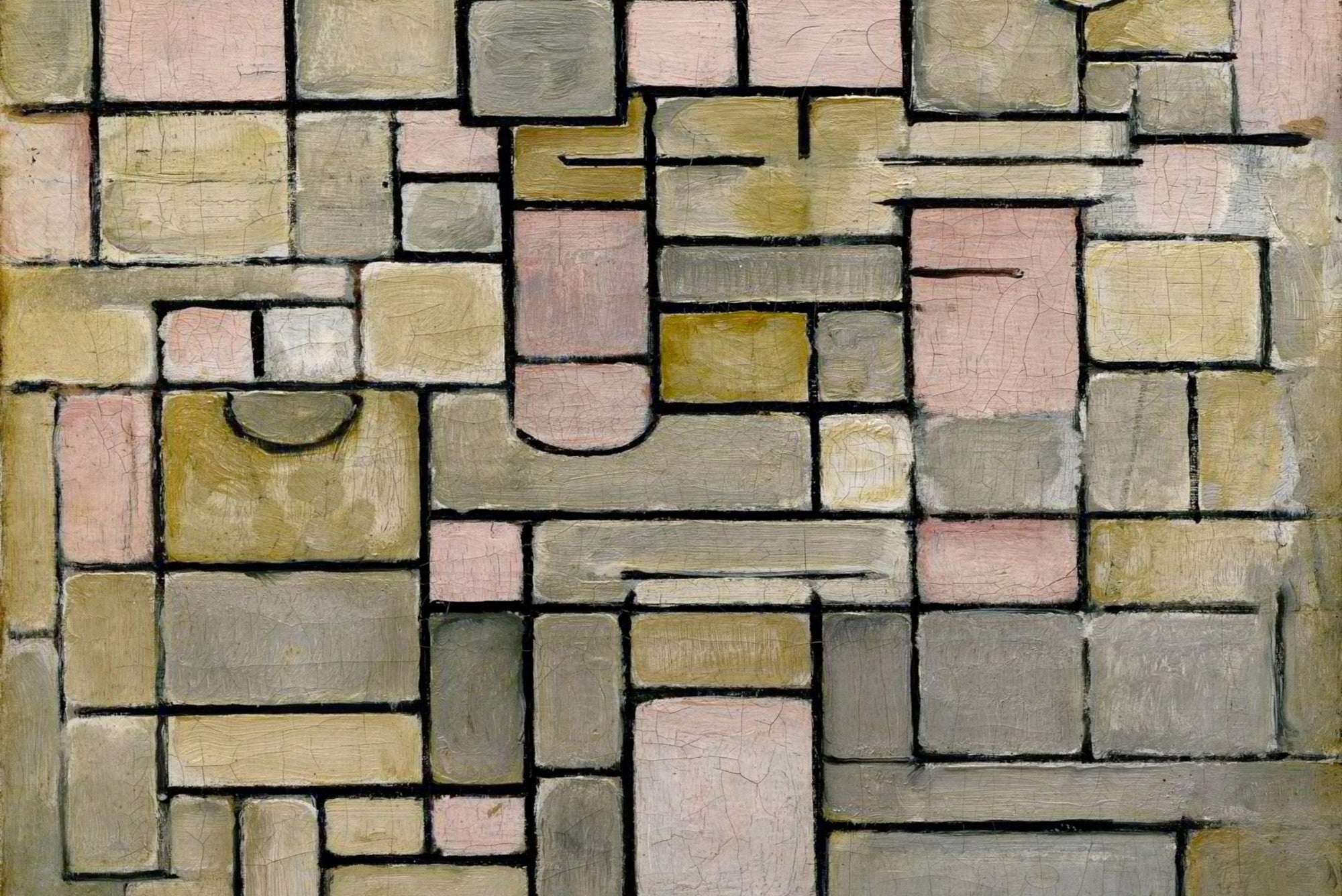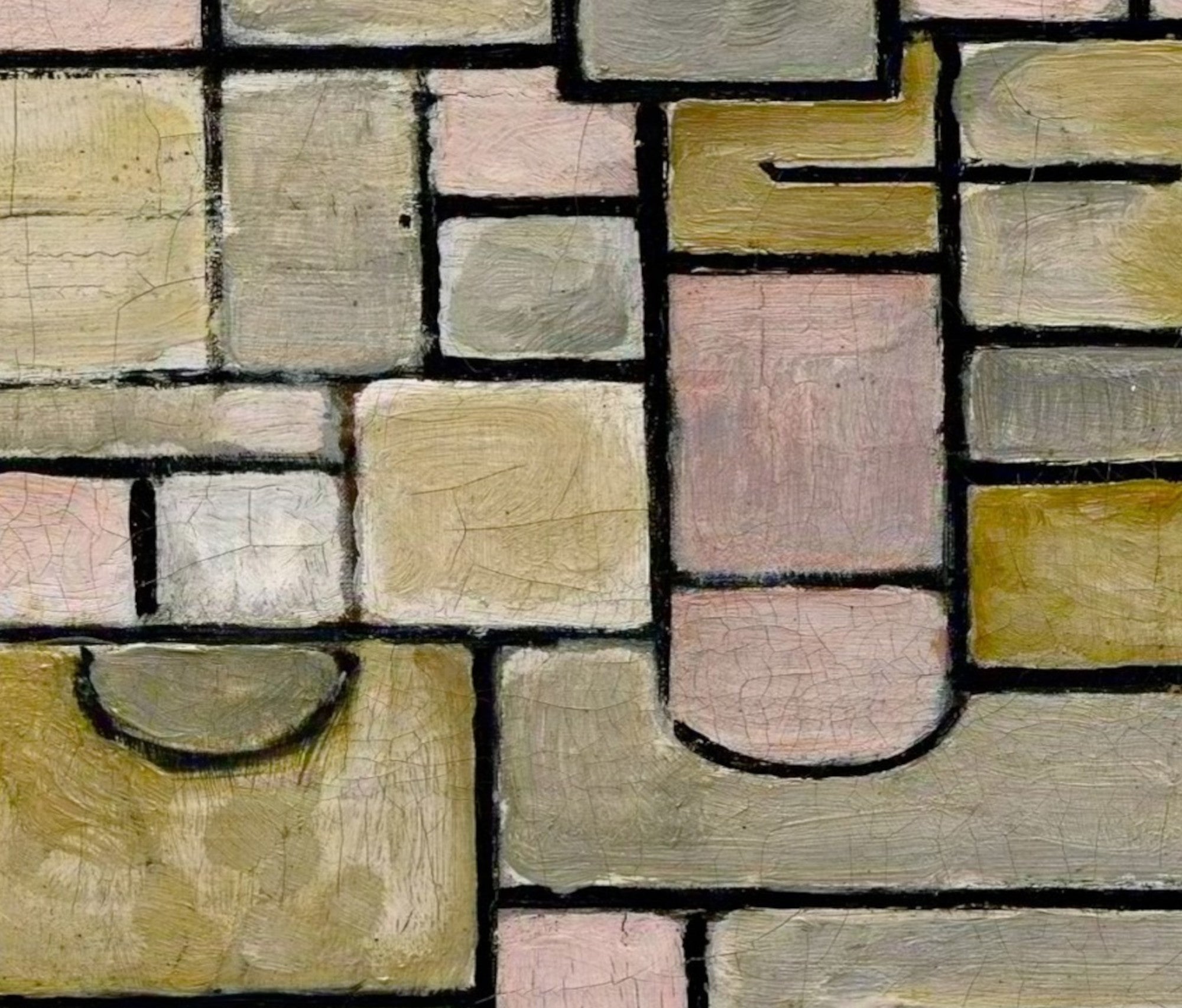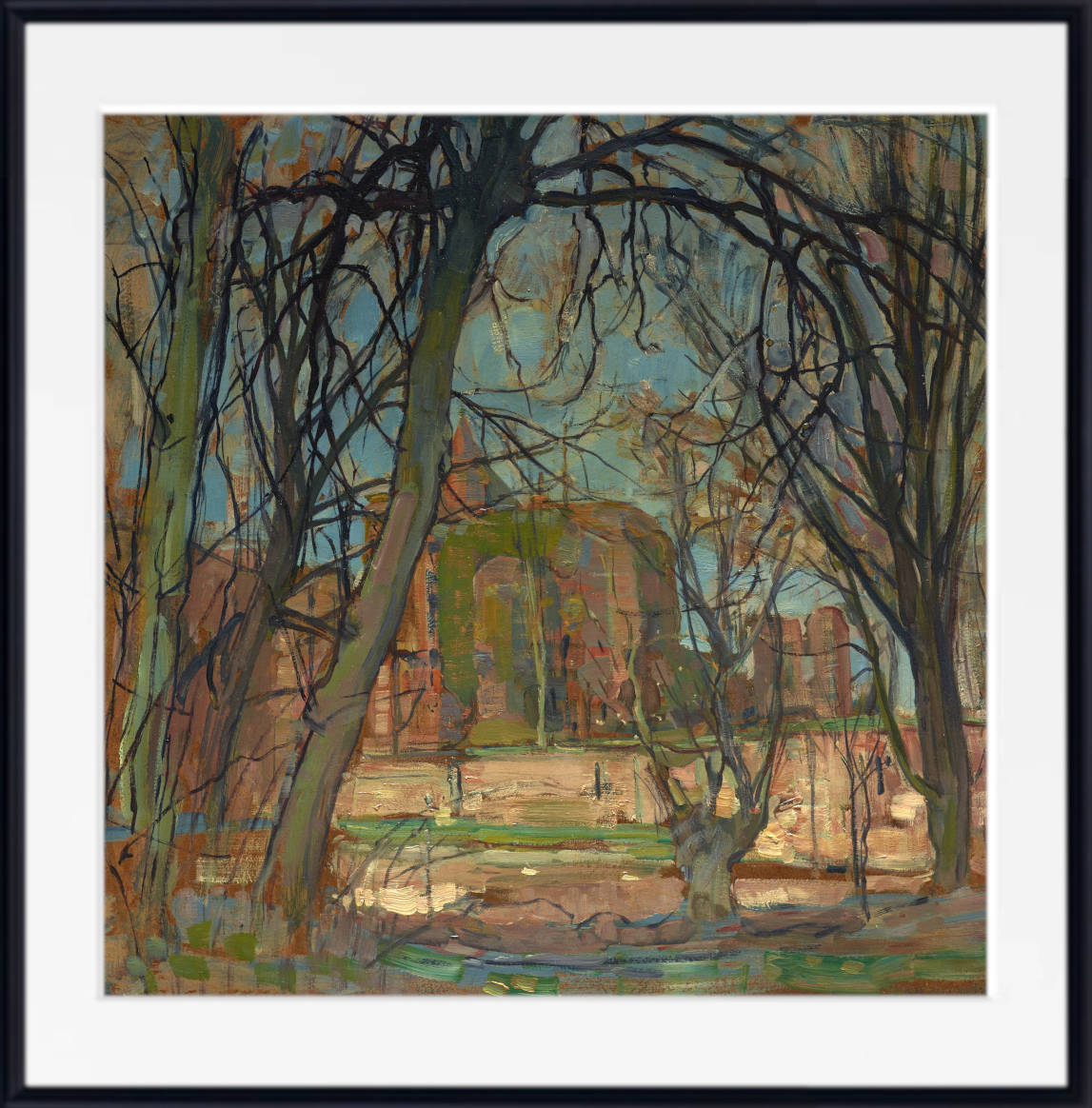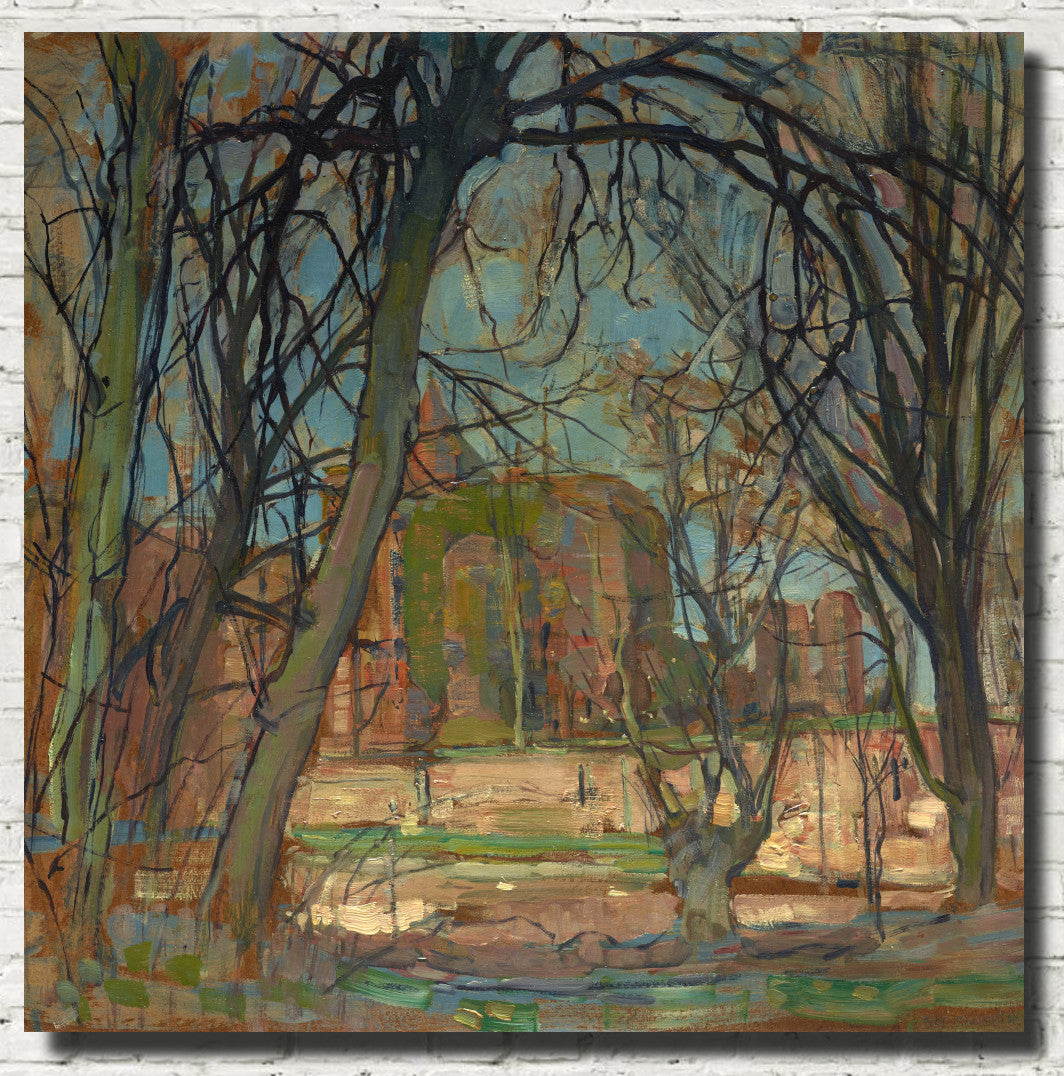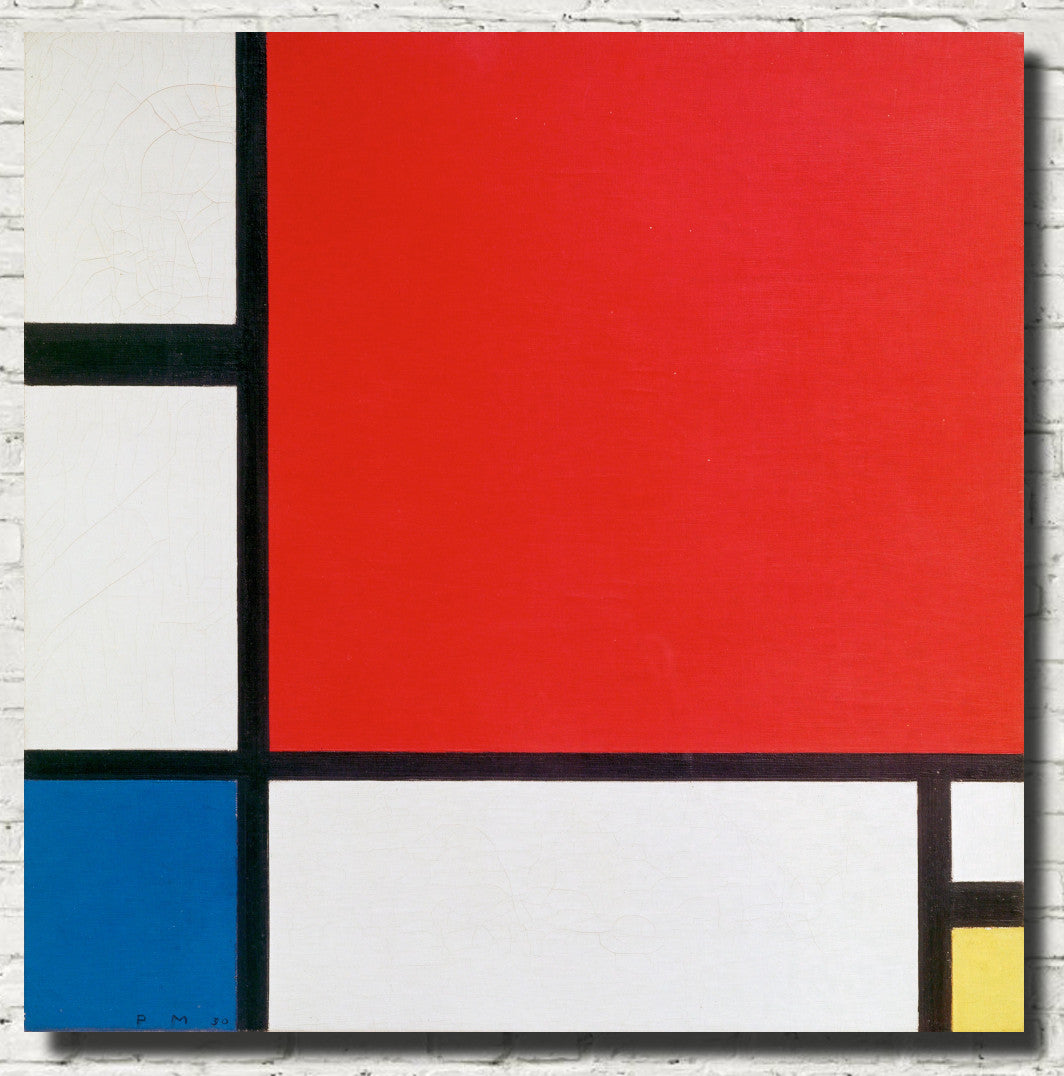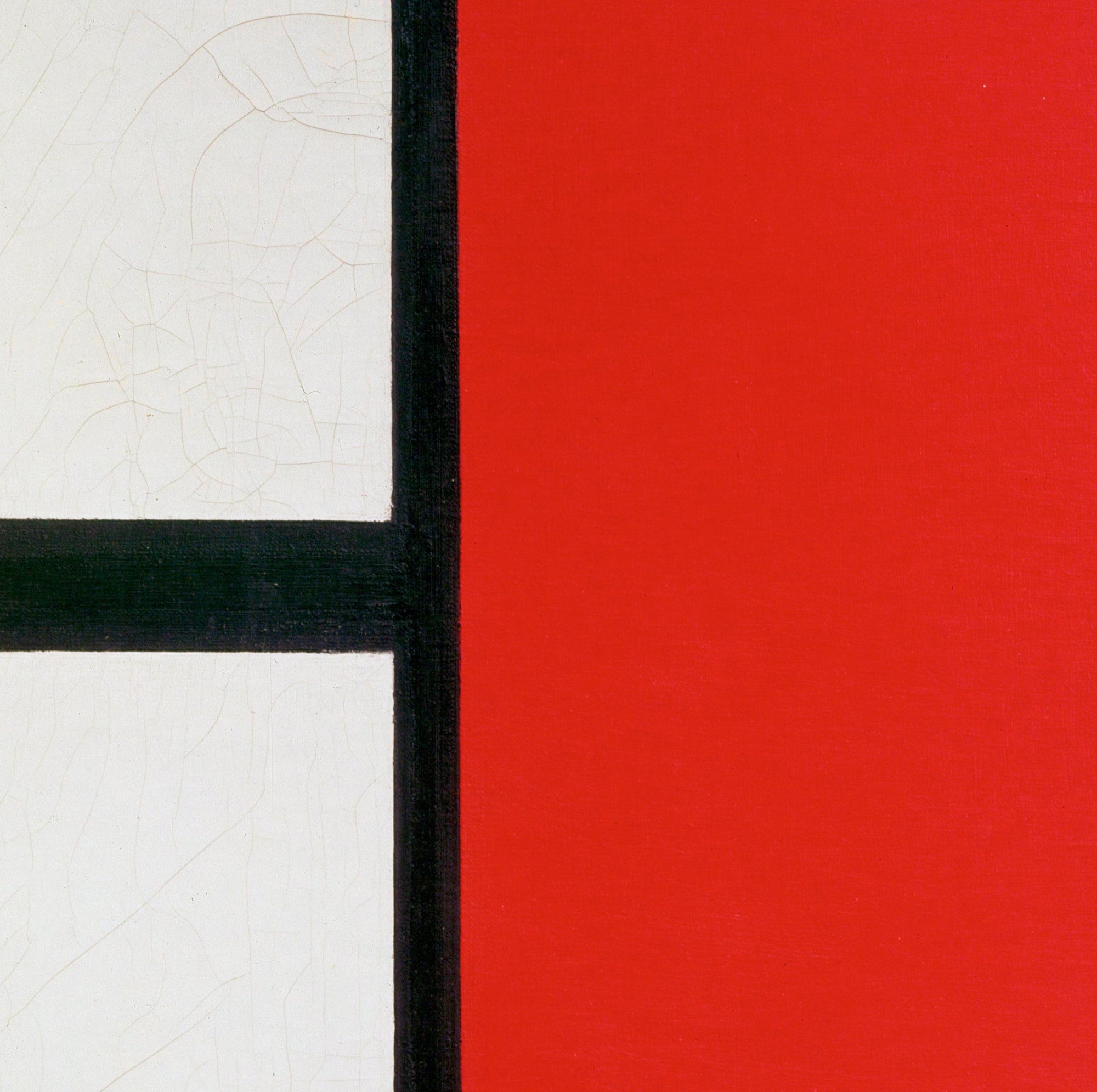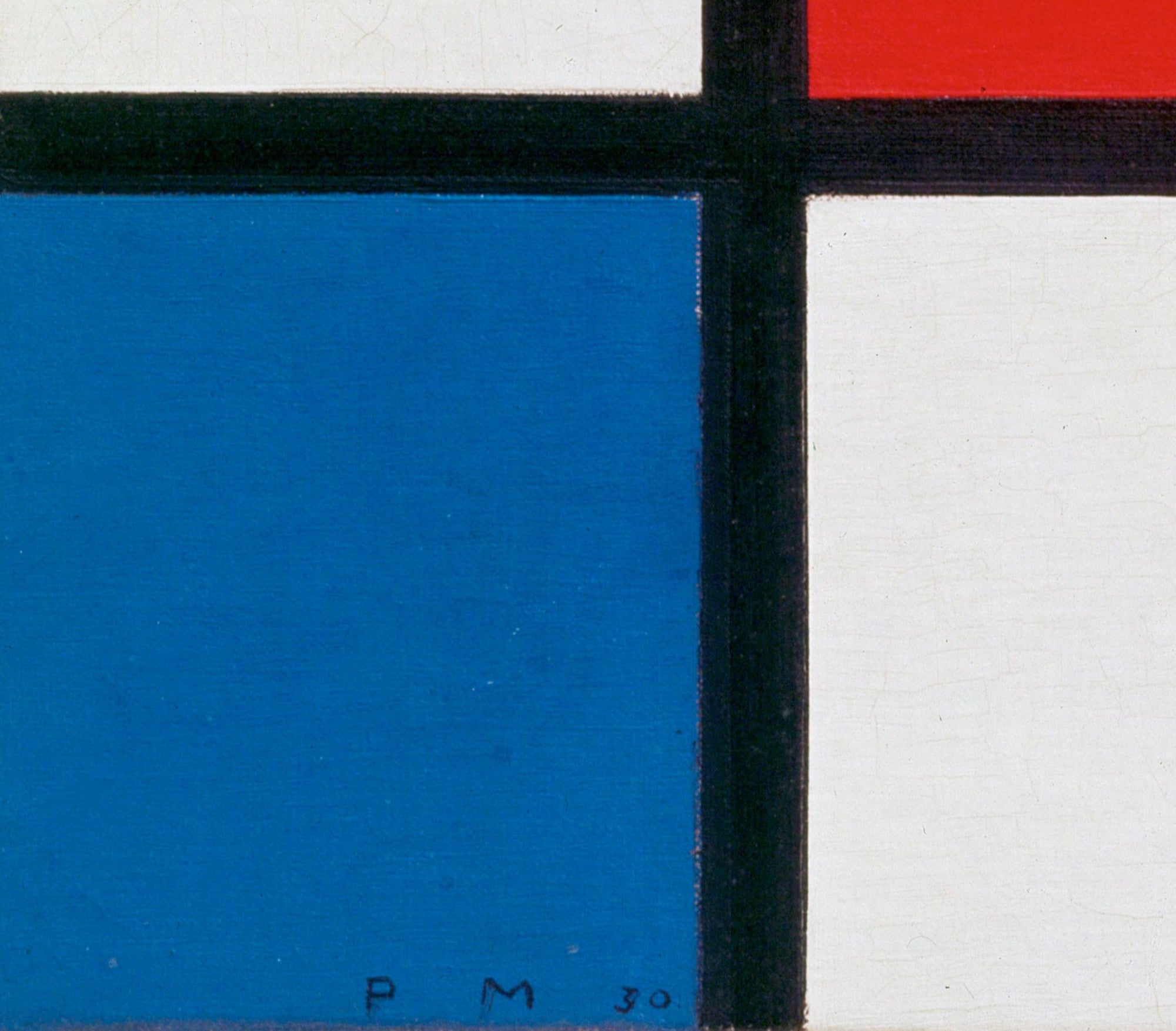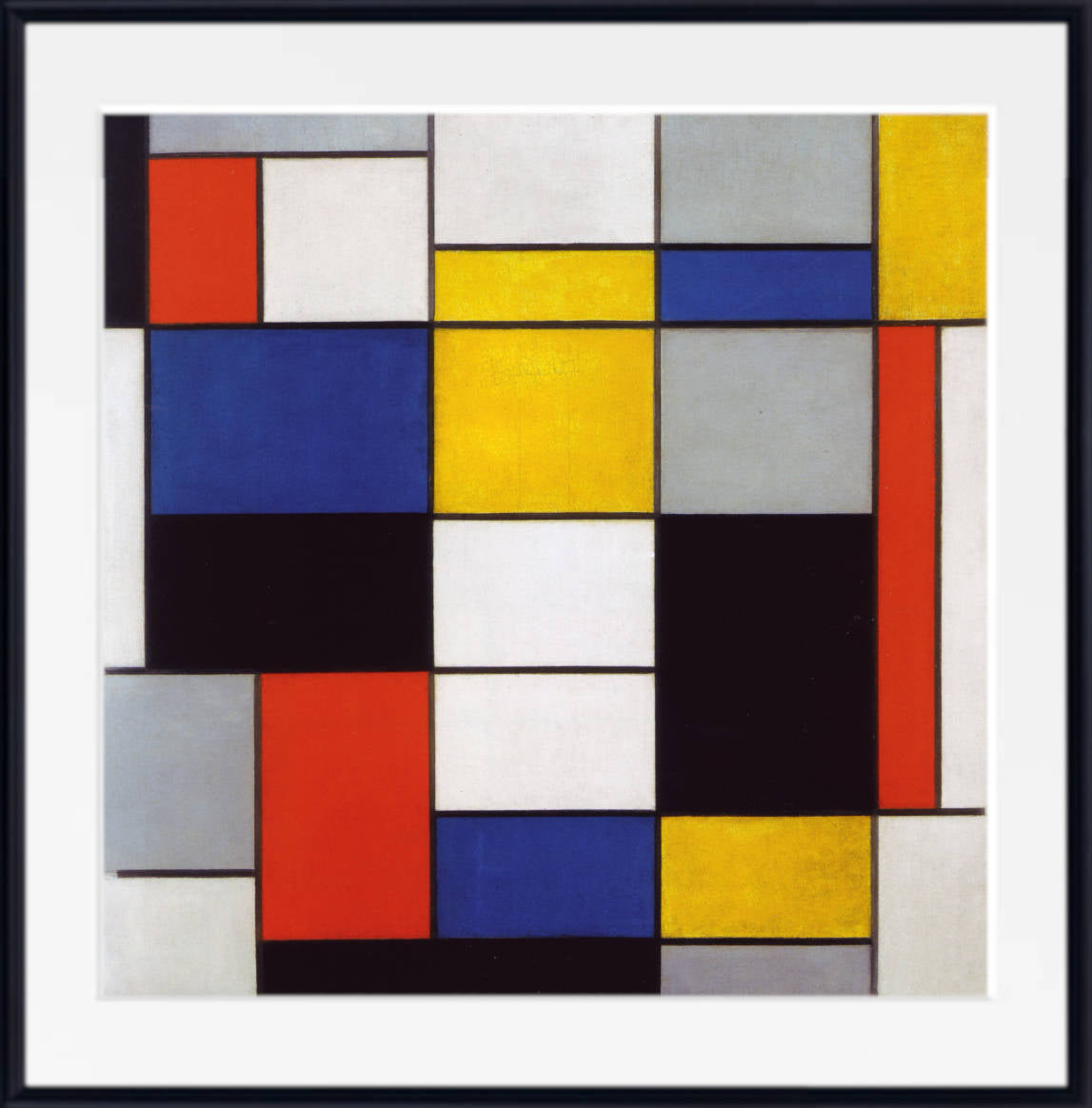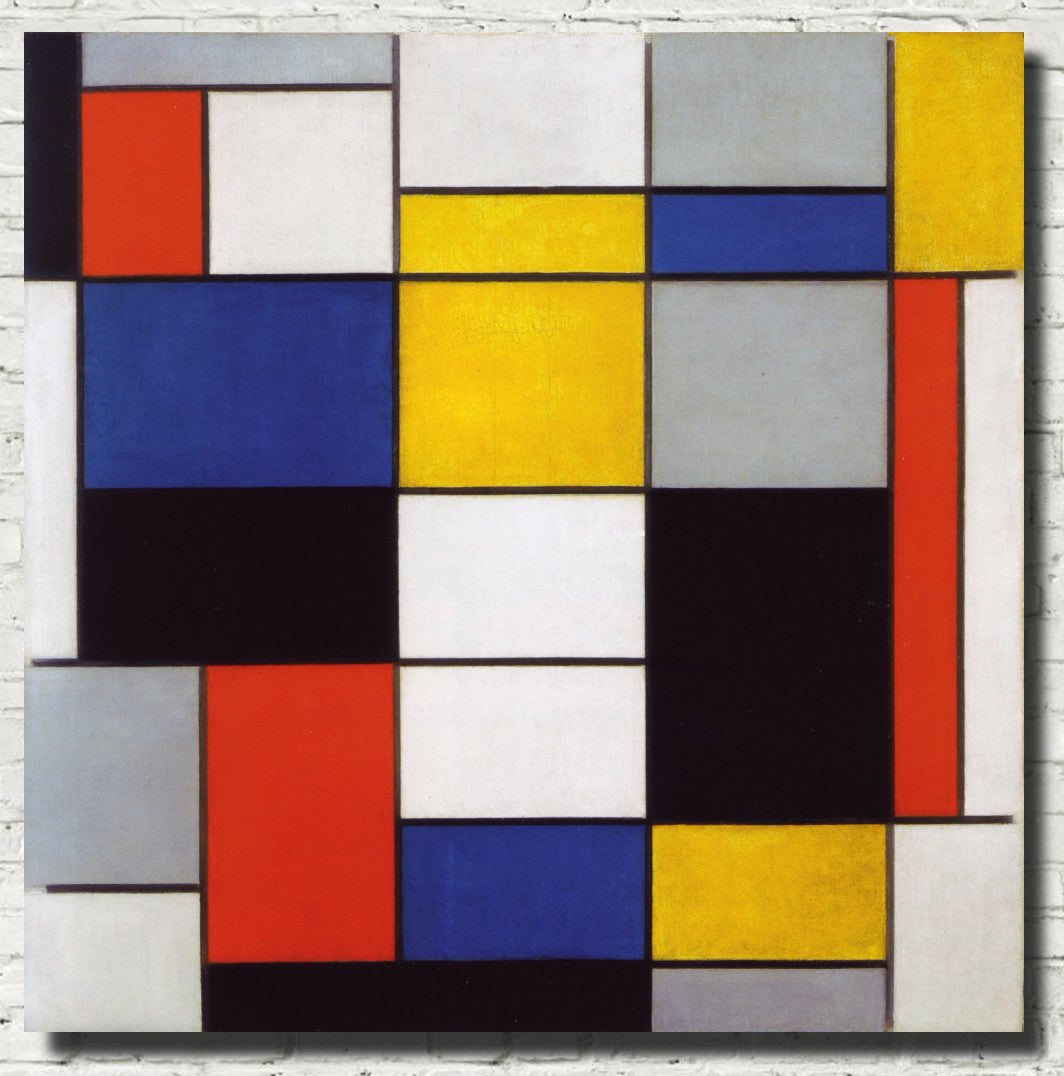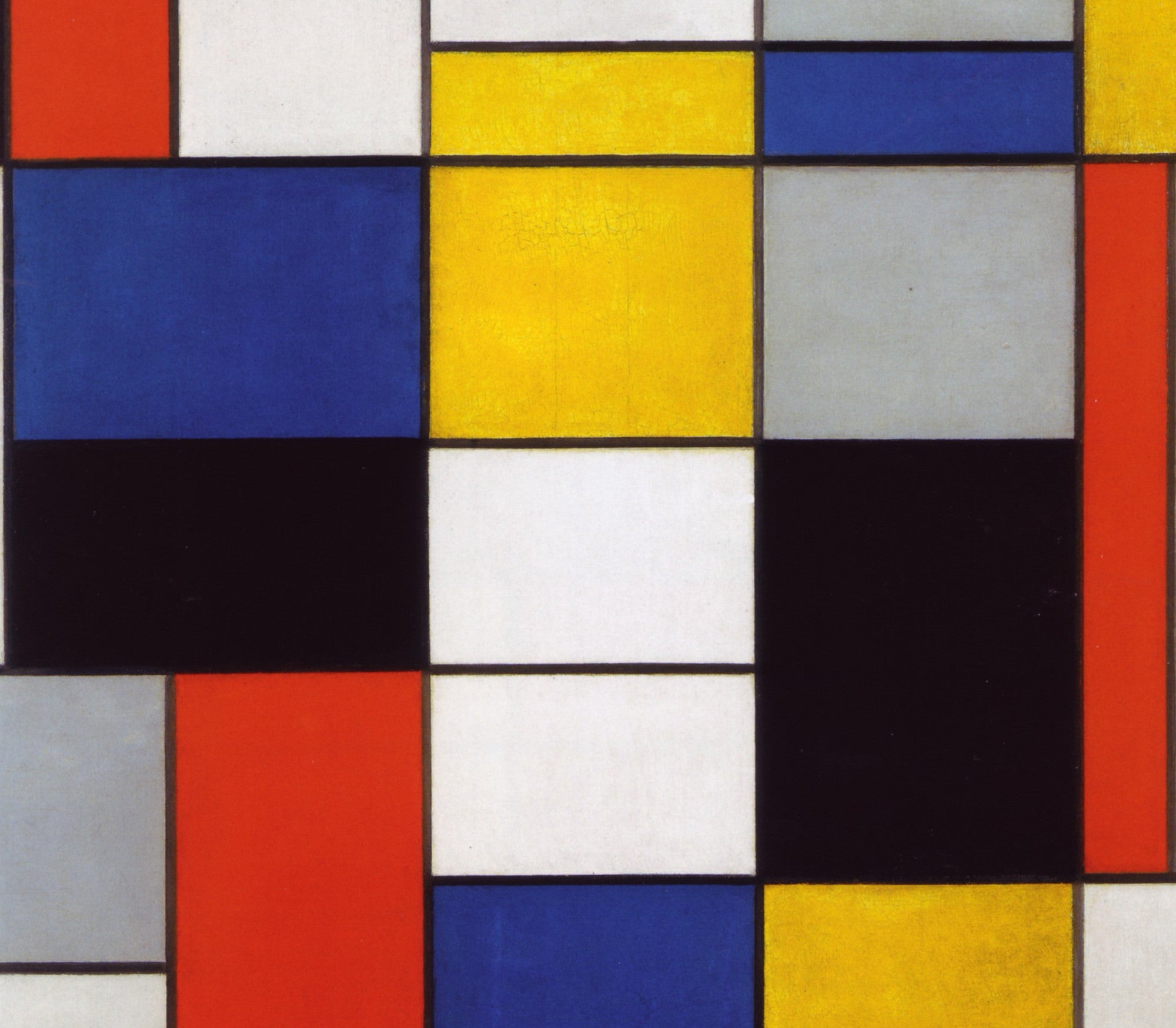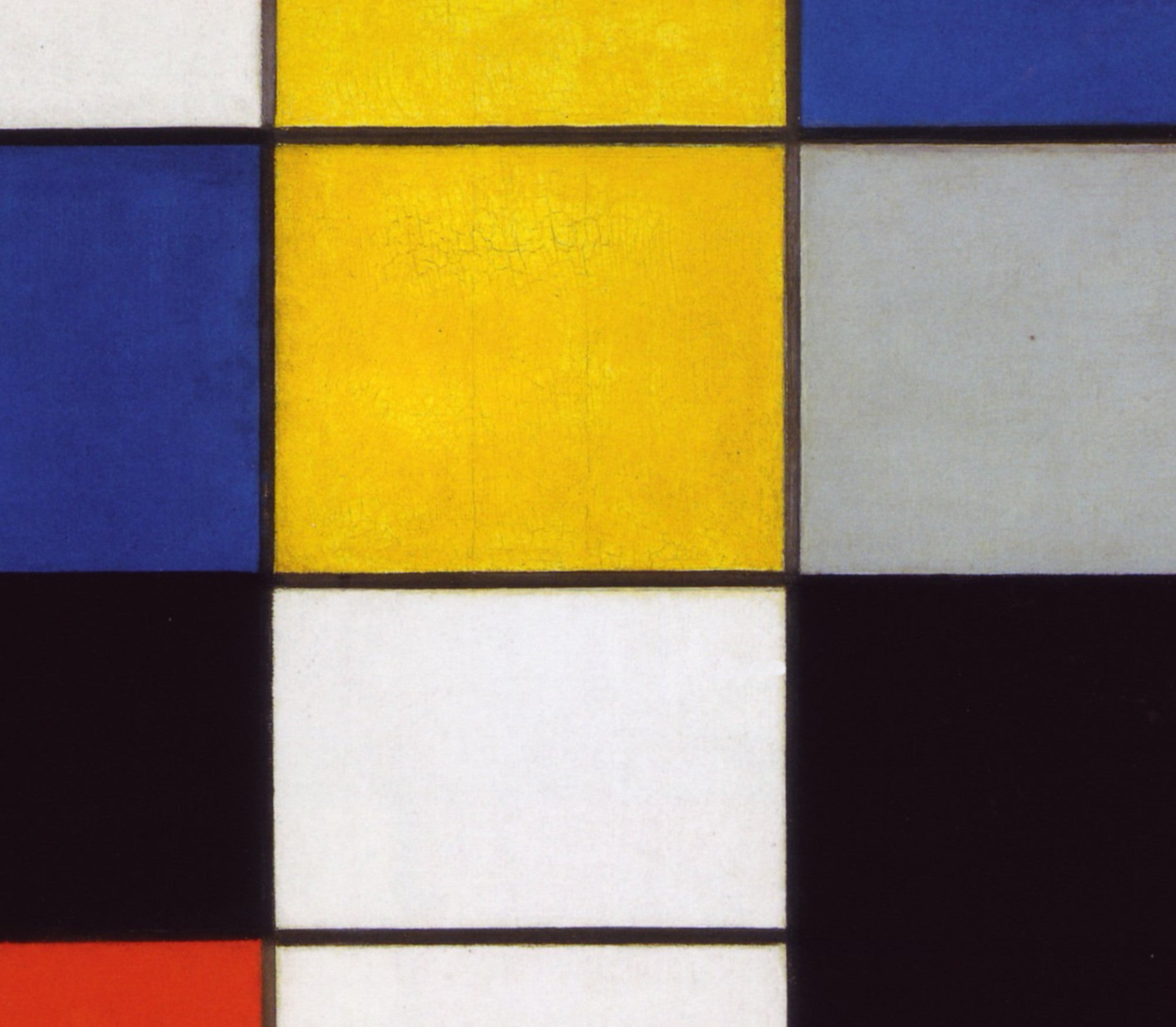De Stijl- Mondrians rejection of nimesis
Piet Mondrian (1872-1944) was a Dutch artist whose early works had an impressionist leaning. Mondrian uses pure, glowing colors and expressive brushwork under the influence of pointillism and Fauvism. The still life images, the landscape design work, and other scenes which he depicted in his early career, all had threads of this style this style, although his palettes during this period are more akin to the ochres, russets and browns of Rembrandt paintings.
n the first decade of the 20th century, Piet Mondrian began to make a transition in his style. His works start moving towards a pointillist and cubist style, as well as other abstract mediums that he engaged in at this early stage of his career. During that time, Dutch artists were increasingly aware of the radical works of Paul Cezanne and of the Cubist painters. Active in avant-garde circles, Mondrian was very influenced by the new art movement happening in Paris. In 1911 he saw for the first time the early Cubist works of Pablo Picasso. He was profoundly impressed. Almost immediately he began to adopt the concept of Cubism to his own use.

In the summer of 1914 Piet Mondrian returned to the Netherlands to visit his father, who was seriously ill, and the outbreak of World War I prevented him from returning to Paris. During this period, when he was at home and in Holland, he decided to work on an abstract art form which later on was classified as neoplastic style. The work which he produced during this period was depicted by lighter colors, simplified color selection, and forms that were balanced in their compositions. He also developed work that delved into the spiritual realm, and created more of a connection with religion, and his faith, as opposed to the prior works which were not focused on this point.
Once the war had come to a close, Piet Mondrian decided to return to Paris; upon his arrival, he began to work with Theo van Doesburg, as well as other famous artists in the area, and this is when they developed the De Stijl movement which was quite famous, and is possibly what Piet Mondrian is most well known for during the course of his extensive career. The group was formed in 1917, and it extended the aesthetic principles to architecture, sculpture, canvas, and graphic art design which Piet Mondrian followed. Upon disagreement with van Doesburg, about the use of diagonal lines in painting and artwork, Piet Mondrian decided to leave the group, and to start to work on new movements, and new forms of art he had not really entered in to in the past.
In 1931, Piet Mondrian joined the Abstraction-Creation line, which was more open to new styles, to new techniques, and to a difference in styles of work, which the artists would create. In 1932, a major retrospective exhibition of Mondrian's work was held at the Stedelijk Museum, in honor of the artist's 60th birthday. It was around this time that the painter began to be fascinated with the idea of the line and dismantling the very definition of painting. Drawing and draughtsmanship - exemplified in the line -, he argued, had always lain at the heart of painting, from the Renaissance artists to the Impressionists to the Modernists, and no one had ever thought to challenge that. When World War II began, Piet Mondrian decided to make the move over to London, and he eventually wound up in the US, living in New York. In 1942 he held his first solo exhibit; this was only a few years prior to his death in 1944. The work was presented in a large gallery in NYC, and was accepted by visitors as well as his peers in the art world. In addition to being a celebrated artist, and founder of different art groups and reforms, Piet Mondrian also wrote a number of pieces during his career. He had many of these pieces published. His writings dealt with Neo-Plasticism and how the art form had changed, and with abstract work in general. He published a number of theoretical texts during the course of his life, and they were published in various magazines and other art articles, during the course of his career. Mondrian called his style Neo-Plasticism or "The New Plastic Painting", Mondrian uses the term "Plastic" to refer to the plastic arts - media such as sculpture, that molds three-dimensional form, or, in Mondrian's case, painting on canvas.
Due to his appeal with the different forms, and his ability to create work that touched so many, Piet Mondrian is one of the well-known artists who began his work early in the 20th century. Although he was born outside of the US, he did eventually make his way to the Western World, and was able to become quite famous in his own right, for the quality and styles that he took on with his work. He is not only known as a famous abstract painter in the US, but also in his home town in Amsterdam, and in Paris where he made a brief stay, to learn about the different forms and artists he was interested in. The Paris Studio of Mondrian that he established for creating some of the best artistic gems has been made iconic, which serves as an inspiration to the modern painters. More specifically, the wall works that Mondrian brought to the fore can never be ignored for sure. Tate Gallery in London houses one of the best works created by Mondrian every by experimenting with the latest color combinations. Perhaps, this has proved to be a major asset of his in later part of his life. Precisely, one of his paintings titled Composition with Yellow, Blue and Red mesmerizes art lovers still because of the unique freshness it has got. In fact, there are such countless observations of Piet Mondrian that are known to make a huge impact upon the emerging painters easily.

Piet Mondrian Composition in amodern living room
Famous Mondrian Art Quotes
- Intellect confuses intuition.
- To approach the spiritual in art, one will make as little use as possible of reality, because reality is opposed to the spiritual.
- The truly modern artist is aware of abstraction in an emotion of beauty
- All painting - the painting of the past as well as of the present - shows us that its essential plastic means we are only line and color.
- In past times when one lived in contact with nature, abstraction was easy; it was done unconsciously. Now in our denaturalized age abstraction becomes an effort.
- Art is not made for anybody and is, at the same time, for everybody.
- The emotion of beauty is always obscured by the appearance of the object. Therefore the object must be eliminated from the picture.
- The colored planes, as much by position and dimension as by the greater value given to color, plastically express only relationships and not forms.
- Curves are so emotional.
- Everything is expressed through relationships.
- The position of the artist is humble. He is essentially a channel.
- In art the search for a content which is collectively understandable is false; the content will always be individual.
- Every true artist has been inspired more by the beauty of lines and color and the relationships between them than by the concrete subject of the picture.
- It is possible that, through horizontal and vertical lines constructed with awareness, but not with calculation, led by high intuition, and brought to harmony and rhythm, these basic forms of beauty, supplemented if necessary by other direct lines or curves, can become a work of art, as strong as it is true.
- The purer the artist's 'mirror' is, the more true reality reflects in it. Overseeing the historical culture of art, we must conclude that the mirror only slowly is purified. Time producing this purifying shows a gradual, more constant and objective image of reality.
- Nature or, that which I see, inspires me, puts me, as with any painter, in an emotional state so that an urge comes about to make something, but I want to come as close as possible to the truth and abstract everything from that, until I reach the foundation, still just an external foundation, of things...
- Reality manifests itself as constant and objective - independent of us, but as changeable in space and time. Consequently, its reflection in us contains both properties. Mixed up in our mind, these properties are confused and we do not have a proper image of reality.














